



























Samantha Facey freight and wellbeing at the forefront


Laura Reardon New approach to risk revolutionises light rail safety









EXCLUSIVELY FOR RAIL INDUSTRY LEADERS



Nigel Wordsworth What will the General



RUPERT LOWN
Running a safe railway


ANDONHEALTH SAFETY




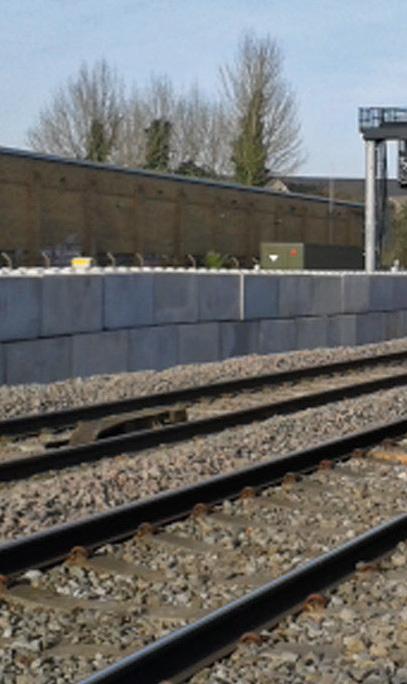
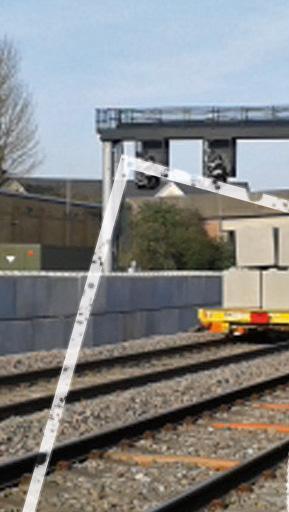



interlocking blocks and barriers








Workforce protection barriers avoiding all line closures with adjacent line open





Rockfall prevention with our multi-purpose Jersey barriers



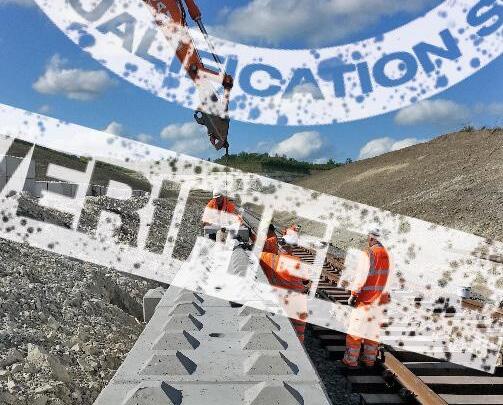


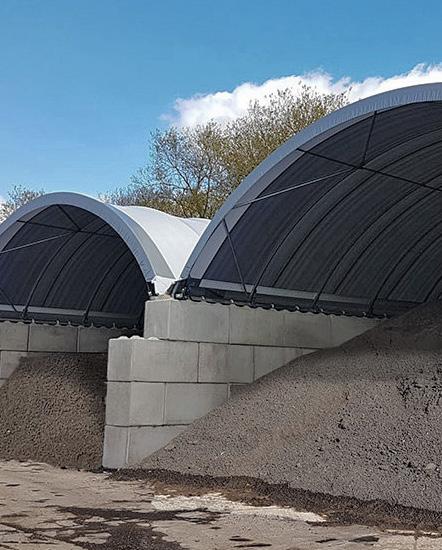


Large ballast bays with walls constructed from our Legato interlocking blocks






Large scale embankment retention using the versatile Legato blocks







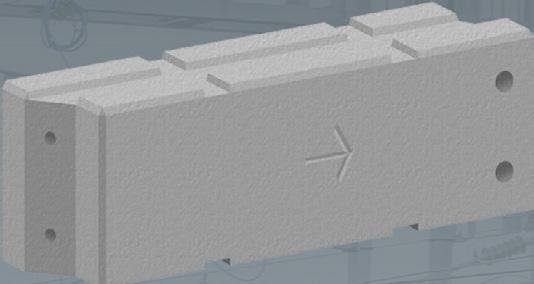











Hoarding stabilisation utilising Elite Duo interlocking blocks






Workforce safety refuges built from Elite Duo blocks




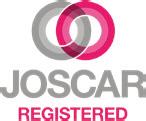

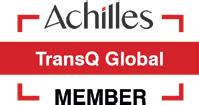
For more information phone 01952 588 885 or browse www.eliteprecast.co.uk or email sales@eliteprecast.co.uk




Everywhere on rail networks Elite products are seen in use British made Suppliers to 2012 London Olympics, 2014 Glasgow Commonwealth Games and approved suppliers to Tideway, Crossrail and HS2 (fully compliant transport) Get on track with Elite
KM 642263 KM 658166
Ensuring a safe railway
elcome to the latest edition of Rail Director. I’m writing this as momentum gathers ahead of the General Election. Earlier this year I was at the Connected Place Summit when Lord Hendy said, “you won’t find a political party who doesn’t want to invest in the railway” and that is certainly the case in the party manifestos.
It is good to see rail features strongly, evidence of the importance of UK rail in delivering improvements in economic and productivity growth. I hope the rail industry can take confidence from the commitment the political parties appear to have to focus upon rail for the good of the country, and the near universal agreement from the parties on the need for rail reform. Let’s hope that with this will come a long-term pipeline, something the industry is crying out for. For more about the election please take a look at the article written by Nigel Wordsworth on page 12.
This month, the magazine is themed around health and safety, something that is so important and should never be underestimated. ‘Everyone home safe every day’ is the vision from Network Rail and one that we all share, with everyone having a responsibility to behave safely and challenge unsafe behaviours and conditions when we see them.
The cover feature is an interview with Network Rail’s Chief Health, Safety and Wellbeing Officer Rupert Lown, who spoke about his aspiration to see people arriving home in a better condition and the commitment of ensuring that people are treated well and go home safe. He reflects on the progress made during Control Period 6 and the aims and aspirations for the next five years.
What has been particularly heartening while pulling together this edition has been hearing about the collaboration between organisations to ensure the best in safety practices, and how they learn and develop initiatives together. Take the Freight Safe Programme as one example, which brings together key stakeholders to build on rail freight’s strong safety performance. You can read an interview with Chair of the Steering Group Geoff Spencer, on page 22.

There is also a real passion to ensure the communities the railways serve are safe. The Rail Safe Friendly programme has been backed by nearly 6,000 UK schools and 90 industry partners from across the sector in little over a year. Managing Director Stuart Heaton explains more on page 56. The Rail to Refuge initiative has recently marked its fourth anniversary, with statistics revealing dozens of women, children and men are using the free train travel to flee domestic abuse every week. You can read more about this on page 50.
Overall, I think we can all take a lot of comfort and pride in the efforts of the industry and its people to ensure it is a safe industry, constantly striving to ensure it becomes even safer. A big thank you to everyone who been involved in this month’s magazine and to everyone in the sector for playing their part in making sure everyone returns home safe every day.
All the best,





 Danny Longhorn Editor
Danny Longhorn Editor
We can all take a lot of comfort and pride in the efforts of the industry and its people to ensure it is a safe industry, constantly striving to ensure it becomes even safer
Rail Director magazine and Railbusinessdaily.com are assets owned by the Railway Industry Association. Railbusinessdaily.com delivers more than 70 stories a week to +73,000 rail industry professionals in our daily 7am newsletter. If you have not already subscribed, it’s free and it’s easy to do so at www.railbusinessdaily.com, please also encourage your colleagues to do the same. This is the very best way to keep abreast of what is happening on the UK’s railways. There is a digital copy of Rail Director on our website.















Lifting and inspection equipment you can rely on for all maintenance of rail vehicles.













With over 40 years’ experience of high quality, heavy duty vehicle lifting, Totalkare combines world class products with industry leading support to facilitate effective maintenance and repair.




W
RELIABLE SYNCHRONISED MOBILE LIFTING JACKS SERVICING TRAINING LIFTING
BOGIE LIFTS COMPLIANT WITH DIFFERENT RAIL GAUGE SYSTEMS 6,000 - 14,000KG HYDRAULIC LIFT PLATFORM HEAVY DUTY
LIFTING JACKS & BOGIE LIFTS
INTRODUCTION 3 June 2024



6
Everyone home safe every day
Network Rail’s Chief Health, Safety & Wellbeing Officer explains more about the work taking place to ensure the industry is safe for workers, customers and members of the public who interact with the railway
Promoting good mental health
Poor mental health amongst employees is becoming more common, and the railway is taking steps to combat the problem
12
What will the General Election bring?
As the main political parties gear up for the General Election, Nigel Wordsworth considers what effect the result will have on the railway
22 Enhancing the reputation of rail freight
The Freight Safe Programme has recently been launched, bringing together stakeholders to build on rail freight’s strong safetyperformance. Chair of the Steering Group, Geoff Spencer, discusses the priorities
26 Learning from the past
A new report gives useful insights into historical railway accidents and compares them with current safety challenges 28
New approach to risk revolutionises light rail safety
Laura Reardon, the LRSSB’s Head of Safety Risk Management, explains how data is driving improvements in light rail safety
36 Putting health, safety and wellbeing at the forefront
Samantha Facey, Health, Safety and Security Director at Govia Thameslink Railway, writes about how health and safety is broken down at the operator
38
Inspiring array of activities celebrates Community Rail Week 2024
Jools Townsend, Chief Executive of Community Rail Network, looks back on the More Than a Railway campaign, which marked this year’s Community Rail Week 42
Building a listening culture
Director of CIRAS confidential safety hotline, Catherine Baker, shows that there is more to listening well than we might think

June 2024
10
28 36 82 CONTENTS 4
46 150 years of championing the UK railway industry
Railway Industry Association (RIA) will be celebrating its sesquicentennial anniversary next year. It is marking the occasion with the RIA 150 Year Festival next month
48 A lifesaver for hundreds of people escaping domestic abuse
The Rail to Refuge initiative has marked its fourth anniversary, with statistics revealing dozens of women, children and men are using the free train travel to flee domestic abuse every week
56 Spreading the message of rail safety
The Rail Safe Friendly programme has been backed by nearly 6,000 UK schools and 90 industry partners from across the sector in little over a year. Its Managing Director Stuart Heaton reflects on its success
58 Driving safety together
Rail Safety Week Lead Elaine Clark and Steering Group Chair Simon Higgens MBE explain more about this year’s event
70 Preserving and protecting the UK’s railway heritage
The Railway Heritage Designation Advisory Board recently launched a UK-wide consultation of heritage railways and museums to help inform the board’s new collecting policy and to protect unique railway artefacts. Chair Tim Dugher writes more about the group’s work
74 What’s the story with whitepapers?
RBD Community’s Member Relations & Content Manager Fiona Broomfield tackles one of the most debated of marketing tactics
82 Movers and Shakers
Featuring a question and answer with Jamie Zineldin, who has been appointed Operations Director at McGinley Support Services, in what has been a 25-year journey at the company
86 More than 30,000 rail staff trained to help prevent suicide
Samaritans deliver a one-day Managing Suicidal Contacts course to rail staff, either virtually or face to face, training them on how to identify, approach and support a potentially suicidal person


June 2024
01132 082620 Sales: 020 7062 6599 Editor Danny Longhorn danny@railbusinessdaily.com Designer and Production Manager Debbie Nolan Writers Rosie Crampton Fiona Broomfield Nigel Wordsworth Advertising Team Christian Wiles chrisw@railbusinessdaily.com Amy Hudson amy@railbusinessdaily.com Published by RBDMedia (an asset of the Railway Industry Association) trading address 15 Mariner Court, Calder Park, Wakefield WF4 3FL Printed by The Manson Group © 2024 All rights reserved. Reproduction of the contents of this magazine in any manner whatsoever is prohibited without prior consent from the publisher. For subscription enquiries and to make sure you get your copy of Rail Director please ring 01132 082620 or email info@railbusinessdaily.com. The views expressed in the articles reflect the author’s opinions and do not necessarily reflect the views of the publisher and editor. The published material, adverts, editorials and all other content is published in good faith.
Tel:
CONTENTS 5
Image: Network Rail,
Shutterstock
Rupert Lown, Network Rail’s Chief Health, Safety and Wellbeing Officer, reflects on the progress made during Control Period 6 (CP6), and the journey ahead in CP7
Running a safe railway

There are four objectives for Network Rail to achieve during the next five-year control period when it comes to safety; to reduce passenger safety risk, reduce health and safety risk to the workforce, reduce public safety risk and effectively control threats to railway security.
It is a task being led by Network Rail’s Chief Health, Safety and Wellbeing Officer Rupert Lown, the man whose role is centred on keeping people healthy and safe around the railway.
“My job is to try and help keep people safe and I want them to be healthy and safe and that is what drives and motivates me,” he said. “We have been doing that across Network Rail, but I only play a very, very small role in it, it is down to a fantastic team who are passionate and knowledgeable.
“The task shouldn’t be underestimated. There aren’t many industries that have to think about a
workforce, a group of passengers and the public to the extent that we do in the context of 22,000 miles of track, five million lineside neighbours, tens of thousands of buildings, 30,000 bridges, and 5,500 level crossings.
“Yet despite the complexities, it still runs remarkably efficiently and with a very high safety performance which is achieved thanks to a lot of very professional people doing their jobs to a very high standard. It is pretty phenomenal.”
A reflection on the last five years
The UK railway is one of the safest railways in Europe, and Network Rail finished CP6 with its, and the rail sector’s, lowest ever workforce fatalities and weighted injuries (FWI), with no fatalities to its workforce or its supply chain contractors who reported into the organisation in 2023/24. “It is brilliant that last
year there were no fatalities to our workforce and that we’ve reached our lowest FWI, but we have to remember the tragic incidents at Margam East Junction, Surbiton and Eastleigh,” said Rupert. “People have died during CP6 and that is completely unacceptable and something we don’t ever want to see happen. Collectively we have moved forward and got better but we can’t forget that people have come to work and not returned home.”
It hasn’t been an easy last five years, which started with the difficult legacy of the 2018 timetable and got no easier navigating through a pandemic, changes in passenger numbers and behaviours, industrial action, and the tragic passenger train derailment in Carmont. But collectively the industry has worked hard to learn from past safety incidents as well as the changing safety risks being faced in the future.
The start of CP6 saw Network Rail devolved into
SAFETY 6 June 2024
Images: Network Rail
five regional businesses, themselves split into 14 routes, aiming to better respond to, and work with train operating colleagues, the Welsh and Scottish Governments, combined and local authorities and funders.
“The industry has changed a lot and particularly from the Network Rail perspective has been adjusting to the world of devolution, something that everyone has responded to really well,” explained Rupert. “We’ve had those clear objectives which has kept everyone focused on ensuring we keep people safe and healthy, and keeping trains and freight moving.
“During CP6 the International Union of Railways found the UK to be the safest railway in its 38 countries. That is no mean feat and recognises the high quality standards, high quality staff, and that we continue to maintain those high standards ensuring we are continuing to operate at that high level.”
Network Rail began the control period with many working practices on tracks that would be familiar to our Victorian ancestors, but ended it having fundamentally changed the way it works, with one example being a 99 per cent reduction in putting workers out on the ‘live’ railway to act as lookouts.
“The progression and improvements we have made have been based upon us learning lessons and working hard to get to the root causes of events,” added Rupert. “We have confined the look-out flag to the museum, and we got rid of about one million work orders and four million tasks that we decided didn’t need to be done out on the track, which as a consequence has made us more efficient.
“We also brought in a new IT system around how we go out on track which has been working well, as well as other bits such as driving safely – which is particularly important when you take into account that we are one of the biggest fleet operators in the UK in terms of the number of vans and vehicles we own.”
Another big change has been a health and wellbeing policy which has seen occupational health brought in-house, with 22 in-house clinics around the country. This is an area which continues to develop, with work progressing in ensuring staff aren’t exposed to any carcinogenic substances.
“We are able to tailor the service to the staff and it means people get used to going to a location and being seen by our staff, and we are able to learn more about their health,” said Rupert. “A driver I personally have is that I want our workers to reach retirement and use their pensions, and to be in a reasonable health by the time they get to pension age.
“Like a lot of the population we suffer from the likes of high blood pressure, obesity and diabetes so we are working more to help people more and do what we can to reverse some of those conditions, or at least reduce the impact of some of those matters. This a really big step forward for us.”
From a public safety perspective, Network Rail has also been progressing its work around closing more level crossings, and a huge amount of work and campaigns around suicide, having particular success with collaborations with the likes of Samaritans and Scouts, as well as its own You vs Train campaign.
On the latter Rupert is under no
illusions that there are still too many suicides on the railway, but believes the preventative work is currently saving between 30 and 50 lives each year.
Trespass also continues to be a big issue on the railways with around 19,000 incidents each year, although there continues to be a huge awareness campaign in discouraging people going on the infrastructure, something that has helped to reduce the number of deaths from trespass.
A huge amount of work has and continues to take place around climate change, weather predictions and the impact of rainfall, wind, and the impact this can have on train services, something Rupert has said is underpinned by the Rail Safety and Standards Board precursor indicator model.
“We have some great predictive models around how we measure risk,” he said. “We can see the level of risk posed by track, that continues to go down, and our ability to maintain track and reduce rail breaks continues to get better and better. More work has also been done around hot weather precautions to understand how we can strengthen as temperatures increase, and what have we got to do to mitigate the risk a track buckles and other track defects, so we have changed our standards around that.
“With rainfall, we’ve been running rainfall predictor models, improving our weather alert systems. We’re trialling a tool on the West Coast Mainline at the moment around what the consequence of higher rainfall is and how do we predict what speed we are able to run a train service.
“The challenge for us is how do we continue to run a train service in more extreme weathers without increasing the level of risk to unacceptable levels. If we cancel services people will just jump into their



We’ve had those clear objectives which has kept everyone focused on ensuring we keep people safe and healthy, and keeping trains and freight moving
SAFETY 7 June 2024

cars and with the railway being 20 times safer than the road network the challenge is to keep the rail network running and operating so that the risk gap remains significant enough for us.”
The health and safety journey ahead Network Rail has recently started CP7, a five-year, £45.4 billion rail improvement plan to deliver a simpler, better, greener railway that provides the best level of train performance possible and that’s more geared-up than ever before to cope with the extremes of climate change.
From a safety perspective, Rupert has explained that the organisation will learn from past safety incidents as well as the changing safety risks being faced in the future, most notably the impacts of climate change.
Rail is using a safety bow-tie risk assessment framework, complementing its existing safety risk management approach, to assess the impact and mitigations from its planned asset management interventions. Technology is also being used to tackle the risk of dead or dying trees falling onto the line, and to detect objects on the line, and the system operator team will continue the Freight Safety Improvement Programme to fund schemes to address specific network-wide risks to freight safety, and install and renew tactile edges on platforms.
Explaining the plan when it comes to public safety risk, Network Rail has said it will continue its work with mental health and suicide prevention charity support partners and safety campaigns. Its level crossing strategy includes refreshed, simpler signage at crossings, innovative bridge solutions, state-ofthe-art CCTV and obstacle detection, and more stop lights letting people know when it is safe to cross the railway.
“When it comes to passenger risk there is going to be a really strong focus on earthwork renewals with £1.5 billion being spent over the next five years,” said Rupert. “We’ve got thousands of earthworks, so we continue to refine how do we find the right earthworks to renew and how do we monitor. We’ve got a lot of infrastructure monitoring equipment going in – GPS locators which are all linked up and hooked and when the earthworks start to move, they send warning signals. This then needs to be backed up with how we adjust our operational procedures to ensure we are good enough to recognise a shift in an earthwork and manage our train services accordingly.
“The monitoring kit it is going in across our track and our structures, progressing the ability of monitoring what is going on in real time to make sure the passengers are absolutely safe and the train services are running brilliantly, because we know what our assets are up to and they are being managed accordingly as a consequence of that.”
I want people to be arriving home in a better condition and our commitment should be that you get treated well and you go home safe; it is that simple and that is what my job is about
“We’ve got a really important safety vision which is ‘everyone home safe every day’ and everyone is every one, it’s passengers, public and workers,” said Rupert. “I absolutely want that to be achieved every day of the week. That is our desire, and we will do our level best to achieve that.”
From a worker perspective, an area Network Rail will develop is around the investment in technology to monitor the condition of its infrastructure, including using drones and online tools to remotely monitor assets and reduce the time workers are on the track. There will also be modernisation in how the organisation takes possessions, with the removal of detonators and stop boards, and the development of a new safety incident reporting and assurance system, which will bring safety and data into one system.
A £293 million investment is also being made in the Electrical Safety Delivery programme to deploy new technology to isolate the electricity to sections of the railway more quickly and safely.
Rupert said: “I will be absolutely ecstatic if there are no workforce fatalities. We achieved that last year, we didn’t the year before, so my hope is to make sure that all of our workers go home safe, that is number one.”
From a passenger safety risk perspective, Network
Message to the industry
With CP7 now well underway, Rupert is under no illusions about the challenges ahead, but is confident with everyone on the same page and with the same passion to ensure everyone goes home safe every day, that together the industry will continue to be one of the safest in the world.
He concluded: “I joined Network Rail more than a decade ago because of that safety vision of ensuring everybody does get home safe every day. I want people to be arriving home in a better condition and our commitment should be that you get treated well and you go home safe; it is that simple and that is what my job is about.
“Running a safe railway is at the heart of everything we do. Over the next five years we will continue to keep passengers and the public safe – on trains, at stations, using level crossings and around our network – as well as keeping our workforce safe and healthy. My message to the rest of the industry is to make sure that you understand your big risks and then work with others to achieve that aim of removing those risks. It is what we are all working to achieve, and something that will be done best by working together.”
SAFETY 8 June 2024


FIRST CLASS IN RAIL Rail industry specialists: A trusted multi-disciplinary team of rail experts, delivering end-to-end construction and maintenance projects, safely and efficiently, in the UK and Ireland. Civil Engineering Communications Electrification Permanent way Need help delivering your next project? 0845 450 4190 enquiries@pod-trak.com Offices in the UK and Ireland: • Crove House, 14 Aintree Road, Perivale, London UB6 7LA • Woodrow Way, Thames Trading Estate, Irlam, Manchester M44 6NN • Apex Business Centre, 1 Watervole Way, Balby, Doncaster DN4 5JP • 40 Mount Street Upper, Dublin, D02 XH76 Ireland SCAN ME SERVINGTHE R AIL INDUSTRY 2007 SINCE POD-TRAK
Poor mental health amongst employees is becoming more common, and the railway is taking steps to combat the problem

Promoting good mental health
Working on the railway has always been stressful, but the added complications caused by the COVID-19 pandemic –working at home in isolation and distancing oneself from work colleagues – really brought the subject of mental health to the fore.
Mental health charity Mind estimates that one in four people will experience a mental health problem of some kind each year in England, while one in six report experiencing a common mental health problem (like anxiety and depression) in any given week in England. In that week, out of 100 people, the statistics are:
Mixed anxiety and depression: eight in 100 people.
Generalised anxiety disorder (GAD): six in 100 people.
Post-traumatic stress disorder (PTSD): four in 100 people.
Depression: three in 100 people.
Phobias: two in 100 people.
Obsessive-compulsive disorder (OCD): one in 100 people.
Panic disorder: fewer than one in 100 people.
Concern about the mental health of the workforce is not new. Mental health charities Mind and Rethink Mental Illness launched a campaign called Time to Change in 2007. It aimed to reduce mental health-related stigma and discrimination by asking organisations and individuals to sign a pledge supporting its anti-stigma programme. The campaign ended in 2021.
Farmer-Stevenson
On 9 January 2017, the Prime Minister asked Lord Dennis Stevenson and Paul Farmer to write a report about how employers can help the people who work for them to stay in work and be well in work.
In their report Thriving at Work, published in October 2017, Paul Farmer and Dennis Stevenson stated that their work “has revealed that the UK is facing a mental health challenge at work that is much larger than we had thought. Not only is there a big
human cost of poor mental health at work, there are also knock-on on impacts for society, the economy and Government. Employers are losing billions of pounds because employees are less productive, less effective, or off sick.”
Railway Mental Health Charter
Southeastern Managing Director David Statham signed the Time to Change pledge at London Charing Cross station on 10 October 2018. Lee Woolcott-Ellis, Mental Health Lead Manager at Southeastern, picked up the challenge and, working with colleagues Faye Bacon and Joana Faustino
We found that people expect more support from leadership
HEALTH 10 June 2024
Image: Pixabay/Sammy-Sander
from the Rail Safety and Standards Board (RSSB) developed the Railway Mental Health Charter (RMHC).
“With the amount of time we spend engaged in work-related activity, and one in four of us suffering with a diagnosable mental health issue each year, it is important for employers to find ways in which the workplace can improve employees’ mental health and wellbeing,” Lee Woolcott-Ellis wrote in the introduction to version three of the RMHC, released in May 2024.
The RMHC aims to:
Provide the industry with a simple yet robust framework to protect, promote, and support the mental wellbeing of their employees.
Support the industry in creating an open and inclusive culture where all colleagues are empowered to ask for support.
Facilitate access to good practice.
Like the Time to Change Pledge before it, companies and individuals have to buy in to the RMHC.
Wendy McCristal is an experienced humanfactors specialist and Director of The Mental Wealth Company. She works with a number of companies in the rail sector, helping them establish good processes and to train managers and staff.
“Senior leadership commitment and employee consultation is really important because it’s all about understanding where your risks are,” she said. “What the senior leadership team thinks may or may not correlate with the employees, so employee consultation is really important, as are potential solutions.
“Lots has changed about the workplace since COVID-19. What used to take us five hours may now take eight. If some of your team are now working hybrid, water cooler chats and spontaneous interactions may be less common. We all need to interact and join the dots to solve our business challenges. Digitisation and use of platforms such as MSTeams has enabled some of that, but has created other communication challenges and blind spots. Along with the change over the last few years came stress, which can exacerbate existing issues for some. Employees need support from leadership to work through these changes and enable new working methods that get the job done.
“So, getting senior leadership commitment to employee consultation is a crucial first step. They’ve got to want to change what’s going on, and to involve and collaborate with their staff because they will probably already have the answer.”
Deloitte survey
Deloitte Consulting regularly publishes a report on mental health. The most recent edition, released in May 2024, found that, while overall perceptions of mental health in working adults have improved recently, children and young people’s mental health is worsening, with one in five having a probable mental health disorder in 2023, up from one in nine in 2017. In her foreword, Elizabeth Hampson, Life Sciences and
Health Innovation Partner at Deloitte Consulting, wrote: “For working parents, balancing work and parenting responsibilities is difficult enough, and having concerns over their child’s mental health can make this even more challenging.
“The impact of poor mental health in children and young people is proving costly for businesses. There is an opportunity for employers to do more to support employees and their families’ mental health, to promote a mentally healthy workplace, and mitigate the impact on their bottom line.”
“When we asked employees where they turn to for support,” Elizabeth continued, “nearly two thirds (63 per cent) said they seek support from external sources (regardless of what their employer offers), which may be due to the stigma that still exists around mental health and communication gaps around what their employer offers (35 per cent are uncertain about their employer’s support).
“We found that people expect more support from leadership, and leaders need to set the tone at the top of their organisation, keep mental health high on the agenda, and consider the requirements of working parents. More needs to be done to monitor and raise awareness in organisations, including identifying stressors and particular difficulties for high-risk groups such as working parents.”
Taking action
The RMHC suggests five actions that organisations can take:
Senior leadership commitment and employee consultation - organisations should take a wholecompany approach to mental health that becomes part of the everyday culture.
Understanding your organisation - to develop a plan for how to improve mental health, an organisation first needs to understand the mental health hazards its workforce is exposed to and the impact of poor mental health in the organisation.
Addressing stigma - colleagues may find themselves divided between the need to ask for help and fear that acknowledging difficulties may jeopardise their career due to the safety critical nature of many rail jobs.
Providing a healthy workplace - employers
It’s fantastic to see the Railway Mental Health Charter giving organisations structure, resources and the confidence to take action
have a duty of care to their employees, including both physical and mental health as well as issues caused or aggravated by work.
Providing support - people may develop a mental health problem for a variety of reasons. This may be caused by an issue at work, or experiences in their personal lives. Providing adequate support when someone is struggling can support them to stay at work.
Poor mental health can lead to not only employees taking time off work, but to them leaving their employment altogether. Deloitte’s research showed that 16 per cent of people questioned said they were planning to leave a job in the next 12 months, and 11 per cent had left their job in the previous 12 months, and 59 per cent of those said it was somewhat, largely or entirely due to personal mental health and wellbeing-related issues.
So, promoting good mental health is an essential step towards retaining a productive and effective workforce.

Image: Pexels/ Tima Miroshnichenko HEALTH 11 June 2024
As the main political parties gear up for the General Election, what effect will the result have on the railway?
What will the General Election bring?

The United Kingdom of Great Britain and Northern Ireland will have a General Election to choose its next Government on Thursday 4 July 2024. The date was announced by Prime Minister Rishi Sunak on 22 May, catching most commentators by surprise – the most likely date for the election had been thought to be in October or November.
A number of political parties are contesting seats at the election. However, most observers suggest that the next Government will be formed by either the Conservative or Labour parties, though a minority coalition Government, as formed by the Conservatives and Liberal Democrats in 2010, is always possible.
The railway industry is therefore most interested in the pledges that the two main parties make in advance of the election, and is concerned as to its outcome.
History
The last Labour-controlled Government in the UK was dissolved on 12 April 2010. Prime Minister Gordon Brown went into the General Election on 6 May, five years after the previous election of 5 May 2005, defending a majority of 66. At the election, Labour lost 91 seats, Liberal Democrats lost five and the Conservatives gained 96. This resulted in a coalition Government formed by The Conservatives and Liberal Democrats and the end of 13 years of Labour rule.
The coalition Government lasted for a full five-year term until the General Election of 7 May 2015. Labour lost 26 seats, the Liberal Democrat vote collapsed, and the Conservatives under David Cameron won a majority of 10 seats, so could govern on their own.
Theresa May, Prime Minister since July 2016, called a snap election on 8 June 2017, hoping to win a larger majority. Instead, the Conservatives lost 13 seats and their overall majority, but were kept in Government
by the Democratic Unionist Party (DUP) of Northern Ireland with 10 seats.
Boris Johnson became Prime Minister on 23 July 2019 and called another snap election on 12 December 2019 to try to restore the Conservative majority. He won 365, 48 up on the previous total, and so formed a majority Government that would have to be dissolved, at the latest, by 17 December 2024.
Rishi Sunak, who became Prime Minister on 25 October 2022 succeeding Liz Truss (6 September 2022 to 25 October 2022), decided not to wait for the full parliamentary term and called for an election to take place on 4 July 2024.
Track record
In power since 2010, the Conservatives (with the Liberal Democrats 2010-2015) oversaw a 30 per cent increase in rail travel (1.4 to 1.8 billion journeys) before the COVID-19 pandemic hit and changed
ELECTION 12 June 2024
Image: Shutterstock
the situation completely. Franchise agreements with the private operators were changed to management contracts, with the Government now accepting the fare risk. Four companies are currently in Government ownership (LNER, Northern, Transpennine Express and Southeastern).
Rail freight has dropped by 10 per cent over the same period (19 to 16.87 billion net tonne kilometres), but that is due to the loss of coal traffic, which represented five billion NTKm in 2010.
Network Rail is funded in five-year control periods. For CP6 (2019-2024), enhancements were ‘decoupled’ from the Control Period process. To avoid the need for cost estimates at a very early stage of major projects, they were to be treated individually and submitted for Department for Transport and Treasury approval when all the design and planning and costing was complete. The Rail Network Enhancements pipeline was to be published annually.
While many felt this was the correct approach to adopt, the pipeline was never published after October 2019, leaving the rail infrastructure supply chain unable to properly plan its workload. The Railway Industry Association (RIA) has consistently pressed for the pipeline to be published, even publishing its own pipeline in October 2022, three years after the last official release.
On 4 October 2023, Prime Minister Rishi Sunak cancelled phase two of HS2 – the line north of Handsacre Junction, just north of Lichfield. Highspeed trains from London will now have to run on the conventional West Coast main line for journeys to Manchester, Liverpool and the North.
While Labour hasn’t been in Government since 2010, it does have a more recent track record on rail. The devolved Government in Wales took the railway under Government control in February 2021 and infrastructure on the Core Valley lines was transferred from Network Rail on 28 March 2020.
The Labour Mayors in Manchester, Merseyside and elsewhere have expanded tram networks and are involved in planning for heavy rail services, as was Conservative Mayor of the West Midlands Andy Street. However, he recently lost his position and was replaced by Labour’s Richard Parker.
In Scotland, the Scottish National Party has overseen a number of rail enhancement and electrification projects. New railways (AirdrieBathgate, Borders, Levenmouth Rail Link) have also been opened.
The railway in Northern Ireland is still completely Government-controlled under the auspices of Translink.
The future
So, what are the parties promising for the future?
Not many firm promises have been made – after all, although the outcome of the election is very important to the rail industry, the railway is not very important to the election process.
So, rail will form part of the general Government approach to capital and infrastructure spending, whichever party is returned to power.
Conservative policy promotes English devolution, with regional mayors having more say in local services
such as housing and transport. This may generate some new income for rail, as private house builders are asked to contribute to transport schemes.
At the end of the parliamentary session, the Transport Select Committee was stood down until the next Parliament. In its summary of work in the last Parliament, it stated: “The Government will inherit an already long to-do list after the election.
“First on that list will be the ongoing work on rail reform, begun by the Plan for Rail in 2021. We completed our evidence-gathering on the Government’s draft Rail Reform Bill before the dissolution but have not had the opportunity to make our recommendations. The draft bill is a welcome step forward in implementing some of the Plan for Rail’s intentions, including statutory provision for an Integrated Rail Body (IRB) which will become Great British Railways (GBR)—a ‘guiding mind’ which will integrate the infrastructure management functions of Network Rail and the franchising powers currently held by the Secretary of State.”
The Conservative manifesto confirms that, if elected, the party will introduce a Rail Reform Bill in its first King’s Speech to create GBR, headquartered in Derby, which will be tasked with “growing the role of the private sector, including supporting the expansion of open access services to bring greater choice for passengers”.
Mobile, pay-as-you-go ticketing will be introduced across the country and connectivity will be boosted by the delivery of Northern Powerhouse Rail and the Midlands Rail Hub. The railway in the South West will be upgraded, accessibility improved at 100 stations, and the North Wakes main line electrified.
While Labour has come out against reinstating the cancelled HS2 phase two, it hasn’t ruled out building or substantially remodelling the existing railway between Birmingham and Manchester. Greater Manchester Mayor Andy Burnham and West Midlands Mayor Andy Street were in discussion and drawing up plans, but the recent change of mayor in the East Midlands and the calling of the General Election has no doubt delayed that process.
The
Government
will inherit an already long to-do list after the election

Image: Shutterstock ELECTION 13 June 2024
The Labour Party has made no secret of its intention to re-nationalise the passenger train operators. Existing contracts with operators will run their course, unless they are “broken through a failure to deliver,” to quote the party’s manifesto, but will not be renewed, bringing operation of their routes into public ownership. Open access operators will have an “ongoing role”, the party will promote rail freight, and there seem to be no plans to nationalise contractors or any other organisations involved in the rail industry.
Labour also plans to merge the National Infrastructure Commission and the Infrastructure and Projects Authority, creating a new National Infrastructure & Service Transformation Authority (NISTA) “to support the successful delivery of major capital projects”.
The Liberal Democrats have said they will review the cancellation of HS2 if they win the election. In its manifesto, the party has said it would look to see if the project could be delivered in a way that provides value for money, including by encouraging private investment, or if an alternative is viable.
It also says that it wants to make rail “a genuinely convenient, affordable and environmentally-friendly option for both passengers and freight”. It will do this by introducing a range of measures, including the establishment of “a new Railway Agency: a public body which would help to join up the industry – from track to train – putting commuters first, holding train companies to account, and bringing in wholesale reform of the broken fare system”. Which sounds a lot like the Liberal Democrat version of Great British Railways.
Industry asks
The railway industry has been pressing the major parties for commitments to improve the railway. Trade body RIA published five main asks of Government:
Publish a long-term rail strategy.
Deliver on railway industry reform.
Accelerate new train orders and low carbon network upgrades.
Support a sustainable supply chain.
Leverage private investment.
Chief Executive Darren Caplan said: “Whoever forms the next Government needs to seize the opportunity to refresh rail for the future. With passenger growth approaching 100 per cent of pre-COVID levels, and future forecasts showing passenger numbers potentially doubling to 2050, an upward and prosperous future for railway growth is achievable with the right political ambition and commitment.
“In the short-term, we urge incoming Rail Ministers to fast track rail reform as soon as possible – to give structure and certainty to the railway industry – and to bring forward orders of low-carbon rolling stock. The next Government should also focus on top-line growth, not just bottom-line cost efficiency, if it wants to build the foundations for long-term sustainability and investment.”
Industry has made its own desires known as well.

For example, Siemens Mobility has had discussions with the major parties, and it suggests that a future Government can reduce costs and increase revenue by:
1. Publishing and sticking to a properly considered and long-term strategy for rail, providing the clarity required by the sector to invest in people and innovation.
2. Setting a target for passenger miles travelled by train, as already has happened for freight.
3. Reforming procurement to deliver infrastructure and trains at a cost the country can afford.
4. Publishing fully funded five-year plans for rail infrastructure enhancements and trains, in addition to those already in place for renewals and maintenance for mending the existing network.
Whoever forms the next Government needs to seize the opportunity to refresh rail for the future
5. Ensuring there are firm commitments around decarbonisation including no further procurement of new diesel or diesel bi-mode trains, and a clear 20-year plan of the routes that are identified for electrification.
6. Overhauling fares and ticketing – using existing digital technology to deliver demand-led pricing, meaning that more passengers choose rail because they can access much cheaper tickets.
7. Using digital monitoring technology on all trains and across the network’s infrastructure to spot and fix problems before they happen.
8. Breaking down the barriers that currently prevent private financing of rail infrastructure, allowing currently unfunded projects to proceed.
9. Tackling the slow pace of reform and legislating in the first session of Parliament to implement the plans for a railway that integrates track and train to deliver better services for passengers at a lower cost.
The future?
In summary, the rail industry has a remarkable consensus on what needs doing. Better planning, more capacity and a closer connection between track and train. It is just the detail that varies.
So, what will the future bring? That will be revealed after 4 July. Rail Director urges all of its readers to vote – after all, if you don’t vote, you can hardly complain about the outcome, can you?
Image: Shutterstock
ELECTION 14 June 2024

Keven Parker ACII CIRM NEBOSH, Head of Rail at Jobson James Rail (JJR), provides an insight into an average working week for him and his team
Diary of a railway insurance broker
pecialist railway insurance is something you might only consider once a year at renewal or when a need to claim arises. However, the JJR team are passionate about policies and thrive each day on managing the varied risk requirements of our clients.
Monday took Keven out on the road, visiting a railway product manufacturer in Burton, a fantastic business, doing well. He identified eight key risk improvement recommendation measures to be adopted including changes to PPE controls, signage, COSHH management and communication of RAMS. Having conducted a full factory tour it was time to write a risk management audit report on their safety systems to ensure
that insurers quote competitively.
Tuesday saw the completion of three weeks of analysis for our client’s motor fleet renewal, annual premium of £880,000 plus tax. We looked at lots of different options, fully COMP, COMP with £50,000 excess on their HGVs, TPO and what their own AD/ Theft costs were likely to be, providing the client with all the information to make an informed choice.
We gave contractual advice on a brand-new £340m fleet of EMUs, stored in a military storage facility, pricing Rolling Stock Accidental Damage cover to help the client with their contractual negotiation on storage rates.
On Wednesday, focus turned to four applications for cover from


startup railway companies, an S&T design/survey business, a small OLE contractor, an R&D railway software company, and a good friend who is setting up a labour supply business on the side of his day job. We wrote detailed risk presentations for each; JJR clients rarely have to fill in forms, as we do all the hard work for them.
On Thursday, we received a request to help a rolling stock company looking
to rationalise their insurance policies. Finding the jumble of renewal dates and cover hard to manage, they turned to JJR for expert advice and support. Now they have one renewal date, regular planned reviews, and cover and costs documented in an efficient, easyto-track format, allowing them to focus on achieving business growth.
Friday calls for a Teams meeting with a Tier 1 NR PCL client who has won a large civils contract. We review the contractual wording, looking at the liability, indemnity and insurance clauses, comparing it to their current cover, and identify what needs to change in their insurance programme.
For specialist railway insurance advice call 07816 283949.







Contact Keven Parker on 07816 283949 | 0121 4528717 keven.parker@jjrail.co.uk WE ARE A RAIL SPECIALIST INSURANCE BROKER (RISQS LINK UP APPROVED) We insure RRV and Plant Companies • P-Way/S&C, S&T, OLE/Third Rail and Civils contractors • Rolling Stock Turnkey Modifications companies • Manufacturers, Wholesalers and Installers of rail products • ROSCOs and TOCs supply chain Rail Consultants, Surveyors and Design Companies Why us? • Specialist rail knowledge • NEBOSH/Safety approach producing lower premiums • Contractual liability checking Better technical advice • Specialist rail safety consultancy site audits funded by insurers info@jjrail.co.uk www.jjrail.co.uk Gaps and errors were identified within the current cover. Product liability was covered to £5m but sub limited to only £1m for products manufactured. Inadequate public/product liability or Professional Indemnity cover existed and material facts disclosure was insufficient. • A twelve page risk report was produced and we actively sold the company as a high quality rail contractor with effective risk management. Annual Premiums were reduced by 35% which significantly enhanced profits whilst also providing wider cover with no business critical gaps. Jobson James Rail is a trading name of Howden UK Brokers Limited, which is authorised and regulated by the Financial Conduct Authority No. 307663. Registered in England and Wales under company registration number 02831010. Registered Office: One Creechurch Place, London, EC3A 5AF. Calls may be monitored and recorded for quality assurance purposes. HUBL-CC-CS-JJR-002-0124 35% SAVING £16,222 SAVING ON INSURANCE PREMIUM HAPPY TO RECOMMEND HIGH VOLTAGE / SUBSTATION POWER SPECIALIST RAIL CONTRACTOR£5M TURNOVER £5M TURNOVER RISK REPORT TO INSURERS 12-PAGE GAPS IN COVER CLOSED ADVERTORIAL 15 June 2024
S
News in brief
New battery technology trialled on TransPennine train
Testing of the UK’s first intercity battery train has commenced. The battery, which generates a peak power of more than 700kw, has now been successfully retrofitted onto a TransPennine Express Nova 1 train (five-carriage intercity Class 802), ahead of the trial on Transpennine routes this summer.

This is said to be the first UK trial where a diesel engine is replaced with a battery on an intercity train. The trial is a collaboration between TransPennine Express, Angel Trains, and Hitachi Rail.
UK-fi rst sees digitally signalled train driven on intercity main line

Hitachi Rail said the single battery unit stores enough electricity to power more than 75 houses for a day. While this energy and power density will deliver the same levels of high-speed acceleration and performance, the battery unit is no heavier than the diesel engine it replaces.
Paul Staples, Engineering, Safety and Sustainability Director at TransPennine Express, said: “This trial will allow us to assess the exciting new technology on our Nova 1 train; we’re looking forward to seeing the results and how well the batteries work on our network.”




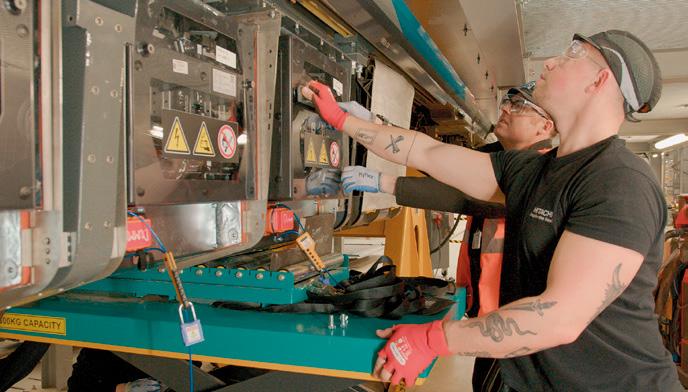
Mark Wild appointed new CEO of HS2








AGreat Northern Class 717 ran in test conditions between Welwyn Garden City and Hitchin in Hertfordshire using European Train Control System (ETCS), which sends signalling information directly to a computer screen in the driver’s cab. ETCS will enable a more reliable, more efficient and greener railway for passengers and freight customers.
The test, earlier this month, was part of the early stages of an ongoing process to prove that the trains –already fitted with the necessary onboard technology – work with the new digital signalling infrastructure on this section of the East Coast Main Line.


HS2 Ltd has appointed Mark Wild OBE as its new Chief Executive Officer (CEO), tasked with leading the completion of the high speed railway, as well as helping to realise its transformational benefits.

He brings almost four decades-worth of experience to the role, which includes a track record in the successful delivery of complex railway systems, most notably as the CEO of Crossrail.







and reliability, with the first passenger and freight digital signalling operations expected to start soon afterwards.

The process will involve the breadth of the industrywide partnership delivering the pioneering East Coast Digital Programme (ECDP). Train control partner Siemens Mobility is overseeing the testing process, working with the relevant train operating partners (initially Govia Thameslink Railway as the first train to be dynamically tested).


The testing process will continue until mid-2025 to ensure complete assurance of the new system’s safety

Mark will join as the civil engineering works along the route from London to the West Midlands reach their peak and focus shifts to building the infrastructure to operate the railway.



He said: “I look forward to leading HS2 as it progresses from major construction works to its rail systems phase and beyond to the first passenger services. The scale and ambition of HS2 is phenomenal and will deliver wide-reaching benefits for the UK through more jobs, economic growth, and better journeys.”



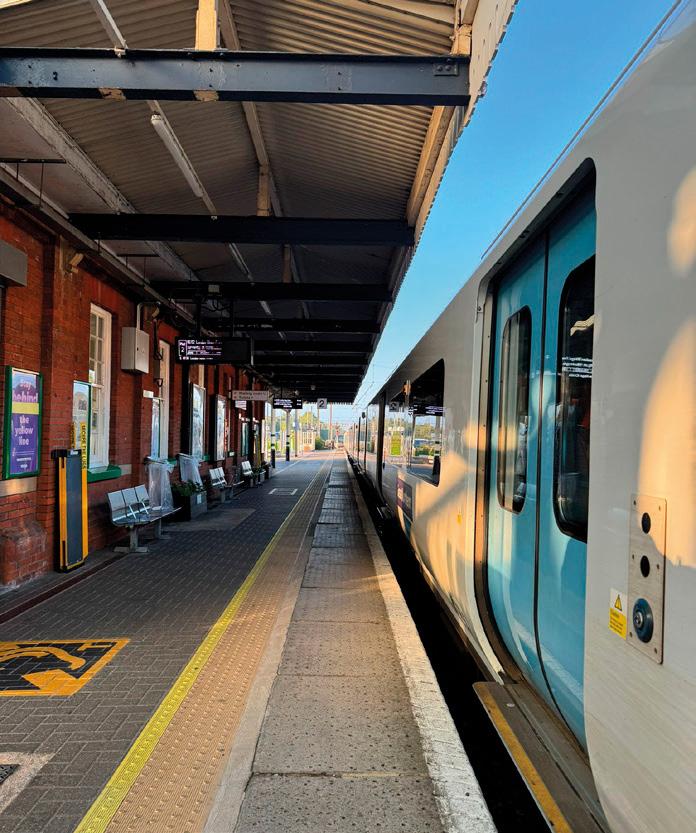





Oliver Turner, Head of ERTMS at Govia Thameslink Railway which operates Great Northern, said: “We’re proud our Class 717 train and the ERTMS team were instrumental to this landmark use of digital signalling on the East Coast Main Line.











“The testing marks the very first step in an intensive testing process to ensure the system is safe. We are working closely with the rest of the industry to share the lessons we’ve learned – and continue to learn – from introducing and operating ETCS on the Northern City Line and Thameslink route across the heart of London.”



Ben Lane, Project Director for Siemens Mobility & Infrastructure Sector Lead ECDP, said: “Following on from the success of the pathfinder project on the Northern City Line, we are now deploying this technology on an intercity main line in preparation for the commencement of driver training for all passenger and freight operating companies on the programme.






“The first digitally signalled train movement on the Welwyn to Hitchin project is not only a big step for the ECDP, but also for the wider railway industry and future digital schemes.”






 Above: First ETCS Level 2 test train with GTR’s Richard Redehan in the driver’s seat
Above: First ETCS Level 2 test train with GTR’s Richard Redehan in the driver’s seat
UK RAIL NEWS 16 June 2024
Battery installation Newton Aycliffe. Image: Hitachi Rail





























































































Transport Benevolent Fund CIO, known as TBF, is a registered charity in England and Wales, 1160901, and Scotland, SC047016. TBF - Here to help and support YOU during times of need £1.25 a week covers you, your live-in partner and dependent children. TBF offers financial and medical benefits, a wide range of complementary and alternative therapies, bereavement grants and welfare advice. Supporting those in the public transport industry during times of need, hardship and distress for less than 20p per day . JOIN ONLINE TODAY www.tbf.org.uk 1923 TO 2023: MORE THAN ONE HUNDRED YEARS OF SUPPORT FOR PUBLIC TRANSPORT WORKERS DURING TIMES OF NEED.
The first year of the Clean Futures Accelerator concluded with an exclusive ‘Demonstration Day’ held at the Very Light Rail National Innovation Centre in Dudley on 30 April, with more than 130 visitors in attendance
BCIMO celebrates first year of Clean Futures Accelerator programme with exclusive Demo Day

The two-year programme, launched in July 2023, is led by Connected Places Catapult and delivered by the Black Country Innovative Manufacturing Organisation (BCIMO), in partnership with Coventry University.
During the Demonstration Day, Cohort One SMEs showcased their unique clean energy innovations in the centre’s Meetings & Events Spaces, and across its Rail Development & Test Site facilities, within a broader programme of activities.
The Clean Futures Accelerator programme is designed to address key industry challenges through innovation, by accelerating the route to market for SMEs via a package of funding, technical expertise and commercial insight.
It prepares the regional SMEs on the programme to demonstrate their innovations to industry partners and potential investors, the project’s culmination being the live on-site demonstration.
Safer, cleaner and smarter journeys
The event began with a welcome from BCIMO’s CEO, Neil Fulton, followed by a talk from Sarah Windrum, Future Mobility Lead at HORIBA MIRA and Innovation Board Member at the West Midlands Combined Authority.
Sarah reflected on the development journey of her company – noting its similarity to BCIMO – and its impact to date on both the industry and Midlands region. Outlining their mission to make journeys ‘safer, cleaner and smarter’, she further emphasised the need for an ‘ecosystem of innovation’ for regional SMEs and how support from WMCA was fundamental to this.
The day then moved on to the Cohort One SMEs delivering their ‘pitches’; showcasing their innovations, which have been developed, trialled and tested at BCIMO throughout the programme, and discussing their ideas and aspirations for the future.
Each talked about their innovation and their aspirations- both of their businesses and the impact their innovations can have far beyond the region in addressing global environmental challenges.
Cohort One’s demonstrations- SMEs fully supported by BCIMO:
Adelan A developer of low-carbon products for the clean energy market, offering unique fuel cell system sales and strategic partnerships to customers looking to decarbonise their products and businesses.
Adelan joined the Clean Futures Accelerator programme to test and demonstrate the application of its solid oxide fuel cell technology to power the on-board auxiliary systems of a light rail vehicle.
BoxTube: A start-up company that has developed a system that utilises a standardised reusable box, together with an automated loading and securing mechanism, to enable the rapid loading and efficient transfer of granular freight between different transport modes. BoxTube joined the programme to test and demonstrate the application of its rapid vehicle loading system in a relevant rail freight environment.
ChangeMaker3D: A UK-based company that uses low-carbon 3D concrete printing technology to transform major infrastructure projects for utilities, highways and rail. Their mantra is to ‘design out carbon’ and ‘print in productivity’. ChangeMaker3D joined the Clean Futures Accelerator programme to secure a base to print, construct, test and demonstrate the first 3D concrete printed toilet pod in a rail environment.
ADVERTORIAL 18 June 2024
Advanced Hydrogen Technologies/ Harry Needle Railroad Company: Advanced Hydrogen Technologies (AHT) is an engineering and technology company that harnesses the power of hydrogen to produce clean domestic energy and lower vehicle emissions. Harry Needle Railroad Company (HNRC) is a forward-thinking railway locomotive spot hire, engineering and refurbishing company offering passenger vehicle storage and engineering space. AHT and HNRC joined the programme to test and demonstrate the efficiency of AHT’s Hydrogen Generator on one of HNRC’s locomotives, utilising BCIMO’s Rail Development and Test Site.
PowerUp Off-Grid Services: A company specialising in zero-emission, portable power, driven by intelligent AI that can be utilised anywhere in the world, at any time. PowerUp joined the programme to test and demonstrate the application of its PowerStation V2 unit to power tools, lighting and EV charging in a relevant rail infrastructure environment.
Universal Signalling: A disruptive start-up, new to the railway industry, Universal Signalling is developing the next generation of digital signalling; a Universal Interlocking system made of low-cost COTS components, which form modular, extensible and pre-assured building blocks containing all the rules of the route. Universal Signalling joined the Clean Futures Accelerator programme to test and demonstrate its signalling system in a relevant rail track environment.
Varamis Rail: A new train operator that is developing a network of zero-emission, rapid rail logistics services for the movement of goods across the UK & Europe, providing a viable alternative to traditional road and diesel-powered freight transportation. Varamis Rail joined the programme to test and demonstrate using a pre-programmed automated system to reduce loading and transfer times in a relevant rail freight environment.
Cohort One’s demonstrations- SMEs partially supported by BCIMO: These companies received commercial support only, with technical support provided by Coventry University:
AceOn Group: A battery power company which specialises in the design and assembly of custom-built battery packs and the distribution of industrial and consumer batteries to the UK and worldwide market.
Coexlion: An international engineering consultancy company, specialising in motorcycles, scooters, and electric vehicles. As Verdemoto, they specifically focus on the development and sale of eMotorcyles for the last-mile delivery space.
Composite Braiding: A specialist in manufacturing advanced composite materials, via an automated process which reduces labour costs by up to 90 per cent and waste by 97 per cent.
Hixal: A developer and installer of hydrogen fuel cell off-grid power services, across industries such as construction, road freight and agriculture, and for a range of commercial premises.
A brave and bold approach
Following the SMEs’ demonstrations, Martin Little, Strategic Business Partnerships Manager at BCIMO, then led a panel session with experts from across both the rail sector and innovation landscape, posing some key questions. These encompassed the specific criteria for ‘good innovation’, the role that programmes such as Clean Futures can play in driving it forward, and the challenges the industry faces in harnessing innovation.
A final personal word was from Simon Higgens of Story Contracting, who said “All twelve of you rightly deserve to be in the sector… don’t give up!”
Reflecting on success and looking forward to Cohort Two
Concluding the event in the auditorium, Head of SME Development at BCIMO, Naomi Arblaster, and Clean Futures Accelerator Programme Manager at Connected Places Catapult, Hannah Fortune, presented each of the Cohort One SMEs with a plaque, amidst a celebratory photocall and continuous rounds of applause.
Hannah then formally launched the second year of the programme, outlining the challenges for Cohort Two applicants to consider; and Naomi closed the event – and the first year – with a reflection on the programme’s success and exciting plans for its future.
For more information on the Clean Futures Accelerator, to meet the first-year innovators and learn more about the second-year opportunity –please visit www.bcimo.co.uk/programmes/cleanfutures/clean-futures-accelerator/
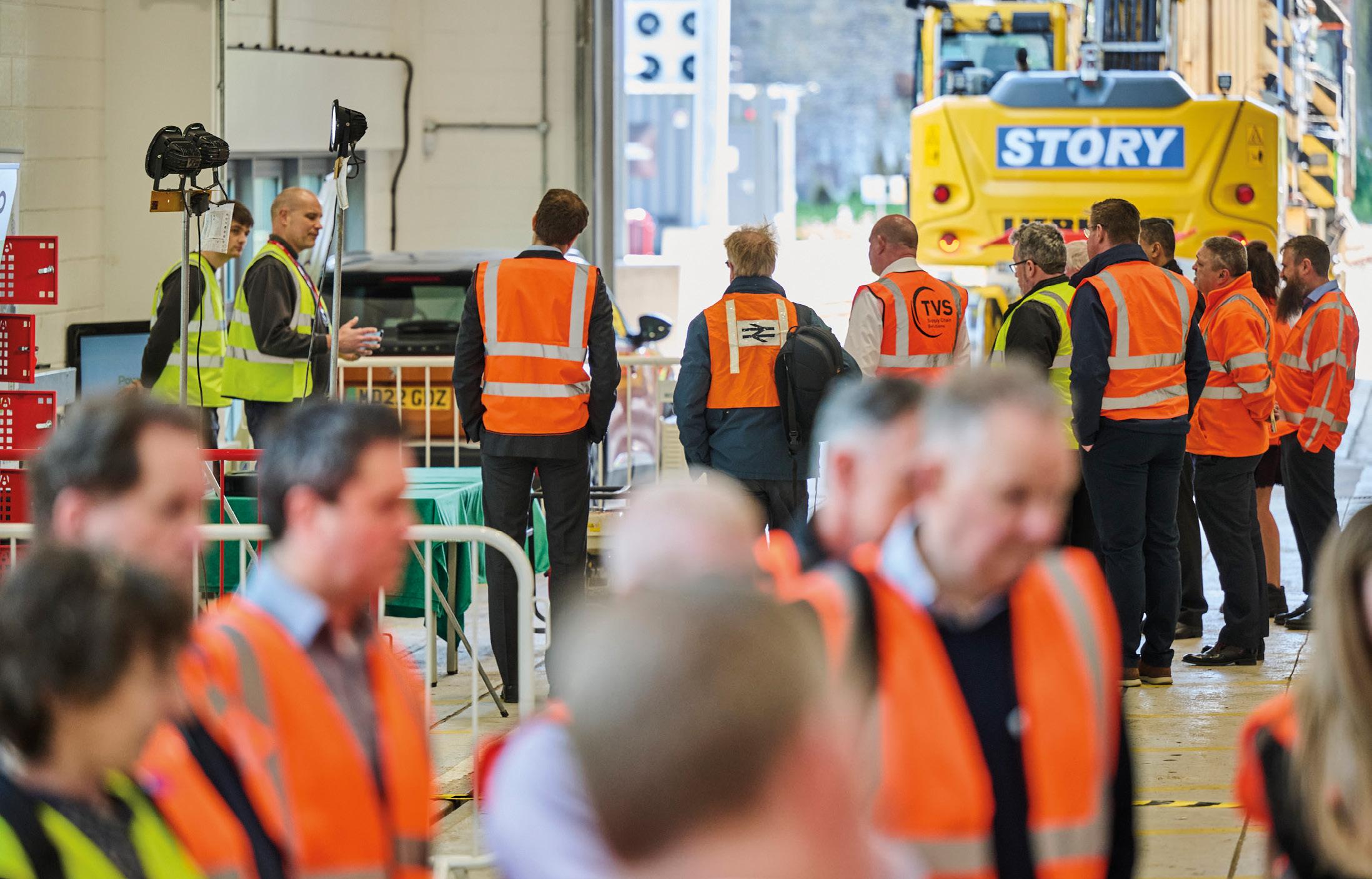
ADVERTORIAL 19 June 2024
With the release of CP7 work eagerly anticipated throughout the industry, SEP Culant is entering a significant period in its operations. The company, renowned for its commitment to safety and excellence, recently welcomed Paul Franklin as its new Head of Programme and Delivery
Paul Franklin drives the next chapter at SEP Culant
With two decades of industry experience, Paul succinctly describes the industry’s evolution in three words: “Vastly improved safety.”
Strengthening the team
Having witnessed 20 years of frontline evolution, Paul Franklin, SEP Culant’s new Head of Programme and Delivery has seen it all. With CP7 on the horizon, the company knew it was the perfect time to strengthen its senior leadership. They turned to Paul, a seasoned professional with a proven track record.
Paul began his career as a track welder in 2001, a tumultuous year marked by Railtrack’s administration and Network Rail’s subsequent formation. Reflecting on those early days, Paul recalled, “You heard about what was going on, and it felt uncertain, but you focused on the task at hand.” Over the next two decades, Paul ascended the ranks, gaining vital experience in permanent-way delivery, switches, and refurbishment projects.
Paul’s ability to deliver exceptional results did not go unnoticed. Andrew Oliver, SEP Culant Managing Director, expressed, “Paul’s dedication and expertise are unmatched. His commitment to safety and efficiency aligns perfectly with our core values.” Earlier this year, Andrew approached Paul with an offer to join SEP Culant, and as they say, the rest is history.
Focus on safety
When asked about the most significant changes in the rail industry over the past two decades, Paul replied, “Vastly improved safety.” He elaborated, “When I first started, we stood on the track with only a high-vis vest. There was no full orange, no white helmets. Safety was not a topic of conversation like it is today.” This evolution towards a safetycentric approach is a foundation of SEP Culant’s operations.
SEP Culant is one of just over 700 IRATAaccredited operators, recognised globally as a leading authority on industrial rope access. Paul emphasises the importance of this accreditation, noting a worrying trend of uncertified operatives in the field. “I’ve seen operatives working with rope access without IRATA certification. In 2024, this isn’t just unsafe; it’s irresponsible.” SEP Culant’s IRATA accreditation reassured Paul that he was joining an organisation committed to modern safety standards.

The Power of six
Paul’s experience has been highly valued by the companies he’s worked with, so why did he choose SEP Culant? His answer was clear: “I haven’t seen anyone do it better.”
He continued, “The knowledge they have, the talent within the team, it’s unrivalled. Within my first week, I saw a significant investment in new equipment, including four new vans for an upcoming project. When a firm invests in the tools for the job like that, you know you’re in good hands.”
SEP Culant is part of the SEP Rail Group, a network of six organisations providing specialised multi-disciplinary services across surveying, design, engineering, geotechnical, and ecological support.
Paul highlights the advantages of this in-house approach: “It’s fantastic. You can pick up the phone and collaborate with colleagues who are on the same page. If you need advice, you have it instantly. If you need support on-site, it’s there within hours.”
Paul continued, “Our Safety Stand Down Day in June brings together over 100 staff members to strengthen our close working relationships and learn from each other. Few firms can offer such a breadth of services while maintaining a cohesive and trusting work environment.”
Expanding horizons
Over the past year, SEP Culant has expanded into civils and construction. Paul’s direct experience in this field will be invaluable to the firm.
ADVERTORIAL 20 June 2024
He explained, “This is my bread and butter. SEP Culant has made its mark and continues to lead the way with IRATA rope access and vegetation management. I’ve seen how in-demand we are, and I know we can replicate this same level of service across civils and construction. It’s not going to be an overnight thing; these things take time. But having seen the team in operation, it’s a very achievable goal indeed.”
Paul continued, “We’re working with various clients on civil and construction works, from full-depth construction to utility infrastructure installations. The demand is rising, and for good reason. SEP Culant provides an end-to-end service, and with support from the SEP Rail Group, clients can rely on us completely.”
SEP Culant’s track record speaks volumes. Recent works include the management of vegetation at Barnard Castle. Paul elaborated, “This is a 900-year-old piece of British history. Our team carefully scaled the walls using rope access and used hand tools to prune the vegetation, preparing the site to welcome thousands of visitors over the summer.”
With an expanded senior leadership team, focused development plans, and a team dedicated to the highest safe working practices, SEP Culant is ready for the next five years. Now, as SEP Ecology joins the family, the SEP Rail Group is in its strongest position yet to be the go-to contractor for the industry’s evolving demands.
To find out more about SEP Culant and its services visit: www.sepculant.co.uk



Rai l I n f rastructu re D e sign Ser v i ce s enGauged is a privately owned rail infrastructure design practice, specialising in building and civil engineering design Our services cover everything from feasibility studies and site surveys through planning, outline design, detailed design to construction support. Got a project in mind? Get in touch 01270 255 731 enquiries@engauged.co.uk www.engauged.co.uk
ADVERTORIAL 21 June 2024
The Freight Safe Programme (FSP) has recently been launched, bringing together key stakeholders to build on rail freight’s strong safety performance. Chair of the Steering Group, Geoff Spencer, discusses the priorities
Enhancing the reputation of rail freight

Aground-breaking initiative has recently been launched to protect and promote the reputation of rail freight in the UK. FSP brings together key stakeholders to lead on priority safety projects and give wider expertise to the industry on any potential challenges and risks.
“Rail freight already has a good safety record but that does not mean that we shouldn’t continue to strive for even better,” explained the Steering Group Chair Geoff Spencer. “Our objective is to collectively protect and enhance the reputation of rail freight. When there is a serious accident, no one remembers the colour of the locomotive or the operator, they remember the incident, so the Freight Safe
Programme is about us all working together, across the sector.”
It is a collaborative rail freight industry undertaking, which is partly funded by Network Rail’s Freight Safety Improvement Portfolio as well as funding coming from freight operating companies and other key stakeholders. Geoff is joined by senior and experienced professionals from across rail freight, with the group governed by the Rail Partners Freight Council.
“Collaboration is the key word in this group. Although we might have people around the table who are competitors in winning traffic and contracts, we are all on the same page when it comes to safety,” explained Geoff, who was previously Chief Executive
Officer at DB Cargo (UK) and was a Non-Executive Director at the Rail Safety and Standards Board (RSSB).
The group has developed after coming together in 2016 following RSSB’s Health and Safety Strategy, which highlighted the importance of more collaboration. A national FSP Steering Group was created, bringing rail freight bosses together in a forum – a move which has gained industry plaudits.
“Freight operating companies and Network Rail coming together, as they are doing in the Freight Safe Programme, is the mature way to do business. The openness of the discussions that we have are fantastic – it’s a real step forward from where we have been
Image: Freightliner
FREIGHT SAFETY 22 June 2024
in the past. This is helping to drive the risk reduction process even further,” added Geoff.
As well as supporting the Rail Industry Health and Safety Strategy, the FSP has identified four priority workstreams, following an independent study in 2023, ‘The Major Risk Review’, led by Professor George Bearfield, which was supported by freight operating companies, Network Rail, RSSB and other key stakeholders:
Wagon Condition Programme – to collaboratively build on existing maintenance and train preparation practices on a programme of continuous improvement in wagon safety.
Freight Safe Insights – that through a common strategy for sharing safety data and information, and the use of a precursor indicator model, there is insight into existing and emerging safety risks.
Horizon Scanning – that through the use of a rail freight sector horizon scanning process, there is a consolidated, pervasive understanding of all existing and emerging safety risks and opportunities.
Climate Change – that the rail freight sector has a shared understanding of the practical, operational impacts of climate change on its safety risk, and has recommended the mitigative actions to address those risks.

of the
GB
Penny Hattam (Assistant Strategic
Dougie Hill (Principal Strategy Implementation Manager, National Freight
Neil Hutchinson (Head of Safety, DB Cargo UK); Melanie Hill (PR and Communications Lead to the FSP Steering Group); Steve Rhymes (Head of Network Management, Network Rail); Geoff Spencer (FSP Steering Group Chair); Philip Hassall (FSP Project Management Officer); Louise Ward (Safety and Sustainability Director UK and Europe, Genesee & Wyoming Inc); Tim Shakerley (Wagon Condition Programme Lead); Robert Williamson (Programme Manager, Network Rail).


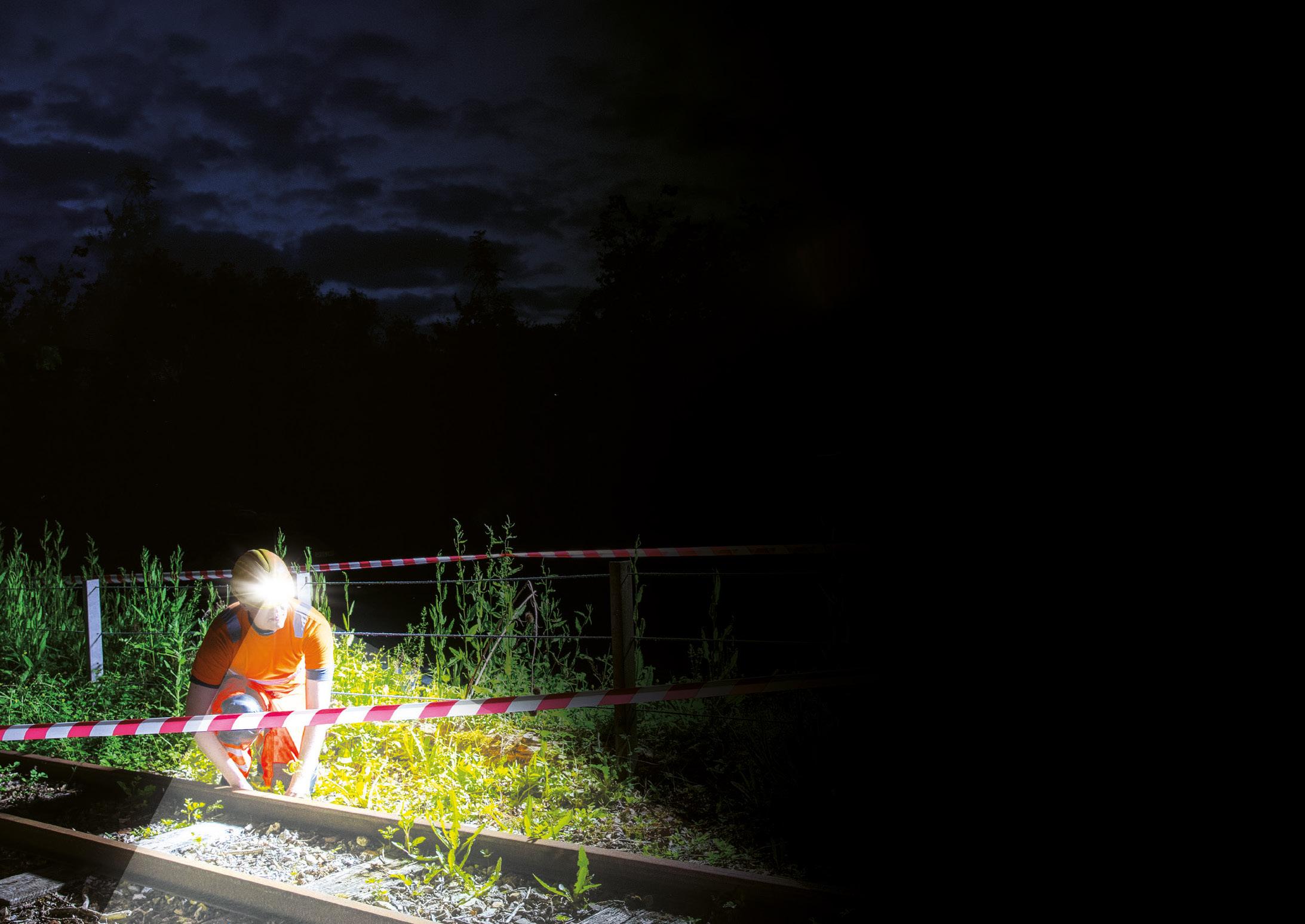
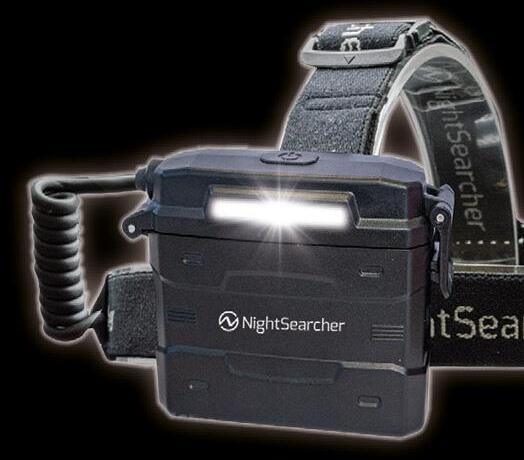


New ZOOM 780EXR • 10.5 - 82h Runtime • 3 Light modes • Rear White Light • Waterproof - IP66 Rated • Rechargeable Lithium Battery • Lightweight Design E: sales@nightsearcher.co.uk | W: www.nightsearcher.co.uk SPOT TO FLOOD BEAM OPERATES ALL NIGHT ON FULL POWER • 10.5h Runtime (High) • 780 Lumens • 200m Beam Supplied with Lithium battery pack or 4 x AA Alkaline batteries Hybrid Technology To find out more: T: +44 (0)23 9238 9774 1989-2024 YEARS WARRANTY 8 *with registration VISIT OUR STAND Find out more
FREIGHT SAFETY 23 June 2024
Members
Freight Safe Programme Steering Group (L-R): David Golding (Asset Director,
Railfreight);
Implementation Manager, RSSB);
Steering Group, RSSB);

Rail freight already has a good safety record but that does not mean that we shouldn’t continue to strive for even better
Geoff said: “The number one priority is the FSP wagon condition project. This is not to say wagons are inherently unsafe, they are very safe, but we want to ensure that wagons go from A to B safely without impacting performance and safety.
“During privatisation companies produced their own rules about train preparation and brake testing and so people are working to different sets of rules which could potentially lead to gaps. So, through FSP, we are looking at how we could standardise that. We’re also looking at people’s working conditions, particularly with regards to extreme weather conditions which will impact the time taken to prepare the train.”
He added: “We’ve got funding to set up centres of excellence to look at how we would build a yard that gives someone the best capability to do the job, fix the wagons properly, and test the train plan to make sure there is enough time to do the job. It is this kind of thing we can do collectively for the good of industry, as well as using better and informed intelligence around when the vehicles are getting to the point of repair. It is a complex task to fix but we have a really good team involved and it will be a game-changer.”
Although there is no denying the challenges facing the rail freight industry, there is a real optimism about the future as well, shown by the collective evidence of the sector coming together in the FSP, and enthused by the Department for Transport’s rail freight growth target of 75 per cent growth in net freight tonne kilometres by 2050.
“COVID really highlighted the value of rail freight and its importance, so it is great to see the industry working together under the FSP banner,” said Geoff. “It is in everybody’s interests that we do all that we can to minimise risks and the only way we can do that is by working together because the collective knowledge, experience, and data help us far more
than trying to do it in individual pods.
“Looking to the future, an area I’d really like to see develop is around data and having that single source of truth, which will enable us to press a button and tell us what our risks are.
“People wear their t-shirts and ties with pride for the companies that they work for, and that’s great, but ultimately I want us all to recognise that we are part of a rail freight family and everyone is fighting for the success of that.
“We are playing our part in delivering the Government’s rail freight growth targets, we’re an enabler in that. My message to the market and the supply chain is simple, come and use rail freight.”
The Freight Safe Programme Steering Group members are: Geoff Spencer (Chair); Philip Hassall (Project Management Officer); Dougie Hill (Principal Strategy Implementation Manager, National Freight Steering Group, RSSB); Tim Shakerley (Wagon Condition Programme Lead); David Golding (Asset Director, GB Railfreight); Louise Ward (Safety and Sustainability Director UK and Europe, Genesee & Wyoming Inc); Neil Hutchinson (Head of Safety, DB Cargo UK); Penny Hattam (Assistant Strategic Implementation Manager, RSSB); Steve Rhymes (Head of Network Management, Network Rail); Robert Williamson (Programme Manager, Network Rail); Melanie Hill and Rob Smith (PR and Communications Leads to the FSP Steering Group). Matt Farrell, Head of Inspection Team (South) at the Railway Safety Directorate, attends meetings as an observer.
FREIGHT SAFETY 24 June 2024
Image: Rail Delivery Group

Railway Competence Group (RCG) are a premier provider of comprehensive train driver assessment and training services. Our suite of offerings, including Train Driver End Point Assessment, Psychometric Testing, and Train Driver Incident Prevention Courses, are designed to elevate the standards of railway operations and safety.

A
new report gives useful insights into historical railway accidents and compares them with current safety challenges
Learning from the past
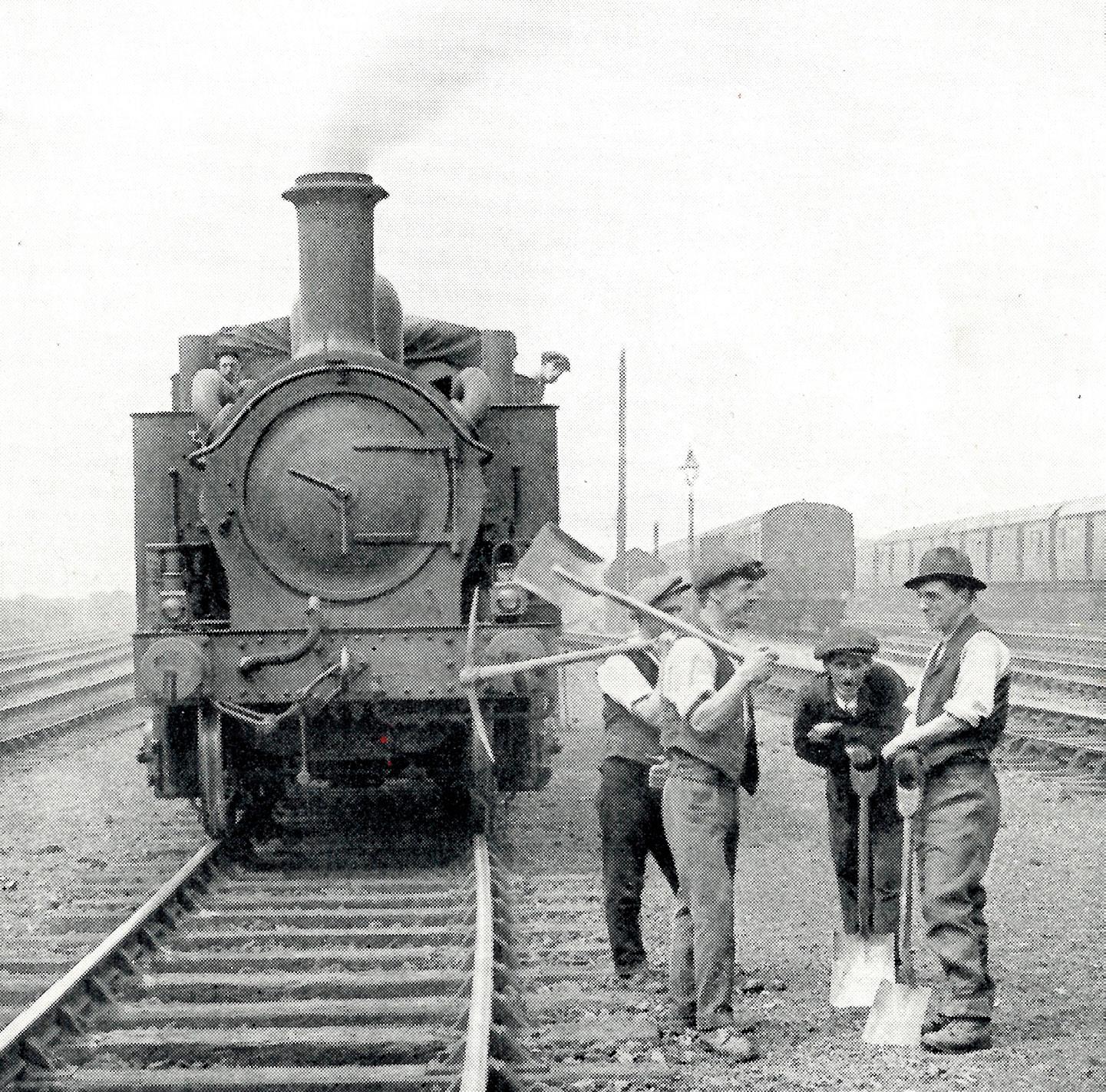

Studying historical accidents to learn the lessons of how to keep people safe is an important area of research. On the railway, there is a lot of information on train accidents, why they happened, how they happened, and the devastation they caused.
Designers have used this information to make trains stronger, to make signalling and other systems more reliable, and to improve safety generally. So, although the well-known accident at Clapham Junction occurred on 12 December 1988, today’s researchers can read the report of the public inquiry that was chaired by Sir Anthony Hidden QC and take note of his conclusions.
The Clapham Junction accident, in which 35 people died, was caused by a wiring fault. The signalling technician involved had not had his work checked and was working his thirteenth consecutive seven-day week. Sir Anthony Hidden was critical of British Rail’s health and safety culture and the company was fined £250,000. Lessons were learned. However, away from this and similar major accidents, much less information is available on personal accidents involving those working on or about the railway.
Safety Leadership workshop
To address this, a workshop was jointly organised by the Infrastructure Safety Leadership Group (ISLG), chaired by Stuart Webster Spriggs of VolkerRail, and the Railway Work Life and Death (RWLD) project, a collaboration between the University of Portsmouth, the National Railway Museum and the Modern Records Centre at the University of Warwick that is led by Dr Mike Esbester, Principal Lecturer in History at the University of Portsmouth.
The result is the Track Worker Safety Digest, published by the Rail Safety and Standards Board (RSSB). It includes details of various historical accidents from the RWLD archive and makes comparisons with more recent incidents. Seven key themes are covered:
Planning
Fatigue
Culture
Running speed in worksites
Crossing the line
Location knowledge
Signalling
The incidents studied occurred at a time when records of track worker fatalities and injuries were not collected and analysed with anything like the rigour
Above: This picture illustrates a common oversight. A man may stand clear himself but hold a shovel, pick, bar, or other implement foul of an approaching train. The danger is apparent. (Great Western Railway safety leaflet – 1936). Image: Railway Work, Life & Death project
SAFETY 26 June 2024
Above: Stepping out of the way (North Western Railway safety leaflet – 1918). Image: Railway Work, Life & Death project
Building strong foundations
they are today. This is in part because the nationwide facility for doing so did not exist – it was actually the Clapham accident that led to the creation of an allrailway database for safety events.
With a keen eye on the future, Kieran recognised there was a gap in SEP Geotech’s offering:
“What SEP Geotech does ties together perfectly with piling. The purpose of our investigation forms the basis of the pile design, and our sister company, SEP Rail Design, designs the piles; now we will install them.”
While the demand is always there for new staff, Kieran knows the value of hiring the right people:
struck. Lee was also struck while trying to pull one of them free, sustaining major injuries as a result.
This is a
The life of trackworkers, and their safety, were very different one hundred years ago. In 1920 alone, 420 workforce fatalities were recorded, with the average for that decade being 269 fatalities a year. Many incidents were caused by staff being struck by trains. Although tragedies such as these still happen, as recent accidents at Margam, Surbiton, and Stoats Nest Junction show, they are thankfully far less frequent.
“This industry isn’t for the faint-hearted. Late nights, early mornings. Long periods of time away from your family. My office is my mobile phone and my van; we’re always on the road, on-site, and getting our hands dirty.
Piling, in engineering terms, involves the installation of foundations driven or bored into the ground to transfer loads to deeper, more stable soil.
These structural elements are essential when the natural bearing capacity of the soil is insufficient for supporting heavy construction loads.
Familiar example
Kieran’s extensive engineering experience, developed since his teenage years, has been centred around piling. He explained:
The digest gives examples of historical accidents for each of the seven key themes. Under ‘culture’, it reports on an incident at Weaste, near the Victoria Mills in Manchester, that occurred on 1 March 1901 when a passenger train struck and killed two track workers on the Down Slow line. They had been part of a team of three working on the ballast between the Up and Down Slow lines on a four-track stretch. This team was usually four-strong, but one person was off sick.
“This is a critical moment for the piling and foundations industry. Exciting innovations within pile design and installations are allowing for improved project turnaround times and more technically demanding programmes.
“By leveraging our team’s experience, alongside utilising the wider SEP Rail Group’s capabilities, SEP Geotech is in a perfect position to deliver projects from feasibility to design through to completion.”
Prioritising growth and expertise
The ganger in charge, William Lee, had left the other two so he could examine the condition of the track. When he returned, all three were distracted by a shovel which had been dangerously positioned on a wagon in their engineering train. Bill Williams and Fred Kilner moved foul of the Down Slow and were
Investing in the professional development of the current team is also not just a priority; it’s a key part of SEP Geotech’s vision for the future.
The investigation noted that no lookout had been employed for this work as the ganger “could not spare a man for this purpose”. The investigation clarified, however, that the ganger had never sought one, nor applied to the District Inspector for one. He admitted to the investigator that a lookout would have prevented the accident. Steam blowing from a nearby factory and from the locomotive heading the engineering train meant it was impossible for the team to see the express – it was also impossible for the express crew to see the team on the track.
“Our team shares a deep commitment to the enduring success of our business and is constantly seeking ways to enhance their skills and improve our services.
“We take pride in being one of the few geotechnical companies that offer specialised drilling NVQs to our team, ensuring that our workforce remains at the forefront of industry expertise and quality.”
There are similarities here with the fatal accident at Margam on 3 July 2019. In this case, a team of three had been working on an open line without lookouts. The three had split from a larger team of six to work on a set of points. They had followed ‘local custom and practice’, as the team had done at Weaste. Rules were also interpreted on a local level. In both cases, this led to work being done without protection. Both cases also highlight a disparity between ‘work as done’ and ‘work as imagined’. Had the rules been followed, neither accident would have occurred.
Investment in staff is one thing. But the evolving rail industry landscape also demands industryleading equipment. To address this, Kieran provides a candid glimpse into a forthcoming investment at SEP Geotech:
“We’re investing in a new, state-of-the-art solution designed for safe work on embankments, slopes, and even over water. This innovation eliminates the need for traditional rope access, streamlining our processes even further.”
As Dr Esbester said: “This is more than simply history - it’s an active intervention in the present, using the past to better understand work and working practices today. There aren’t any quick wins, but hopefully this safety digest will contribute to fewer worker incidents.”

“Learning from the past is a fundamental aspect of ensuring continual improvement and the prevention of accidents and incidents in the same vein,” he said.
As SEP Geotech continues to evolve and expand its offerings, one thing is clear: Kieran Moran’s experience, dedication, and vision will remain at the forefront, driving the company to even greater heights in the geotechnical engineering industry.
ISLG chair Stuart Webster-Spriggs agreed.
RSSB’s Greg Morse added: “So many of the incidents in this digest resonate with the modern railway. They prove that remembering the past helps us build competence and compliance, keeping us safer both today and tomorrow.”
RAILWAY LIFTING JACKS RAISING STANDARDS
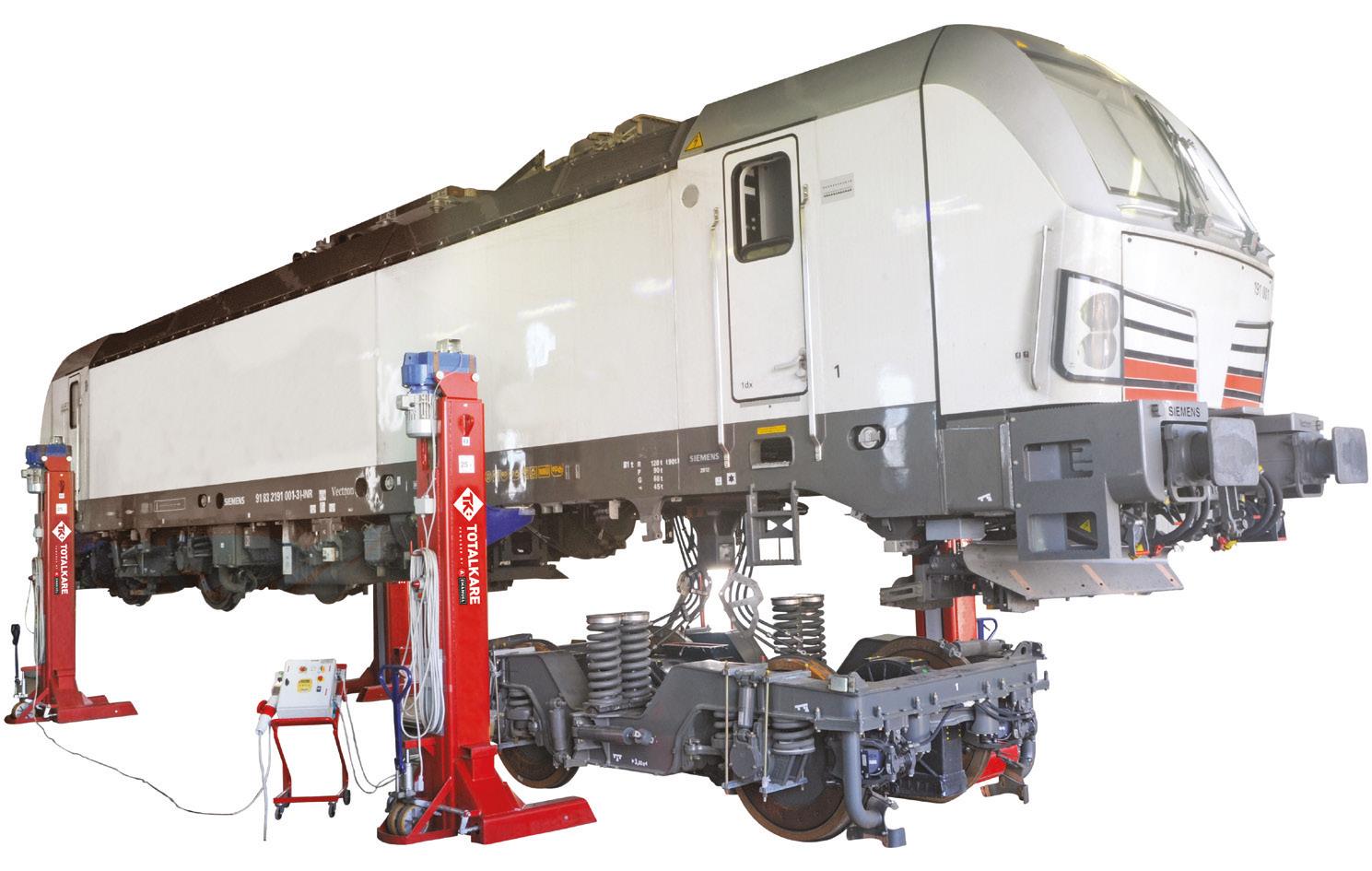




CALL 0121 585 2724 VISIT WWW.TOTALKARE.CO.UK With 40 years’ experience in heavy duty lifting solutions, Totalkare combines world class products with industry leading support to facilitate effective maintenance and repair, keeping you on track for success.
ADVERTORIAL 20 November 2023 Untitled-9 4 16/01/2024 11:56
SAFETY 27 June 2024
Laura Reardon, the LRSSB’s Head of Safety Risk Management, explains how data is driving improvements in light rail safety

New approach to risk revolutionises light rail safety
Adata-driven approach to risk management, combined with advanced modelling, is transforming the way UK tramways strive to make one of the safest modes of public transport even safer.
Led by the Light Rail Safety and Standards Board (LRSSB), networks across the country are now using a national Safety Risk Model to identify potential threats to the wellbeing of passengers, employees, and anyone else who may come into contact with the tramway.
Using numerical techniques, the model provides both individual networks and the overall sector with a better understanding of all the safety risks associated
with tramway operations and maintenance activities.
Using a ‘bottom-up’ approach, the model exploits data on previous incidents recorded by individual networks, while also recognising the risks posed by potential low-frequency, high-consequence events.
Laura Reardon, the LRSSB’s Head of Safety Risk Management, explained: “The development of the Safety Risk Model has been a key pillar of our work over the last few years, carried out in response to key recommendations of the Rail Accident Investigation Branch (RAIB) report into the 2016 Sandilands tragedy.
“Following the deaths of seven people and injuries to 62 others, when a tram derailed near Croydon,
investigators called for a systematic review of light rail operational risks and control measures, alongside the creation of a single organisation responsible for oversight of sector safety.
“This resulted in the founding of the LRSSB and its work on the Safety Risk Model, alongside the evolution of its state-of-the-art Tram Accident and Incident Reporting system (TAIR), which has also helped the sector meet the RAIB’s recommendations.
“Both the model and the reporting system were developed alongside each other, enabling the use of a common language for both data input and analysis. As this approach was agreed, owned, and used by all the networks, both the model
LIGHT RAIL SAFETY 28 June 2024
Images: West Midlands Metro

Find us at G5 to see how our range of innovative plant can help transform your next rail project - ‘the McCulloch way’!

TRT™
A safe and efficient way to transport, remove and install lengths of rail.
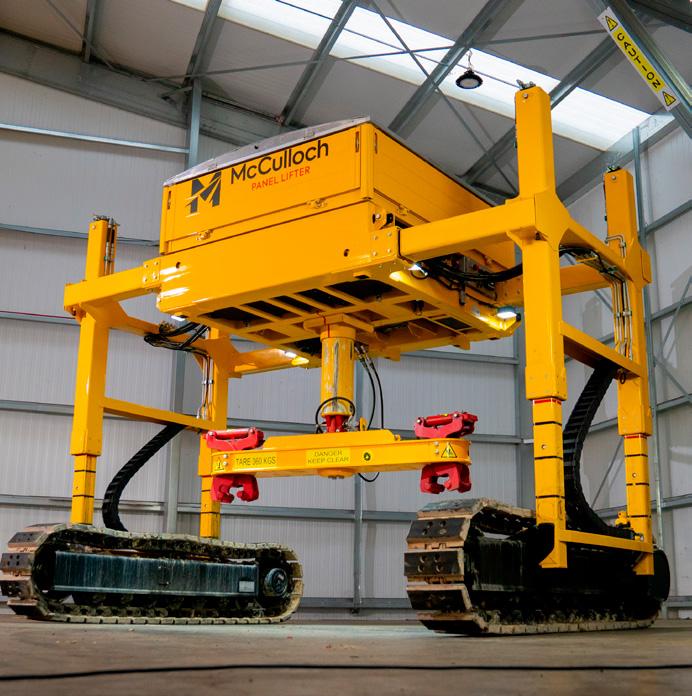

Panel Lifter
A unique system that removes and replaces rail panels swiftly and safely.
Plus a live demo of our all new
McCulloch Turnout Solution
With a 50 tonne lifting capacity per system, come and see how the McCulloch Turnout Solution will revolutionise the installation of switches and crossings globally.
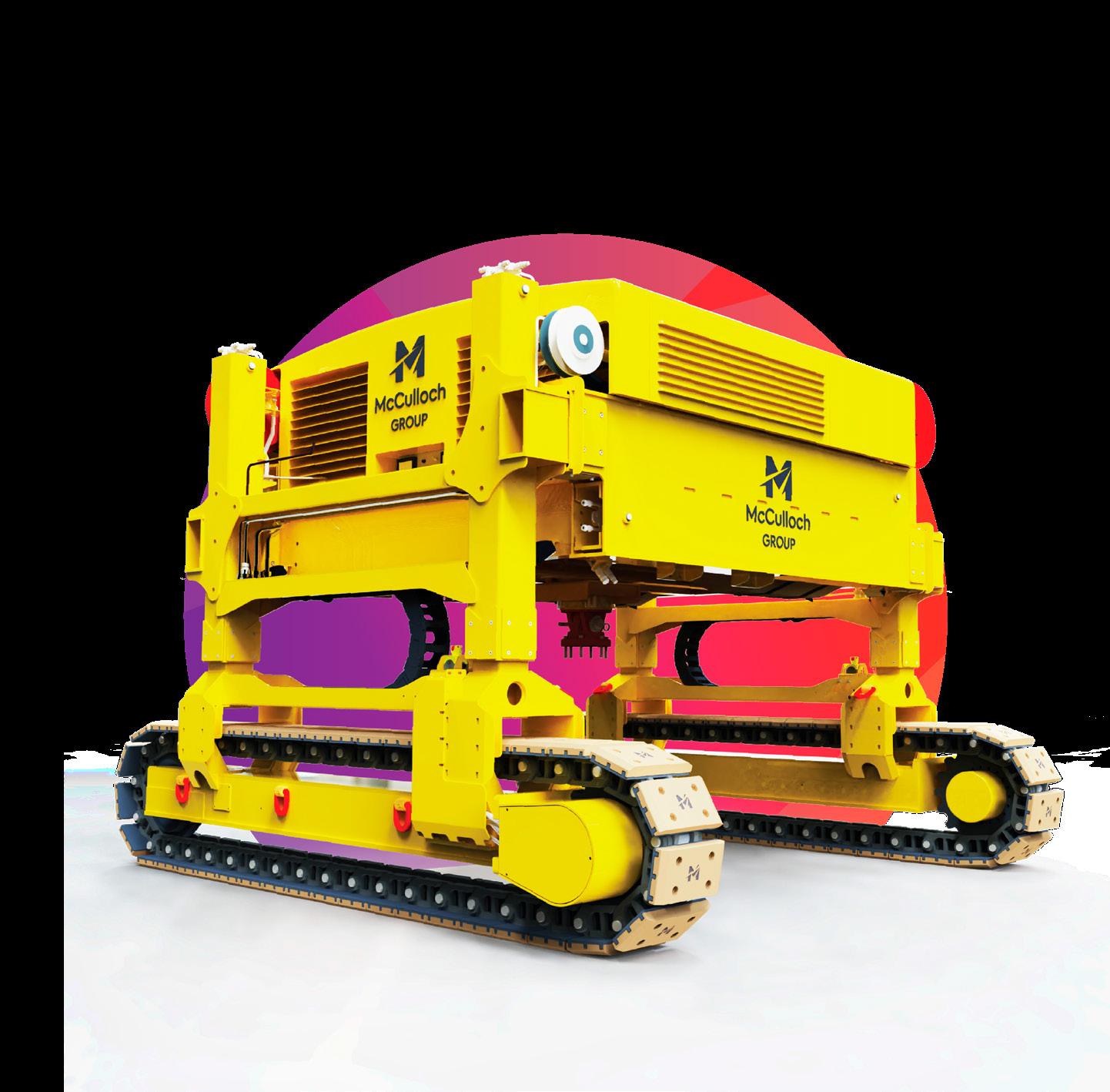
Designed to lift, transport, and dispense cable from pre-wound cable reels.
Find out more at mccullochgroup.com
We’re going to Rail Live!
TCT

and TAIR take into account a wide variation of network characteristics without getting in the way of collaboration between them.”
While every network faces many of the same fundamental risks, each has its own unique challenges, and these are highlighted by individual profiles established by the Safety Risk Model.
For example, some tramways share a direct interface with main line rail, while others operate in areas with a high number of visitors who may not be used to sharing the road with trams.
There are also different approaches towards revenue collection and protection and how on-board staff are deployed.
However diverse the networks are, the national model gives them a useful tool to help them meet the ‘excellence’ level within the Office of Rail and Road’s (ORR) Risk Management Maturity Model; a support tool to achieve excellence in, and provide a benchmark for, health and safety management.
“In turn, unique risk profiles enable managers to make informed decisions on the allocation of resources, both in terms of time and money, to particular health and safety projects,” added Laura.
An excellent example of this approach can be found in the West Midlands, where the operator of the region’s popular tramway invested around £200,000 in the installation of new infrastructure where modelling suggested there was an increased risk to pedestrians.
Anthony Stanley, Head of Operations and Safety at West Midlands Metro, commented: “Although the network has an excellent safety record, the model highlighted a risk of incidents involving collisions between members of the public and tram vehicles that was slightly higher than the sector average.
“As a result of the analysis of performance against the model, we embarked on a series of major infrastructure projects across the network. These included the installation of nearly 2km of delineation fence lines at key locations where the tramway runs alongside existing footpaths and additional pedestrian safety features at 10 non-motor user crossings.
collected,” Laura continued.
“The model has been ‘flexed’ over the past couple of years to take into account feedback from safety professionals across the sector, and an updated template was rolled out in 2023. This was done alongside a wholesale review of risk profiles carried out by individual networks.
“The key advancement for the model in recent months was the introduction of increased userfriendly results dashboards informed by the sector surveyed needs and tested by volunteer networks.”
The new Sector Safety Risk Model Dashboard provides insights into the risk profile for the total sector, and results can be interrogated to understand issues such as:
The top hazardous events for the sector.
The distribution of risk across staff, members of the public and passengers.
Sector hazardous events estimated with the highest fatal risk; and the breakdown of precursors (causes) contributing to risk.
A new individual benchmarking dashboard also allows users to reflect on their own risk profile in the context of the wider sector. For example, it can highlight their percentage risk contribution to the sector broken down by hazardous event, population, or precursor; their safety risk model results anonymously ranked relative to other networks; and compare results normalised using variables such as the number of passenger journeys.
The launch of these dashboards means that vital information is more readily available to those working to improve safety, providing data to drive decisionmaking while making it even easier for operators to benchmark their performance against other networks.
“These advances were made possible thanks to a milestone data-sharing agreement within the sector, in collaboration with the ORR, that will also help support the sector’s research and innovation activities going forward,” Laura said.
This demonstrates both an improved understanding of the risks faced and the efforts of the sector to reduce them to as low as reasonably practicable
“With the help and support of the LRSSB team and the risk model, we have significantly improved the safety measures implemented across our network. This is now helping us to continue to deliver continuous safety improvements.”
At a national level, the model has also identified collisions with pedestrians as the number one safety risk faced by light rail operators. This prompted the LRSSB to commission ground-breaking research into why some pedestrians were missing existing measures put in place by operators to avoid such accidents.
For the first time, this research has provided nationwide data specific to light rail and found a host of factors at play - from pedestrians being complacent about crossing in front of a moving tram to distractions from mobile phones and a general lack of situational awareness. As a result, the LRSSB is now developing a national safety campaign to help networks convey key safety messages to other road users.
“These early successes for the risk model demonstrate its potential to revolutionise light rail safety, and it continues to evolve as more data is
Now the LRSSB is set to embark on further iterations of the results dashboards, as well as formalising a support strategy for networks to help them update their own risk models.
Further to this, a phased programme will move the model template towards a web-based platform with the ultimate aim of improving the user interface and enabling automated TAIR functionality.
“Combined with other projects that make up our wider risk management and mitigation framework, the model provides another essential tool for the sector to use as it strives to improve what is already one of the safest modes of transport,” said Laura.
“Most importantly, the most recent model update has seen the estimated total collective risk for the sector reduced by over five per cent, the result of reductions in 42 of the 60 hazardous events within the risk model framework.
“This demonstrates both an improved understanding of the risks faced and the efforts of the sector to reduce them to as low as reasonably practicable.”
LIGHT RAIL SAFETY 30 June 2024
Occupational hygiene
Mental wellbeing Healthy cultures
Occupational health

Rail 2029: bringing health management up to speed
Rail loses over a million working days every year due to sickness. In 2019, these cost the industry around £889 million.
But the right interventions could significantly reduce this. Collecting and analysing health data helps rail focus on the areas where we can do the most good. It’s the same approach that has made rail so much safer over the last two decades. That’s why RSSB is leading a digital transformation in health and wellbeing, built on the data needed for rigorous, cost-effective decisions.
To see how RSSB’s using data to transform health in rail, visit: www.rssb.co.uk/healthmanagement

Public health Healthy rail: we’re with you every step of the way.
Chris Knowles, Director of System Safety and Health at the Rail Safety and Standards Board (RSSB), considers the recently published Rail Health and Safety Strategy and emphasises the importance of promoting health in rail.
Putting health at the heart of rail industry success

How often do we read ‘health and safety’ and then leap to thinking about the safety part? Safety is clearly at the heart of railway culture and so it should be, but there is a good reason that the new Rail Health and Safety Strategy (‘the strategy’) places an emphasis on both health and safety.
The current rate of sickness absence in the rail industry is nearly twice the national rate. It equates to over a million lost workdays every year. That’s not a great result for our colleagues who are affected personally. Neither is it good for railway performance. A healthy workforce is essential for a high-performing network that is safe to use, meets all customer needs, and is financially sustainable.
As we navigate the complexities of delivering a high-quality railway network in the UK, it is crucial that we improve health throughout our industry.
Health means a focus on both mental and physical health. It needs an evidence-based approach to the early identification of health risks and proactive measures to address them. It requires leadership to spearhead change and to give health the priority it needs.
This emerging focus on health might look like a departure from the established emphasis on safety in UK rail. Far from it—the goal of industry’s Rail Health and Safety Strategy makes it clear that health must be on a par with safety. Improving health does not mean we stop caring about safety, but that we recognise the equal importance of health.
It is time for us to revolutionise the way we approach health in rail
ADVERTORIAL 32 June 2024
Five key areas
The strategy is ambitious. It sets the goal of achieving the ‘healthiest, safest, and affordable railway in the world’. We must applaud the deep involvement of the whole industry in the development of the strategy. There were many valuable contributions to the strategy from across the railway family, but it isn’t based on input from industry people alone. Our analysis of industry data and the resulting insights were crucial to the formulation of the strategy. It’s a major advantage that the strategy is grounded in the reality of industry experience and data, and the hard-won insights from both.
The strategy covers five key risk areas: public behaviour, operations, asset management, occupational health and safety, and health and wellbeing. These risk areas form the core framework for the collaborative work set out in the strategy. The work is governed and coordinated through the Rail Wellbeing Alliance and the System Safety Risk Group to ensure its aims are delivered.
These groups bring together stakeholders from across the industry to share best practices, challenge assumptions, and drive innovation. By harnessing collective expertise, we are creating an environment where we will be able to ‘collaborate beyond cooperation’.
So how is RSSB helping our industry achieve its ambitious health goals? Our Annual Health and Safety Report (AHSR) gives industry a headline snapshot of industry trends in health and safety each year. It highlights key areas for improvement and opportunities to enhance overall performance. This analysis enables us to show where to target interventions to be more effective. It shows how thinking strategically can help industry address specific challenges.
However, we don’t produce the AHSR on our own. Industry data is the fundamental basis of the report. The willingness of individual companies to share data with us and the whole industry underpins the data analysis in the AHSR. Given that we publish the AHSR every year we can monitor changes in industry performance over time. A yearly whole-industry snapshot gives a useful benchmark for individual companies’ own performance monitoring.
Data-driven insights play a pivotal role in our approach to all the tools, resources, and reports we produce, not just the AHSR. It’s becoming increasingly important that our industry uses data about health so that our actions are targeted more effectively. Easy access to data will help.
New insights
Our new Graphic Insights series is a way of bringing data to life in easy-to-understand charts and diagrams. We recently published Graphic Insights about ‘the power of health and wellbeing’. This highlights some revealing statistics, such as how poor health affects fatalities. Graphic Insights tell compelling stories and help turn insights into action. We haven’t stopped there. One substantial prize is to help industry seize the benefits of data analysis as an ongoing part of daily activities. So, we’ve developed a new Health Data Hub to give access to up-to-date insights and metrics. For the focus
on health that we need, this hub makes it easier for users to work with data. This could be you providing your data to us, inspecting whole industry data, or analysing data about your own performance.
The hub will provide insights into industry trends, enabling more informed decision-making and supporting a culture of continuous improvement. The aim is that we make your use of health data easier. Currently, we’re testing the Health Data Hub with industry stakeholders. We plan to roll it out later in 2024.
Mental health can be a difficult area for some in rail to acknowledge, and some of the data here is concerning. It shows a persuasive case for change. For instance, our 2021 Mental Health Survey found that 41 per cent of respondents had experienced a traumatic event. That traumatic event was at work for 74 per cent of those respondents. Rates of reported symptoms of post-traumatic stress disorder (PTSD) and complex PTSD were twice the national average.
Critical role
There is a powerful case for action to support our team’s health. In addition to the clear benefits for individuals, it means fewer days are lost to employee ill health and our customers can have greater trust in rail’s dependability. So, as the strategy is calling for, we need to collaborate beyond cooperation on these issues too, so that we can deliver the healthiest, safest, and affordable railway in the world.
As leaders in the UK rail industry, it is imperative that we recognise health’s critical role in making sure we are looking after our colleagues. This will improve health and fitness and lead to higher performance. The initiatives undertaken by RSSB demonstrate our commitment to fostering a healthy, happy workforce with all the benefits for rail’s employees and the whole network.
By prioritising employee wellbeing, we can create a more resilient, reliable, and efficient railway –ultimately benefiting passengers, customers, and the wider community. It is time for us to revolutionise the way we approach health in rail, putting this critical aspect at the very heart of our industry’s success.
The
Rail Health and Safety Strategy
makes it clear that health must be on a par with safety
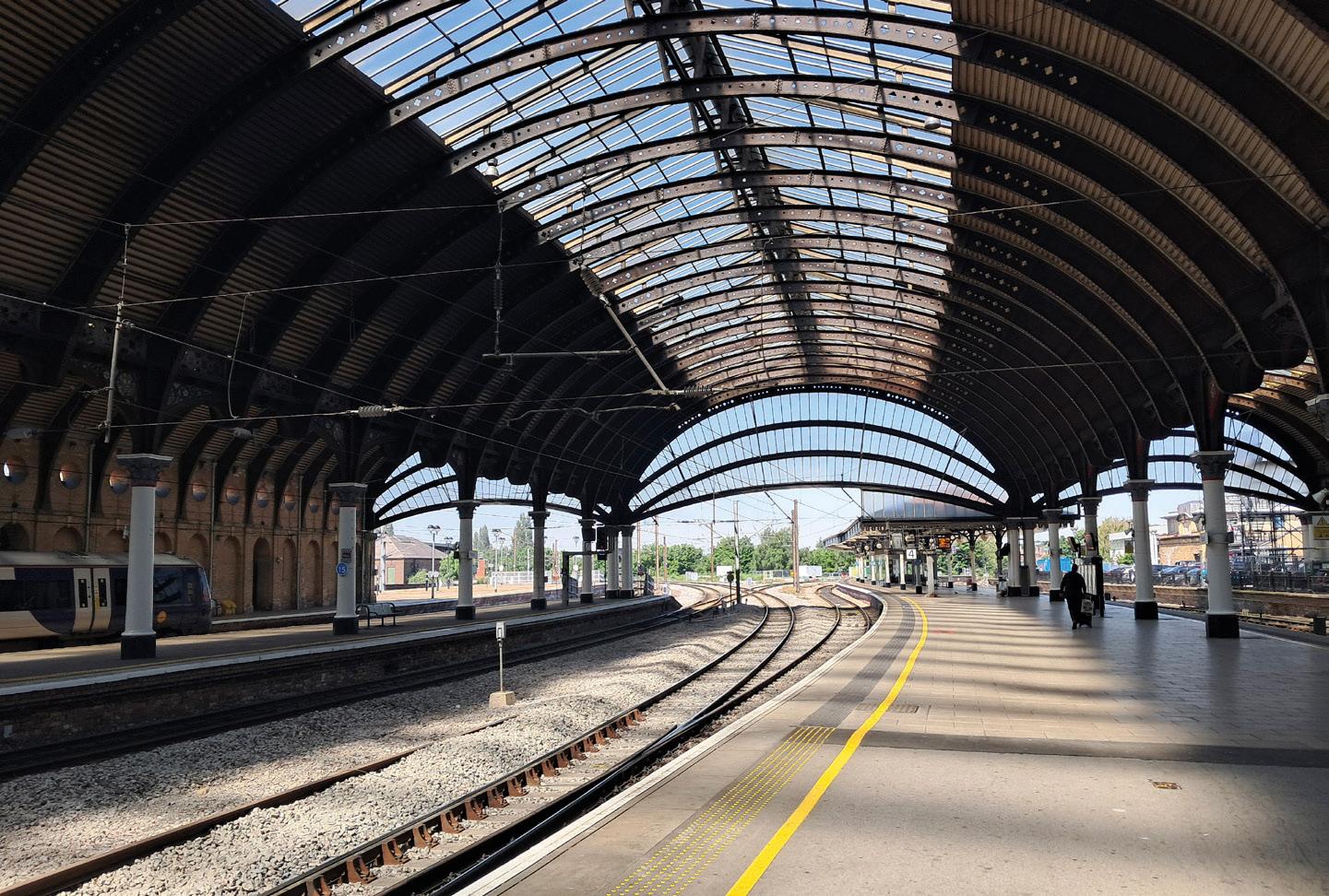
ADVERTORIAL 33 June 2024

Allan Spence works as a safety advisor to Onwave, advising on its OWL Geofencing technology. Reflecting on his career, which included a role as a warranted HM Inspector for over 25 years, he writes about the dangers trackside and the technology that can drive improvements
Resolving the challenges of working safely trackside
t has long been recognised that people just starting out in a business or industry may be at greater risk of injury in a work-related accident through their inexperience. So, it’s reasonable to regard particularly inexperienced workers as vulnerable colleagues for whom employers should ensure extra care. And in many ways, that is right, which is why, when I first started work as an HM Inspector of Health and Safety in the mid-1980s, one group of businesses employing Youth Training Scheme
(YTS) employees got extra inspector focus. We made sure that employers who may not have had a rookie worker for many years, or even ever before, were taking the right precautions and being selective about the tasks allocated.
In the rail industry, those starting out wear blue safety helmets rather than white. This flags that they need extra care from their colleagues and site supervisors. And many contracts limit the ratio of blue to white hats so that there are enough experienced workers to keep the whole group safe. As people

develop their familiarity with being on the track and in railway worksites, and when they are assessed as having learned enough, they ‘graduate’ to wearing a white hat. And it is widely recognised that until people are more experienced and railway savvy, they should not acquire competences that require extra vigilance, more detailed judgements etc.
Is it the fresh-faced new arrivals most at risk?
I have had the unenviable task of investigating many –far too many – railway worker deaths. But none of the railway worker fatalities I have investigated over the last few decades have been raw recruits. In fact, the largest number have been people who have worked in the industry for a very long time. They were far more commonly people towards the other end of their careers; people who others looked up to as being wise counsel or a safe pair of hands.
Only last week, in a safety conversation at a major railway location, a person responsible for managing work permits told me that new starters were easier to mould to required ways of working than some of the old hands who had worked at the same place for 30 years. As technology develops or becomes more affordable, and societal or corporate attitudes to risk change, the way we did things last century may no longer be good enough. Legal duties shift as the state of the art evolves. But embedded habits are more difficult to change.
The railway rule book
Our industry has steadily evolved its rules and procedures since the death of William Huskisson, a leading politician of his day who died after disobeying instructions on the opening day of the Liverpool and Manchester Railway in 1830. Each new hazard revealed in an accident has been resolved by changes to the rule book and related standards. There’s a massive body of knowledge of what has gone wrong, and what could go wrong reflected in those rules. But how many of us are reliable individuals, incapable of
ADVERTORIAL 34 June 2024
I

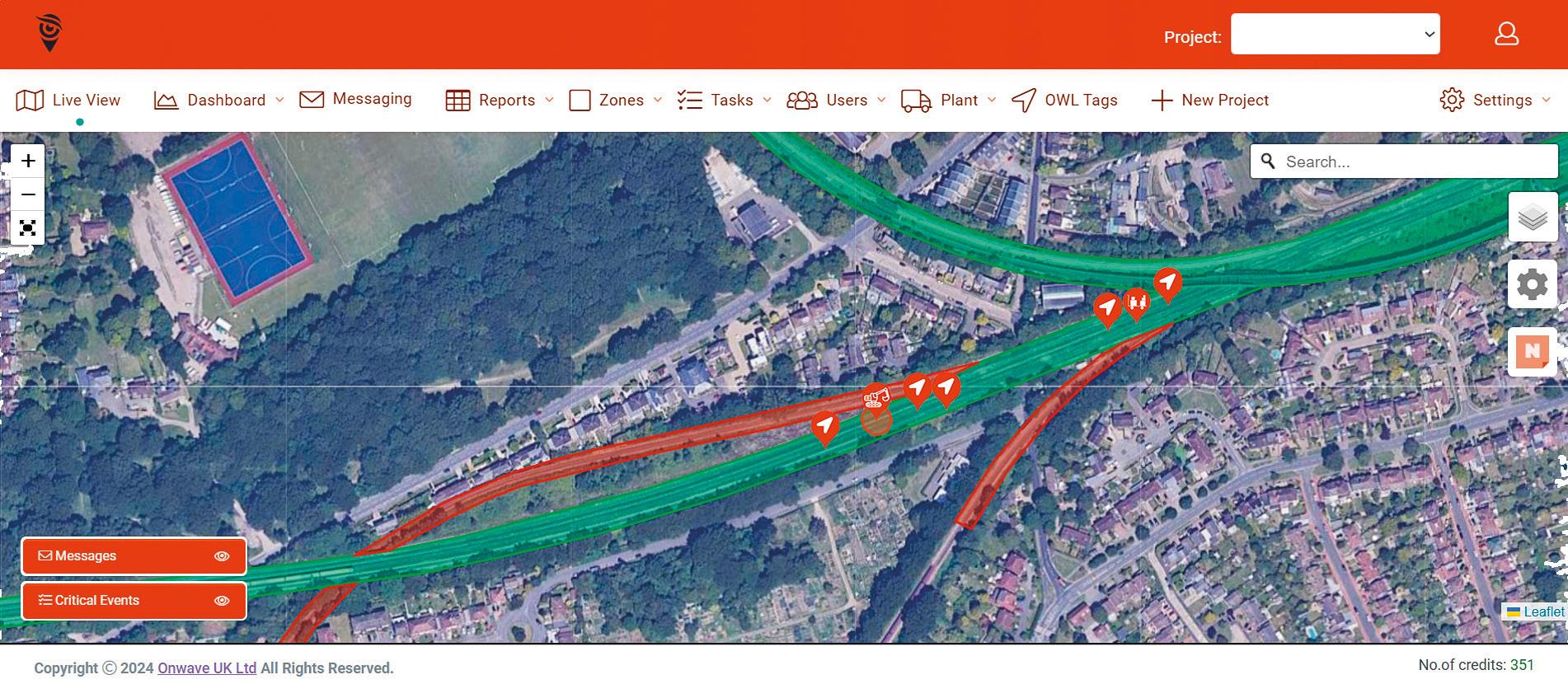
making an inadvertent slip-up? Or how many might be tempted to compromise the rules when other pressures are on?
The nature of risk is that the worst outcome may not happen today. Those tempted to take a shortcut just this once may well get away with it: nothing bad happens. But that only serves to reinforce in their mind, and perhaps the minds of those around who look up to them, that the shortcut or deviation is safe after all. They may chance it again, and again, and again, until the almost inevitable day arrives when the risk is realised. And then it is too late.
In a rigid rules culture like the railway, employers could simply require everyone to follow rules or be disciplined. Sacking someone was often seen as a useful demonstration to their workmates that they must try harder. And it may even be a helpful way to appease an overbearing client who demands to know something has been done after a spot of non-compliance comes to light. But does it achieve anything towards sustainable safety? It really is necessary to understand why people have acted as they have, and often effective root cause investigation will reveal their actions were influenced by other things over which the employer has both control and responsibility.
Safety is our number one priority
How often do we hear companies, senior leaders and others proclaim that safety is paramount? Well, so it should be – everyone going home safely after every shift should be the expectation. The reality is that absolutely everyone faces a range of pressures in doing their job on the railway. They must address many priorities. Often front and centre of a worker’s thoughts is the wrath that will befall them if work is delayed, and a possession is late handing back.
So, the more experienced workers who have learned their trade over perhaps many decades frequently have some incentives to cut corners.
Experience is, in itself, no guarantee against misjudgement from overload due to the complexity

and number of decisions and tasks someone tries to undertake. Or in different circumstances, from underload or boredom when either insufficient or monotonous tasks distract focus from the hazards involved and safe practice. And of course, the length of shifts and the challenge of travelling long distances to and especially from worksites can also impact crisp and accurate decisions.
One consequence of being very experienced is the risk of over-confidence and associated complacency. Reacting to the hazards faced today in the same way as we did decades ago is unlikely to account for today’s changed work environment, emerging risks, or entirely new tasks or ways of working.
Non-technical skills are important to help people recognise and avoid error traps. They are an important part of effective risk control but are unlikely to be the whole answer.
The state of the art
While these risks and reactions are not new, advances in technology now mean that any and every worker, whether novice, distracted, or even complacent from extended experience, can be helped to stay safe on the railway.
Industry solutions are no longer constrained to incrementally changing the rule book and disciplining those who stray. Employers have a responsibility in law to take account of expected human reliability and consider how modern technology can help and, unless the costs are grossly disproportionate to the risk of fatal or life-changing injuries, to factor that technology into their risk controls. Just relying on what we did yesterday will neither adequately protect our people nor satisfy the law tomorrow.
Geofencing technology such as Onwave’s OWL can be used to ensure that all track workers receive a tap on the shoulder if they step outside of their safe working area. This provides an additional layer of protection to both enhance situational awareness and provide track workers with real-time accurate location information – ensuring they are in the right place at the right time, working in the correct location.
Steven Edwards, Workplace Health, Safety, and Environmental Advisor, said: “Geofencing also means the site warden has got a friend. The warden is looking out for anyone straying into the wrong area, but they are only human and if they are momentarily distracted, which does happen, this kit provides an extra layer of protection.”
The technology has been designed to ensure it is easy to use, with zone creation in a matter of seconds via a user-friendly portal.
The portal shows anonymised alerts per zone and per device.
www.onwave.com/owl
ADVERTORIAL 35 June 2024
Samantha Facey, Health, Safety and Security Director at Govia Thameslink Railway (GTR), writes about how health and safety is broken down at the operator
Putting health, safety and wellbeing at the forefront

Safety to me means lots of things, from managing traditional risks, to safeguarding and security, occupational health and wellbeing, and everything in between. It really is all-encompassing and underpins everything we do at GTR, because safety is part of our DNA.
Making sure everyone gets home safely every day is at the heart of our Zero H arm ambition. We want to embed a culture where health, safety and wellbeing are at the forefront of the minds of our colleagues, which in turn will reflect on our customers and in the communities we serve. Our mantra is ‘Be Safe. Feel Safe. Travel Safe.’
We know that to be safe at work means our colleagues need to feel safe whilst they’re here. That’s why we equip staff with training, tools and resources to confidently carry out their jobs, whilst also being able to spot emerging risks, deal with situations on the ground and assign the appropriate support.
To ensure people feel fully supported at work, we have a team of occupational health professionals who carry out routine checks, as well as offering tailored treatment where needed. We have recently welcomed Dr Danielle Eaton to GTR as our Chief Medical Officer. A qualified General Practitioner, Danielle brings with her a wealth of experience in health and wellbeing from working in both the NHS and private organisations. She is responsible for leading our occupational health division and will oversee a programme that sees more than 5,000 medical appointments take place across the business each year.
Late last year, we also created a brand-new role in the safety team for a Head of Policing and Security. This was taken up by Mike Boyce, who has brought 20 years of experience with him from the British Transport Police (BTP). Mike leads the business on all matters of security, crime, disorder and antisocial behaviour and helps to strengthen relationships with the BTP and other key stakeholders.
Protecting the wellbeing of staff and passengers
At GTR, we employ a dedicated Safeguarding and Wellbeing Manager, Laura Campbell, who is responsible for ensuring staff carry out vital suicide prevention and safeguarding training. With vulnerable people using the rail network, it’s also important that our staff are trained and have awareness of how to handle these often-delicate situations. Work in this space relies heavily on strong industry partnerships, which is why we work closely with organisations like the BTP and Samaritans, as well as local charities.
Our frontline staff can be faced with major incidents at any time and will often have to handle unfolding events before support can arrive. I am incredibly proud of the resilience and quick judgement shown by our people – so far this year alone we have awarded nearly 400 colleagues with lifesaving certificates for their heroic actions on the railway. Without staff intervention, there can be
HEALTH AND SAFETY 36 June 2024
devastating and dangerous consequences. Whilst our colleagues do their best to look out for the public, it’s important they are looked after too. That’s why we have various resources on offer at GTR including grief, trauma and bereavement support, a TRiM (Trauma Risk Management) peer support system, an in-house counsellor and access to our employee assistance programme, Care First. We also have an Incident Care Team in place, who provide practical humanitarian assistance to the survivors of rail incidents and accidents.
We have just launched Your Guide to Personal Wellness for colleagues across the business. The guide brings all our resources together in one place, and gives tips and advice on what to do if members of staff are feeling low at work or at home.
We’re always looking out for those travelling on our network, and as well as working with the BTP, Samaritans and Railway Pastors to protect vulnerable people, our team of Rail Enforcement Officers (REOs) and Travel Safe Officers (TSOs) act as a reassuring presence for passengers.
Tackling antisocial behaviour on the railway
It’s no secret that antisocial behaviour is a big problem, but it’s not isolated to the railway. It stems from wider societal issues and feeds into all areas of life. As well as joint patrols and operations with the BTP, in 2021 we started deploying TSOs to increase our presence and carry out targeted patrols and blocks at problem areas, using intel from our teams on the ground. As we’ve seen success with increased presence, we have doubled the number of TSOs on the network from 20 to 40 in March this year.
Using intelligence-led reports to tackle assault, abuse and other antisocial behaviour has led to a year-on-year reduction in incidents and has helped to reduce the number of stations and areas at-risk on our network (down by 13 per cent from October 2023 – March 2024).
Last year, I was incredibly proud that GTR achieved the Safeguarding on Rail accreditation. After being assessed, we were awarded a pass mark of 91 per cent and the BTP said that every member of staff interviewed during the process was knowledgeable and showed real passion for protecting vulnerable people.
We have a duty of care to our passengers and our people. Physical or verbal abuse of any kind will not be tolerated. In addition to cracking down on this behaviour, we’re also increasing the information and resources available to staff to help keep them safe at work. This is a true reflection of my team and the wider business.
We’ve recently produced a Guide to Personal Security, which is available as an online document and is also being sent out as hard copies to every member of staff. The guide includes helpful information on managing incidents and crimes, how to safeguard on our network and how to correctly report incidents using our Zero Harm app. Information and evidence supplied via reports can lead to prosecutions, so it’s vital people understand how to submit a report and what sort of evidence should be considered. This can all be found in the
guide, along with information on what to expect from the BTP once reports have been submitted.
We are trying to increase the number of colleagues wearing Body Worn Video (BWV) when out and about, as we know they help to deter crime and keep our people safe. In fact, BWV can reduce staff assaults by almost 50 per cent. The Guide to Personal Security includes top tips for using BWV cameras, alongside the benefits. Based on colleague feedback, we have recently undergone a companywide roll-out to replace our BWV cameras with more lightweight models, making them easier and more comfortable to wear.
Further demonstrating our commitment to tackling antisocial behaviour across the railway, GTR has invested in three new roles in the safety division. These are for a Security Improvement Manager, a Safety and Security School Engagement Manager and a Body Worn Video Project Manager.
The Security Improvement Manager is being employed to encourage a culture of reporting crime and antisocial behaviour across the business. The role will include close working alongside the BTP to gather data and information, as well as supporting improvement initiatives and promoting and recommending crime reduction and prevention measures.
To tackle antisocial behaviour at a local community level, it’s important that we’re engaging with schools on our network. The newly created Safety and Security School Engagement Manager role is responsible for delivering our Safety and Security education programme, which includes training materials, roadshows and school visits. This role will also co-ordinate public education and reassurance events across our network.
Finally, to deliver on our objective for more colleagues to wear and utilise BWV, we have developed a new role that will design, deliver and monitor a BWV deployment and implementation plan for frontline colleagues.
The future
Tackling antisocial behaviour will remain a big focus for the year ahead. As a business, we’ve developed a specific antisocial behaviour improvement plan that includes funding for a number of things including the further roll out of BWV, tools and training for colleagues and material for school engagement.
Everyone travelling with us deserves to get home safely, and our people should feel safe when they’re at work. Improving the way we input and analyse data, as well as working closely with partners, will help us to be better equipped when it comes to crime and antisocial behaviour, ensuring our shared resources are deployed effectively across the network where they are most needed.
To ensure we meet our commitments and show we truly care, we have recently signed the Institute of Customer Service Charter that will hold us to account. This is the first time the business has worked with the institute, and we will be looking at how to have a positive impact on its Service with Respect campaign, aimed at a change in the law to protect customerfacing workers from abuse.

Making sure everyone gets home safely every day is at the heart of our Zero Harm ambition
HEALTH AND SAFETY 37 June 2024
Jools Townsend, Chief Executive of Community Rail Network, looks back on the More Than a Railway campaign, which marked this year’s Community Rail Week
Inspiring array of activities celebrates Community Rail Week 2024
ommunity Rail Network delivered its fourth annual Community Rail Week event last month, promoting the positive differences that community rail makes to so many communities across Britain. There are now 75 community rail partnerships (CRPs) and nearly 1,300 station groups, all engaging communities with their local railways and stations, bringing people together by rail.
This year’s More Than a Railway campaign, sponsored by Rail Delivery Group, aimed to generate nationwide curiosity about community rail, shining a spotlight on the benefits the grassroots movement brings to local communities. The 110 activities showcased how community rail increases access to opportunity, helps communities to have a voice on rail, bolsters sustainable travel and tourism, tackles social isolation, and puts railways and stations at the heart of community life.
The week offered a snapshot of community rail’s year-round work, run in partnership with the rail industry and community partners, which involves more than 8,000 staff and volunteers, and directly engages and empowers an estimated 125,000 people annually. The movement now spans 34 per cent of Britain’s railways and half of its 2,580 stations, and the network was a hive of excitement throughout the week. Social media was also awash with activity, with more than five million users reached through #CommunityRailWeek posts from partners and supporters.
Jools said: “To kick off the week, we joined Severnside CRP, the Friends of Yatton Station, the Strawberry Line Café and Cycle Project and GWR for a celebration of community rail activities at Yatton and across the South West. This includes a stationbased social enterprise providing jobs, training and skills among young people with learning disabilities; a cycle hub supporting greener journeys; a community garden boosting biodiversity; and a programme engaging thousands of children and young people on rail confidence.”
Just prior to the announcement of the General Election on the Wednesday of the week, the Shadow Rail Minister, Stephen Morgan MP, attended a festival of urban community rail activity at Alexandra Palace Station, to hear about how the movement is making a bigger impact across London and the South East.


Jools added: “We were delighted to host a visit for the Shadow Rail Minister Stephen Morgan MP to meet the Friends of Ally Pally, along with representatives from GTR. The Shadow Minister had a tour of the station, with its vibrant community garden and artwork displays, and chatted extensively with volunteers from Ally Pally, Gipsy Hill and Welwyn Garden City about the work they do to bring communities together and promote sustainable travel around London. We spoke about how our members across Britain dedicate their time and creativity to making our railways more accessible, inclusive and attractive for all, and how we support the movement to provide unique insights and policy solutions on a national scale.”
Elsewhere, a group of female students studying GCSE science were welcomed to the Newton Heath TrainCare Centre in Manchester by Community Rail Lancashire and Northern, gaining valuable
insights into using rail to access work and training opportunities and potential careers in the industry. CRPs and station groups also showcased their work in promoting rail tourism at larger stations across the network including Birmingham New Street, Manchester Piccadilly, Sheffield, and Nottingham, with other highlights including ‘try the train’ trips for those with additional travel support needs, guided walks and bike workshops, rail safety sessions, and various cultural, art, and nature projects.
Jools added: “Overall, the week really captured the passion and commitment which makes the community rail movement so relevant and important, especially at the present time. We could not have hoped for a better response from members, partners and the public during this year’s campaign. Thank you to every single person who got involved for your support and enthusiasm.”
C
COMMUNITY RAIL WEEK 38 June 2024
Images: Community Rail Network

The Gripple SwiftLine Rail Dropper is the Network Rail-approved game changer for rail electrification. Easy to install with minimal additional training required, it shortens project durations and helps contractors provide more competitive quotes.
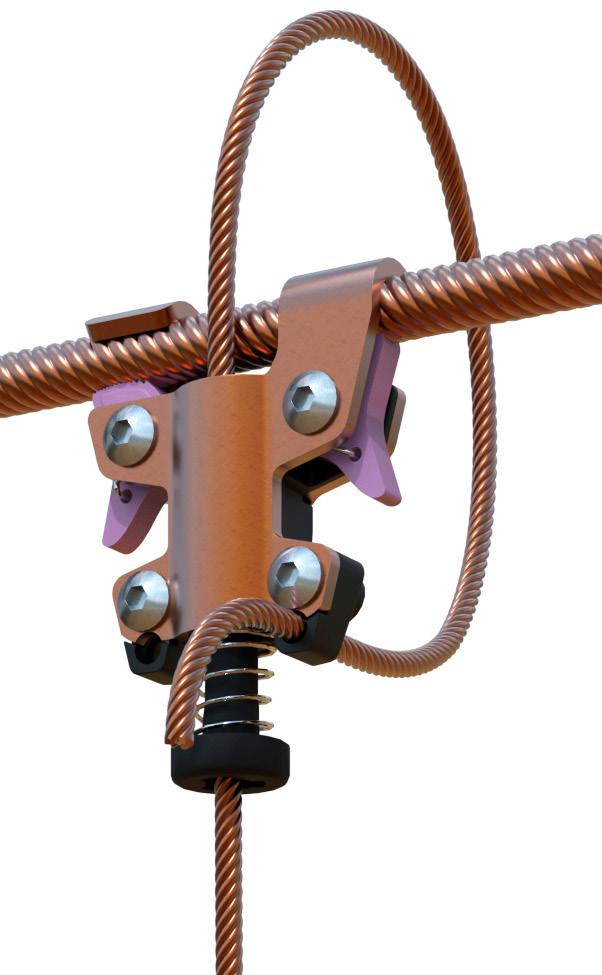
This isn’t just a rail dropper. Available from Unipart Rail (Official UK Distributors) E: enquiries@unipartrail.com T: +44 (0)1270 847600 Gripple E: sales@gripple.com T: +44 (0) 114 275 2255 You’ve got to see it to believe it gripple.com/swiftline/ It’s faster project delivery.
KeolisAmey Docklands is celebrating its 10th year of operating the Docklands Light Railway (DLR). Managing Director Richard Graham reflects on the success and why there is a lot to look forward to in the year ahead

A decade of operational success on the Docklands Light Railway
eolisAmey Docklands (KAD) has navigated through a number of challenges in recent years while supporting an ever-growing number of passengers on the network. From grappling with ageing assets, depot expansion works and introducing new service timetables, the operator’s commitment to success has enabled it to maintain seamless operations and deliver service excellence every day, even during the height of the COVID pandemic.
“We have a fantastic group of people who really do go above and beyond every single day,” said Managing Director Richard Graham. “Just one example was the recent London Marathon in which we maintained a reliable service and high performance for more than 400,000 passengers. To ensure that was the case we had four times as many volunteers this year who gave up their Sunday to come and help out our frontline colleagues on the network. That is the dedication of the staff and why I am so proud to work with this team.”
The DLR began operating in 1987 with 11 trains serving 15 stations, and in its first year of operation carried 6.7 million people. For the last 10 years KAD (a joint venture formed between 70 per cent Keolis and 30 per cent Amey) has been operating and maintaining the DLR, in which time the railway has gone from strength to strength. Now, the entirely stepfree railway has 45 stations, 40km of track and 149 carriages.
“Ridership continues to grow and we will have carried one billion passengers before the end of the franchise next year,” added Richard. “It is a very busy network in terms of ridership compared to all the franchised operators in the UK and although we might only be a small network with lots of frequent stops, a lot of people rely on us. It has also been helped by the opening of the Elizabeth line coming through this part of London, bringing more people into the area and helping to increase the overall connectivity in East London.”
It’s been some journey for Richard himself, who
was appointed Managing Director in November 2021. Starting his career as a mechanical engineer, his recent roles have included Performance and Development Director of Keolis UK, being on the board of directors for KeolisAmey Operations in Wales and KeolisAmey Docklands, and working in the United States for Keolis heavy rail operation in Boston – Keolis Commuter Services.
“I first worked on the DLR around 12 years ago so it has been really nice to come full circle and be back as Managing Director of KAD. I’ve thoroughly enjoyed the last two-and-a-half years, taking over from my predecessors who have done a fantastic job over the last 10 years,” said Richard.
“The DLR is a hugely iconic and high-performing operation and it is a huge honour to lead the team here at KAD. But there isn’t too much time to reflect on the past because there is much to look forward to over the next year including the introduction of new trains into service and the finalisation of the tender process for the next contract to operate the network.
K
ADVERTORIAL 40 June 2024
We very much want to be here for the next 10 years and we’re working hard to make that a reality.”
Speaking to Rail Director, Richard was keen to highlight three areas of particular importance, a key to the success in the past and a driver in the vision looking forward.
Collaboration
Richard puts the success over the last decade down to an excellent relationship with Transport for London (TfL) with both organisations having visions and goals that are aligned.
The platform was set at the start of the franchise when as part of its bid KeolisAmey said it wanted to be compliant with British Standard 11000 (now changed to IS0 44001) to build a collaborative working framework. TfL did the same on its side, with both parties working together and getting certified together.
“Going through the certification process mapped out the behaviours we wanted to see and the frameworks we were going to work under, but it also set the tone as to what was important to us as a franchise,” added Richard, who said the relationship has been recognised as an excellent example of public private collaboration. “The relationship and contracting model has worked really well and through that we’ve been able to get through challenges like COVID, during which we kept the railway running all the way through the pandemic. I would like to thank my colleagues at TfL for all their support and dedication over the years here at DLR.”
KAD’s new accessibility strategy has recently been launched which is centred around providing access to the railway for more people. This ties into TfL’s Equity in Motion strategy, which has been built around four pillars – an equitable customer experience, protecting and enhancing connectivity, keeping travel affordable, and reducing health inequalities.
In the next three years customers will also see a whole fleet of new trains on the DLR. Fifty-four new trains, featuring spacious walk-through carriages, live travel information and air conditioning, will replace the older fleet of DLR trains, some of which are more than 30 years old, whilst also boosting capacity across the network. Three new trains are currently going through testing, with Richard emphasising the importance of collaboration in ensuring this is completed successfully.
“In 2015 we co-developed a vision with TfL called Service Excellence Every Day (SEED) and that has been the lifeblood that has run through the franchise,” said Richard. “We live by the spirit of collaboration and SEED is what we echo around the organisation. I’m very proud of our relationship with TfL and in the working environment we have here.
“We have a mantra at Keolis which is around ‘Thinking like a Passenger’ and we work together with TfL to consider what is better for the passenger in the longer term, then work hard to achieve that.”
Operational performance
DLR prides itself on its 99 per cent reliability record, ensuring it remains one of the best performing railways in the UK. Already this year KeolisAmey has broken two records, hitting five consecutive 100 per
cent days in a row in February, and secondly in March having its best week of performance on the network in the franchise.
It comes off the back of new timetables, the latest launched last May, which have seen 38 per cent more services than there were during COVID and 11 per cent more than pre-pandemic.
“We’ve had two new timetables since COVID, prior to that the last change we did was back in 2015, so there’s a process of continually improving and optimising these,” he said. “Over the last 12 months we’ve been able to tweak various parts of the new timetable to improve the performance.
“Also important with operational performance has been ensuring we are looking after all the critical assets and that we’ve got really good planned preventative maintenance. When you run a 99 per cent railway you don’t need much to go wrong to miss the targets, so we need to be really on top of the assets and how those perform.”
The performance achievements follow a huge recruitment drive since COVID in light of more services. There are around a third more passenger service agents which has meant coaching, training and development with the operator also using it as an opportunity to adapt current training to include continuous improvement processes.
Despite many changes, one thing that has remained paramount is the safety of staff and customers, with KeolisAmey having adopted a ‘Restorative Just Culture’ approach which has had a profound effect on organisational culture and safety performance. It is an initiative that was recognised at last year’s Rail Business Awards, being Highly Commended in the Safety & Security Excellence category.
“Restorative Just Culture is about not blaming individuals when incidents happen, but learning from them instead,” said Richard. “People come to work to try and do the right thing and occasionally make mistakes, blaming and punishing them doesn’t help. It has been a journey we’ve been very proud of from a culture side.
“We’ve also been able to put in a few safety innovations such as using AI on some of our CCTV which picks up when anyone is trackside giving us an automatic alert. It won an award at the Global Light Rail Awards in October, and is currently in operation at one station with us going through the plans to roll out across the network. Overall I’m delighted that we’ve not only increased our operating performance, but are making it a safer network as we continue to operate and improve.”
Community
KAD is not just focused on its colleagues and customers, but is also passionate about delivering social value and customer service excellence across its network and in its communities.
“The DLR connects all parts of the Docklands together and we’re really proud of everything we’ve been able to do for our community, which goes beyond the services we provide,” said Richard. “It all comes back to our mission to not just connect the community but also to support it in growing, developing and thriving.”
KAD colleagues are heavily involved with local charities, the organisation runs community market places, and among its staff are a group of community ambassadors, who last year alone took part in 25 career talks, carried out more than 5,000 supported trips on the railway, and held more than 400 open days.
“We also have an important part to play around local employment with development, training and apprenticeship schemes and strive to be representative of the communities we serve,” said Richard. “To celebrate our 10th anniversary of operation we launched a Community Grant Fund programme aimed at local groups and organisations to improve the lives of people living and working near the DLR network. Starting in January, for 10 consecutive months community groups have the opportunity to bid for up to £10,000 to support and fund local initiatives. It is a pleasure to be able to do this and further strengthen the positive impact we can have on the community we serve.”

We have a fantastic group of people who really do go above and beyond every single day
ADVERTORIAL 41 June 2024
Director of CIRAS confidential safety hotline, Catherine Baker, shows that there is more to listening well than we might think

Building a listening culture
When leaders take listening for granted, we all miss out. Good listening can provide critical information for effective decisions. When a decision affects safety, it’s in everyone’s interests to listen.
Often, we listen out for what we expect or hope to hear; we are not really listening at all. Unconsciously, we may even stop hearing what someone is telling us if we believe we have heard it before and cannot help. Paying attention can teach us more than we realise. Nuances in a conversation or seemingly minor concerns can hint that a situation needs a closer look.
Safety leaders may expect that an open-door policy and encouragement to share concerns guarantee they will hear from those with something to say. These are both very important if we want to hear more from our people. But will they always share what they know with you? How can we extend our listening to voices that aren’t cutting through?
The answer to that first question is, ‘No’. Research shows that one in every two people withhold their
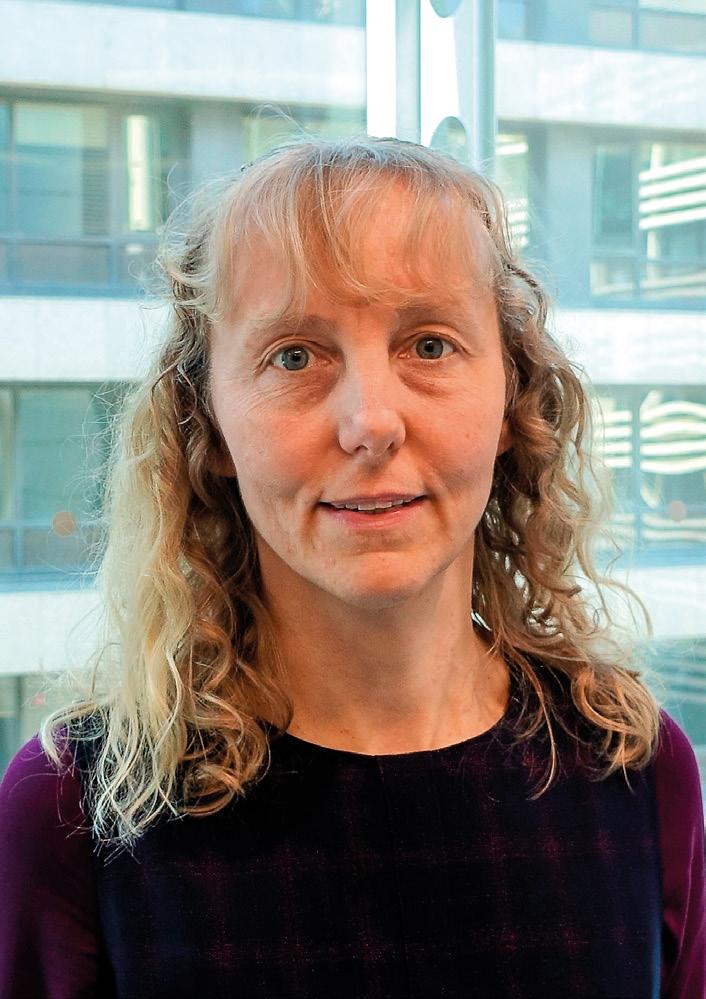
concerns, even if there could be fatal consequences to doing so.
A company with a positive safety climate has managers who visibly care about safety, actively share information on safety and reporting systems, and encourage safe practices and reporting. Despite this, individual perceptions and past experiences can still cause a reluctance to share concerns. Factor in limited time and heavy workloads, and people might decide it isn’t worth their while.
When someone believes they won’t be listened to, perhaps because they regularly feel excluded or not heard, they are unlikely to say anything when it really matters. They also might not recall a time that raising a concern has made a difference, even though this sort of feedback helps to demonstrate that listening is taking place.
Getting the message
Hearing more subtle concerns that you might usually miss could set off a chain reaction where more people feel listened to and are then prepared to
SAFETY 42 June 2024
voice concerns more often. When this listening leads to action and others know about it, then a listening culture can grow.
Organisational behaviour and culture specialist Dr Mark Noort studied the black box recordings from 172 aviation incidents that resulted in fatalities. His research showed that people only failed to raise safety issues in five per cent of the recordings. What varied was how much they said and how often they said it. The recordings showed that as the incidents progressed, people spoke up less, especially when there was evidence that they were not listened to.
His wider research consistently found that for people to be motivated to raise concerns, they need a low workload. They also need to be part of an organisation with a weak hierarchy. Additionally, access to someone who they believe will listen is, unsurprisingly, important.
Dr Noort carried out an experiment that showed the subtleties of safety voice. A researcher was to walk across a plank between two chairs. Volunteers in the study were told the plank could not hold a person’s weight—although it could. He observed the volunteers’ behaviour in response to this. Sixty-six per cent of volunteers were concerned about the situation being unsafe. They either raised no concern because they felt no responsibility, were not aware of the issue, or were afraid to speak up. Some gave clues but did not actively express their concern. They used nuanced speech instead, such as “Are you really going to walk over that?”
One way we can listen better is by changing our expectations of how someone will voice concerns and listening to what people are really saying, instead of what we are expecting. Can you be an agile listener?
Different people might raise the same issue in completely different ways. Picture a scenario with a broken gate. Outspoken Ashley might say to you, “The gate is broken.” New recruit Sam might ask, “Is the gate always tricky to lock?” Contractor Charlie might say, “Sorry I’m late. I had some trouble with the gate.” Pat says nothing, just fetches a plaster from the first aid box to patch up a finger that got trapped in the gate.
Someone’s personality, position at work, and experiences, will all impact how they raise a concern, but it is best not to make assumptions either. The key, as always, is to listen.
Making listening easier
Understanding that people raise their concerns in different ways shows why it is important to have a range of reporting options. Offering choice means you hear more.
This echoes the active listening approach of employee engagement. A wider range of methods to listen to employees, such as regular pulse surveys, focus groups, and digital listening, is linked to several benefits. These include innovation, better responsiveness to change, and higher trust and engagement.
Learning from the employee engagement world could benefit safety too. Employee listening specialist Dr Kevin Ruck suggests a six-step approach to establishing a listening climate. This starts with auditing senior leader perspectives on the value of listening and employee satisfaction with listening, and
the methods being used to listen, before analysing the findings. This analysis can be used to set measurable objectives to build a listening plan for regular review and evaluation.
Listening is a two-way process
Who is listening makes a difference to whether something is heard. They might respond to someone instinctively on a personal level, with unconscious or conscious bias. The listening process impacts the listener and affects their response to what they are hearing. Neither listener nor speaker is passive.
Safety concerns are a positive attempt to make a difference and protect an organisation and its people from harm. Sadly, they are not always seen in this light, and the listener can perceive concerns negatively.
The person raising a concern may feel that they are sharing valuable information to help the organisation improve – using the promotive voice. But if their concern is seen as bringing to light a failure or mistake on behalf of the organisation or the listener, even inadvertently, it can mean their concern is perceived negatively – as the prohibitive voice. Both voices raise a challenge to the organisation as it is.
If the listener is aware of their emotional response to a concern, it can help them to separate this more clearly from the speaker’s intention and to listen more effectively.
Listening with CIRAS
Providing feedback and having the opportunity to respond to a concern may help the listener feel more positive about the process. That’s especially true if they can show action and resolution. The CIRAS reporting process is one example of this. CIRAS closes the feedback loop, so the reporter feels listened to. In turn, it gives the organisation space to investigate the concern and really think about their response.
Listening can easily be taken for granted – don’t we do it every day? Listening effectively takes work, but the benefits are more than worth the effort.
See www.ciras.org.uk/rightcall for information.
When someone believes they won’t be listened to, perhaps because they regularly feel excluded or not heard, they are unlikely to say anything when it really matters

SAFETY 43 June 2024

Jo Hall, Managing Director (MD) of SELECT TALENT, discusses a company rebrand and how rail and infrastructure organisations can secure the best talent
Shaking up the recruitment offering
SELECT TALENT provides a dedicated and consultative style partnership when it comes to recruitment. On the eve of its 10th birthday, the company, formerly known as Selective Resourcing, has announced a rebrand to reflect its ability of providing a premium supportive service, taking recruitment pressures off the shoulders of organisations in the rail sector.
“We’re driven by our values developed whilst operating as in-house recruiters and bring that expertise to our clients by developing employer brands and creating innovate candidate attraction campaigns,” explained Jo Hall, MD of SELECT TALENT.
The vision is driven by Jo’s experience in recruitment, having worked as a senior in-house recruiter for Network Rail initially on the flagship Engineering Apprenticeship Scheme, as well as big infrastructure investment programmes such as Crossrail and Thameslink and several years at Royal Mail.
SELECT TALENT initially started as a generalist recruitment company, before the decision was made to concentrate on the rail and infrastructure sectors and really engage with the supply chain; a decision that has seen the company grow from strength to strength. It now operates as an extension of a company’s team across a range of businesses of all sizes, fulfilling a promise of never working with a direct competitor while working with a business.
“We’re here to add value; to help with recruitment strategy, attraction and delivery, early careers, equality, diversity and inclusion in recruitment, as well as assessment and selection,” added Jo, explaining how they draw on years of experience and the ability to challenge thinking, creating campaigns that are developed with diversity in mind, providing a wide range of candidates.
“We work by booking out dedicated time for our clients and making them the priority until a role is filled.”
The key to the business’s success is its sector knowledge, high-quality service level, and a great

return on investment driven by its comprehensive suite of solutions, which include:
Recruiter on Demand (RoD): Fully outsourced recruiter to work on one to three roles a week supporting headhunting, CV sifting, interviewing etc. Either full time or part time from as little as one week’s support.
Resourcing as a Service (RaaS): A fully outsourced service with SELECT TALENT acting as your in-house resourcing team. Paid monthly, this is ideal for periods of growth in which a client can outsource up to 10 vacancies over a minimum of three months.
RaaS Light: Ideal for niche or one-off hires. Treated as a project to enhance an organisation’s brand and maximise candidate engagement with booked time in the calendar to focus on getting the role filled.
RaaS Ultra: Designed to meet an organisation’s annual recruitment needs. Job credits utilised over 12 months. This is ideal for companies that know they will need to hire at least five people over a year, with a cost-effective bill monthly solution.
“Our solutions are not reactive but proactive, delivered by understanding the recruitment challenge, what resources are needed, and how it
can be achieved in a more efficient and successful way,” said Jo. “The rebrand is centred on the platform and reputation we have already created, and developing it further to provide the answers to the challenges companies are facing, providing that premium supportive service.”
Tools and technology underpin how SELECT TALENT operates. It has a transparent recruitment process developed and continually improved using best-in-class technology and carefully developed strategic relationships with job board partners. Another key investment has been in sourcing technology that picks up candidates that might otherwise not be found due to not having keywords in profiles that others have. All in all, it ensures the best techniques to find its clients the candidates others can’t, to help clients stand out in a crowded market, and to provide an innovative, simple and best-in-class service.
Jo, who is a passionate advocate of EDI across the rail sector, volunteering as a working group member for the industry’s EDI Charter, added: “We use one of the top-rated recruitment systems which provides our clients with the ability to view candidates against their jobs in real time with all of their documents and information in one place.”
One of the top tools that SELECT TALENT has recently invested in is a tool where it can automate an email outreach campaign to candidates. Those sourced by the campaign will have four carefully crafted emails to engage them about a vacancy.
The organisation has also been working with video in its candidate outreach for over two years now, which is especially effective if a client wants to sell themselves as an employer, engaging candidates in their culture and providing detail above and beyond a job spec. This has proved really successful and helps clients improve their candidate journey.
Jo said: “Overall, we have developed the solutions that can really help the recruitment challenges facing the rail industry and I’m excited about what the future holds.” www.selectiveresourcing.co.uk/
ADVERTORIAL 44 June 2024














IMAGINE THE JOURNEY
IMAGINE THE JOURNEY



SIGNALLING CONTROL
SIGNALLING CONTROL






















Operations wide, results focused, digital management; improving performance and increasing capacity.
Operations wide, results focused, digital management; improving performance and increasing capacity.



Digital platform with automated movement authorities. Integrates with all interlockings and any TMS; reducing the cost of operations and infrastructure renewals.
Digital platform with automated movement authorities. Integrates with all interlockings and any TMS; reducing the cost of operations and infrastructure renewals.
Real time, disruption management. Plan optimum stock and crew utilisation; improving service resilience and customer satisfaction.
Real time, disruption management. Plan optimum stock and crew utilisation; improving service resilience and customer satisfaction.
Customer communication, data gathering and analytics; delivering personalised engagement and informed journeys.
Customer communication, data gathering and analytics; delivering personalised engagement and informed journeys.
www.resonate.tech
TRAFFIC MANAGEMENT
CUSTOMER XPERIENCE
OPERATIONS MANAGEMENT
www.resonate.tech
TRAFFIC MANAGEMENT
CUSTOMER XPERIENCE
OPERATIONS MANAGEMENT
Railway Industry Association (RIA) will be celebrating its sesquicentennial anniversary next year. It is marking the occasion with the RIA 150 Celebration next year
150 years of championing the UK railway industry
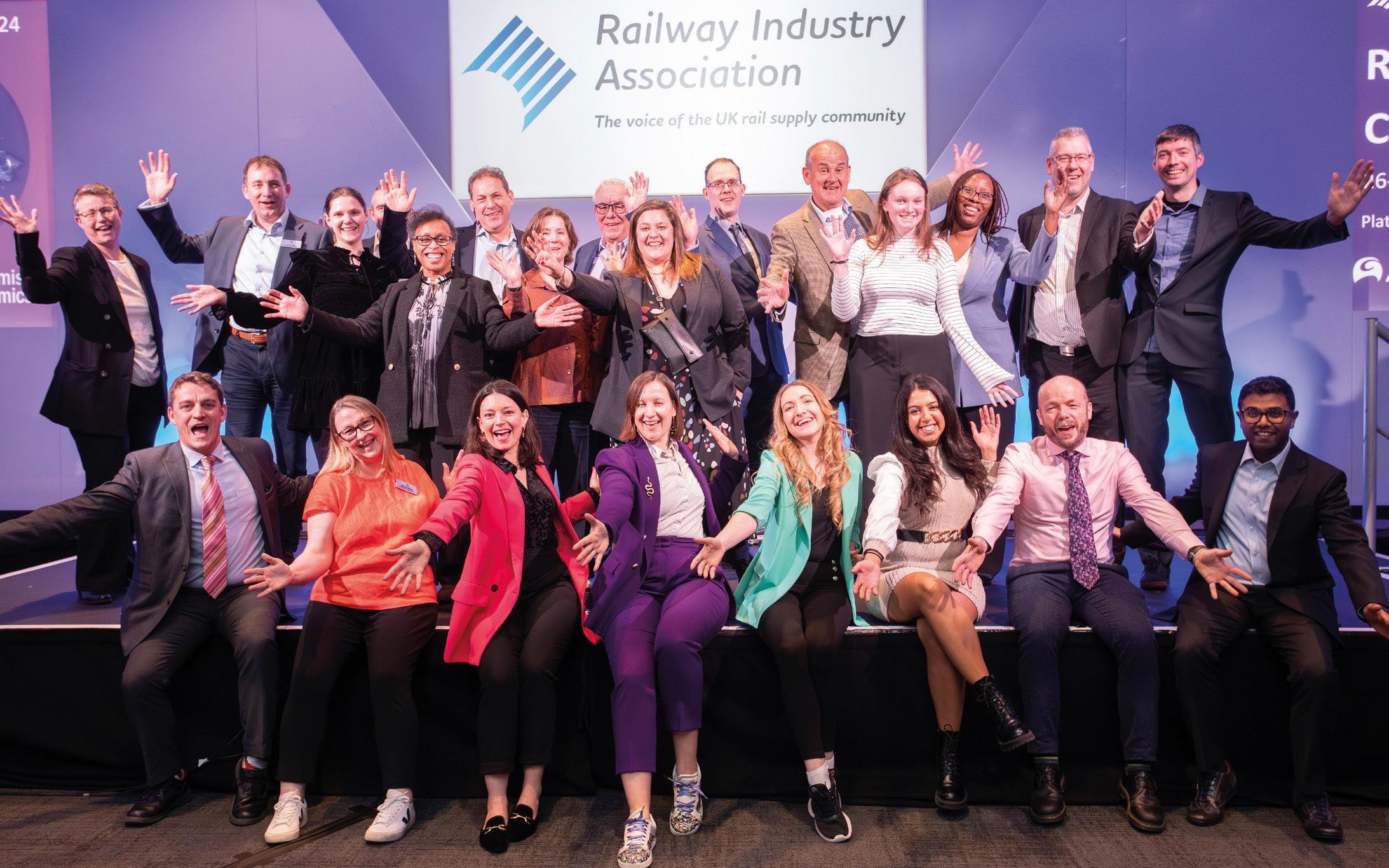
RIA has grown, developed, and evolved quite significantly since it was first established in 1875. One thing that hasn’t changed is the passion of its people in representing UK-based suppliers to the railway industry and being the voice of the UK rail supply community, helping to grow a sustainable, highperforming railway supply industry.
“RIA has more than 360 companies in membership in a sector that contributes £43 billion in economic growth and £14 billion in tax revenue each year, as well as employing 710,000 people,” explained RIA Chief Executive Darren Caplan. “It is also a vital industry for the UK’s economic recovery, supporting green investment and jobs in towns and communities across the UK; for every £1 spent in rail, £2.50 is generated in the wider economy.
“RIA’s membership is active across the whole of railway supply, covering a diverse range of products and services and including both multi-national
companies and SMEs (60 per cent by number). It is an incredible milestone to be celebrating 150 years of representing and campaigning for the UK rail supply community and we are looking ahead to an exciting future for the industry as rail passengers and freight levels grow in the years ahead.”
Something that has remained true throughout the 150 years of the organisation has been its success in campaigning for and representing the interests of the industry and its supply chain. That stems from day one, when in 1875, major manufacturers met and agreed to pursue legal action against the London & North Western Railway, which was supplying Lancashire and Yorkshire Railway (L&YR) with locomotives despite a potential amalgamation of the two companies earlier being rejected by Parliament.
On June 4, 1875, they set up the Locomotion Manufacturer’s Association to protect the interests of the locomotive builders and Ephraim Hutchings
was appointed the first Secretary of the Association.
A High Court injunction on the London & North Western Railway was obtained on 16 December 1875, and between 1877 and 1880 the association fought a number of legal disputes to prohibit the manufacturing of locomotives by railway companies, unless explicitly stated. This only changed in 1968 when the Transport Act allowed railway workshops to manufacture equipment.
In 1957 the organisation became known as the Locomotive and Allied Manufacturers Association, after its membership was expanded to not only be open to the builders of complete locomotives, but also those companies in the lower tiers of the supply chain.
In 1971, the organisation took on its present title – the Railway Industry Association – as its membership broadened to include companies involved in the provision of infrastructure for rail.
As RIA has welcomed a wider membership, its services and offerings have continued to develop,
RAILWAY INDUSTRY ASSOCIATION 46 June 2024
The RIA team pictured at this year’s Innovation Conference in Wales
becoming more involved in promoting the rail industry overseas, lobbying Government for the rail sector, providing technical advice and providing more networking events and conferences.
In honour of the approaching 150-year milestone, there will be a RIA 150 Celebration taking place on Wednesday, July 10, from 6pm, with members and clients invited to celebrate in London to mark the occasion, network, and look ahead to a bright future.
Grace Smithen, RIA’s Senior Marketing and Events Manager, said: “This momentous occasion promises a lively celebration of the industry’s storied past and promising future. The festival epitomises the association’s enduring legacy of innovation and collaboration.
“As attendees gather to commemorate this remarkable journey, they not only honour the association’s remarkable history but also celebrate the enduring partnerships and shared passion that have propelled the rail industry forward over the past century and a half.”
Among the guests will be RIA’s new Chair Noel Travers, who started in post earlier this month. The Managing Director of international railway engineering solutions and services firm and RIA member, XRail, who served on the RIA board from 2018 to 2021, said: “It is a great honour and privilege to become Chairman of the UK’s oldest and most distinguished railway trade association, especially as it approaches its 150-year anniversary in 2025.
“Both the start of a new Control Period, CP7, and a new post-election Government, whatever its colours, this year are real opportunities to restate the hugely important role the UK rail supply sector plays in creating jobs and GVA across the national economy, as well as supporting innovation and skills in rail.
“I look forward to working with Chief Executive Darren Caplan, and the full RIA team, to play my part in helping to take RIA to the next level for its members and to build a bigger and better railway industry at this pivotal moment in the history of UK rail.”
He has replaced David Tonkin, who has stood down after seven years in the post. David said: “It has been a privilege to serve as RIA’s Chairman these last seven years, and to be involved with RIA in various roles and as a member for many years before that.
“RIA has an incredibly important role, representing its members and helping them to navigate all manner of challenges and opportunities. Having played my part as its Chair since 2017, it is now time for a new Chair to take up the cudgels and I am delighted that Noel Travers – who has served on the RIA board previously – will be my successor. I wish him, Chief Executive Darren Caplan, and the RIA team the very best in taking RIA forward into its 150th year, and the next stages of its development.”
RIA 150 Celebration takes place on Thursday, July 10 2025, at 6pm, at Vauxhall Food and Beer Garden, 6A Lambeth Pl, London. There will be a variety of street food traders from around the world and an awards ceremony celebrating the organisation’s longest-standing members.
Tickets are £50 plus VAT for RIA members and £75 plus VAT for non-members, which includes food and drink.
Visit www.riagb.org.uk/RIA150



Director-Generals & Chief Executives of RIA
1875 - 1902: Ephraim Hutchings
1902 - 1933: Gordon W Dabell
1933 - 1953: John W Vaughan OBE
1953 - 1985: George R Curry
1985 - 1999: David Gillan
1999 - 2017: Jeremy Candfield
2017 - present: Darren Caplan
Top: Vauxhall Food and Beer Graden, the venue for the RIA 150 Celebration
Above: The first office of the association
Left: Ephraim Hutchings the first Secretary of the association
RAILWAY INDUSTRY ASSOCIATION 47 June 2024
The Rail to Refuge initiative has marked its fourth anniversary, with statistics revealing dozens of women, children and men are using the free train travel to fl ee domestic abuse every week
A lifesaver for hundreds of people escaping domestic abuse
“If you stand up for what you believe in then amazing things are going to happen.” That is what Darren O’Brien, Southeastern’s Retail Systems and Contracts Manager, said when, following his suggestion, the train operator introduced the Rail to Refuge scheme, offering free train travel to escape domestic abuse and access refuge accommodation.
Four years after a partnership between Rail Delivery Group (RDG) and Women’s Aid was launched and his statement couldn’t be truer, with the critical lifeline being used by seven people every single day on average, a total of almost 9,000 times in four years. Jacqueline Starr, Chief Executive Officer at RDG, said: “Since its launch in 2020 train companies have been working with Women’s Aid to provide this vital service for those who don’t have the means to reach their refuge accommodation. We are committed to making our railways inclusive for everyone, and our staff will continue to support those who need to travel by train to seek refuge from domestic violence.”
For many people subjected to domestic abuse, reaching a refuge far from their perpetrator can be difficult and dangerous – especially for those whose perpetrators use economic abuse and coercively control their finances. Those who suffer domestic abuse are often denied access to cash by their abusers, meaning free travel can be a lifeline that enables them to reach a safe place and rebuild their lives, supported by specialist domestic abuse services.
Survivors are supported by Women’s Aid member services and when they are offered a refuge place, the service can book the ticket(s) they need, with train companies covering the cost. Tickets are also provided for their children, if required. They can be used as e-tickets on a phone or can be picked up from stations with a debit or credit card. The scheme allows survivors to board a train and travel without having to explain their situation to anyone.
Farah Nazeer, Chief Executive Officer at Women’s Aid, said: “Women face many barriers when escaping an abuser. Leaving your home because you and your children are not safe is a massive undertaking. Additionally, leaving the abuser is a dangerous time with a huge rise in the likelihood of violence after separation, so it needs to be done as safely as possible, with support from expert refuge services.
“Many women and children have to travel long

distances to escape their abuser. There remains a serious shortage of refuge spaces, so it is vital that women are not prevented access to safety in a refuge by the cost of travel. In addition, many survivors have experienced years of economic abuse and will not have access to a bank, credit card, or even cash. Women tell us that they cannot afford to leave because the perpetrator has controlled their money and they have none of their own.
“We are delighted that train companies have worked with us to remove a significant barrier to people escaping abuse. The Rail to Refuge scheme will continue to be lifesaving for hundreds of women and children.”
About the scheme
Free train travel, provided by train companies, can be booked by member services of Women’s Aid Federation of England (WAFE), Welsh Women’s Aid (WWA), Scottish Women’s Aid (SWA), Imkaan (the UK’s umbrella organisation dedicated to addressing violence against Black and minoritised women and girls) and Respect Men’s Advice Line.
These organisations can make bookings when offering survivors a place in their refuge place outside of these organisations’ memberships.
Last year the initiative was expanded with the launch of Road to Refuge, a joint initiative between Women’s Aid and National Express, providing free coach travel for survivors of abuse.
We are delighted that train companies have worked with us to remove a significant barrier to people escaping abuse. The Rail to Refuge scheme will continue to be lifesaving for hundreds of women and children
Visit www.womensaid.org.uk/what-we-do/ supporting-our-members/travel-to-refuge/ for more details.
Image: Rail Delivery Group
SAFETY 48 June 2024

The Digital equivalent of the electro-mechanical standard
A replacement for the existing Block Controller for single line track.
Our fully digital version of key token equipment communicates digitally through IP based systems, including provision for TPWS and section signal release.
The DiBloC features:
• IP connectivity with two redundant connections
• Physical key compatibility with existing key token machine equipment such as ground frame locks
• Ability to work in sets of 2-6 units
• Ability to operate TPWS and/or single throw/starting signals
• No on-board equipment – compatibility with all rolling stock


Design Develop Integrate Investigate a Unipar t Company a Unipar t Company

Owen Batham, Sales and Marketing Director at Elite Precast Concrete, discusses its Legato® blocks, which are helping to keep railway lines open safely
Providing a safe platform for any line open

To minimise the impact on operational rail lines, it has become common practice to carry out some construction, maintenance and renewal activities while leaving adjacent lines open to rail traffic. It is not a new concept, but its use in recent years has increased in a bid to maximise train paths to meet customer and stakeholder demands. However, this cannot be done without putting the safety of workers at increased risk.
“The dangers associated with working with the rail lines open to traffic cannot be underestimated and should only be embarked upon in accordance with the highest of safety standards,” said Owen Batham, Sales and Marketing Director at Elite Precast Concrete, a company which is playing a vital part in ensuring that that is the case.
Elite Precast Concrete manufactures and delivers sustainable and interlocking blocks, ballast blocks, security and safety barriers, service protection, and drainage products, securing the environment and infrastructure. The company knows the sourcing of the right walling systems, drainage and service protection products for infrastructure, utility, construction, and civil engineering projects is of paramount importance, and isn’t afraid to think outside the box in finding the perfect fit.
That has certainly been the case with its ultimate engineered interlocking block Legato®, which is proving a fantastic solution for keeping any line open safety. They are designed to provide a solution for a huge variety of projects including block wall flood defence, material storage bays, blast walls, Pendine walls, retaining walls, coastal erosion prevention, fire break walls, and industrial buildings and bridge abutments.
“They have been particularly useful in the rail industry for their use for temporary works, for example constructing cofferdams or creating solid barriers between open rail lines and those being replaced, thus avoiding the need for disruptive all line blocks by allowing adjacent live link working,” added Owen.
ADVERTORIAL 50 June 2024


“Most importantly, this solution is keeping those working safe.”
Among their successful use was for engineers delivering the Cardiff Area Signalling Renewals Project when the ‘Lego wall’ was created using the blocks to provide a solid barrier between open lines and those lines being replaced. The idea came from someone’s throw-away comment about Lego, which prompted serious thinking about the concept of a real virtual wall and research by Network Rail that proved it was viable.
The overall project involved the installation of two new sets of points to form a crossover on the main lines, with vital track works needing to be completed prior to the planned East of Cardiff Signalling commissioning, complicated by a lack of access. The railway involved was a four-track stretch of railway.
“As the largest manufacturer of interlocking blocks in the UK, Elite Precast were delighted when we were asked to get involved in this exciting and innovative project,” said Owen. “We are very proud to have helped to ensure both the safety of the workforce and the completion of the works ahead of schedule.
“Our high strength ‘Lego’ blocks have an almost endless range of uses and the vision of the Network Rail engineers in choosing our product means that we are able to add yet another to the list.”
Elite is said to be one of only a few companies in Europe that manufactures engineered interlocking blocks using high strength (50N/mm2) concrete. This allows its Legato® blocks to exhibit extreme levels of durability, combined with the flexibility of having their own cast-in lifting pin.
Owen added: “As each standard block will build 1.28m2 of wall, they provide an incredibly quick solution in a wide variety of applications. In addition, because the blocks do not contain anything other than high quality, locally sourced aggregates and Portland Cement, you can be assured that your investment will last a lifetime.
“With RISQS (Railway Industry Supplier



Qualification Scheme) approval, all of our security block systems are approved and come with integral lifting options that can be painted in your chosen colours, safety notices, Ministry of Transportapproved chevrons, etc. The concrete blocks line the track works, securing the working area from the live lines and providing a much more cost-effective alternative to hiring-in barriers.”
Legato® blocks are one of the many success stories of the positive impact Elite Precast Concrete is having on the rail industry. It has been driving forward innovation, efficiency and safety since being established in 2008, when Richard Doody began manufacturing precast concrete products for other businesses, just outside the market town of Much Wenlock in Shropshire.
Fast-forward to the present and the company has established relationships with Network Rail, National Highways, housebuilders, contractors, and builders’ merchants and is seen as an expert in delivering for civil and infrastructure projects across the UK, including the likes of HS2 and the Olympic and Commonwealth Games.
“With a dedicated team of industry-leading experts in precast concrete interlocking blocks and drainage solutions, you can be sure you are in safe hands,” said Owen. “With over 200 years of experience and longstanding partnerships with some of the country’s most well-established contractors, we have the expertise and insights needed to make your life and project easier.
“We make every effort to listen actively, think dynamically, and act with agility, all to ensure we consistently provide the best possible products and services for our clients, which include competitive prices and short delivery periods. We develop new products into new sectors, while still holding on to our core values of great customer service, short lead times, quality products, and above all making the lives of all stakeholders easier, from estimators to civil engineers to installers.”
The dangers associated with working with the rail lines open to traffic cannot be underestimated and should only be embarked upon in accordance with the highest of safety standards
www.eliteprecast.co.uk/ ADVERTORIAL 51 June 2024
Chief Executive
Offi cer of ADComms Craig Scott explains how its Monica Hub software is making the railways safer and more effi cient
Rail reimagined
illions of people rely on Britain’s railways and that need creates a landscape of opportunities but also a host of complex challenges, something that ADComms is driven to solve.
For the last 20 years, its experts have been called upon to deploy the backbone of the network’s communications infrastructure to integrate intelligent, next-level technologies into trains and stations.
“We ensure people, technology and data are connected every single day – working together to make better journeys possible,” said Craig Scott, Chief Executive Officer. “Better journeys start with innovation, which is why our engineers, designers and technicians are constantly reimagining and testing new technologies to solve the challenges facing the industry.”
That is certainly the case with its suite of on-train CCTV solutions, particularly its integrated CCTV and passenger counting solutions which include:
Internal saloon cameras – 360-degree high definition at all times.
Forward-facing cameras – providing HD imaging with improved contract for signal colour detection.
Pantograph monitoring – external high-speed HD camera technology.
Driver Controlled Operation (DCO) cameras.
Automatic Passenger Counting Sensors.
NVR capable of recording 31 days of HD video.
Cloud-based software ‘CCTV Broker’ – providing real-time access to on-train asset data and live images.
Its expertise has been recently called upon by Northern as part of a major project to improve on-board technology for customers using the train operator’s services across the North of England. Brought in to design and install CCTV, Automatic Passenger Counting, Driver Sign On and Training Management Systems across a 650-vehicle, mixed legacy/new rolling stock fleet, ADComms worked to develop Monica Hub which makes for an even safer, more efficient operation.
“The key to Monica Hub is its aggregating of data and the fact it is a secure solution from train to control centre,” said Craig, who added that it can be fitted across legacy and new stock. “The data all exists, and operators are dealing with separate parts of it, but being able to take on board all of the data and see the full picture that is helping with safety and efficiency.
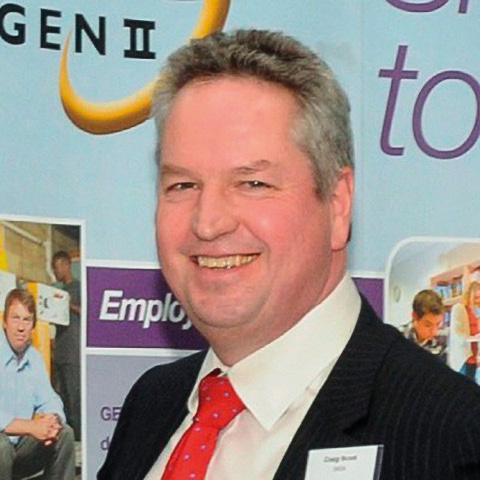
This system brings the whole answer into one place.”
Monica Hub allows the reliable retrieval of CCTV footage from onboard systems direct to the requesting user without the user having to connect directly to the onboard systems. A live view from the vehicle can also be requested to allow operators direct access to the onboard camera system.
Further integration with the connected onboard systems provides system users with further search filters based on events generated by the train. Vehicles’ passenger count systems alert the CCTV system when loading is high. The detection of the use of the passenger alarm events can be used to trigger the automatic upload of evidence from train to wayside.
It is also useful in accurately counting and recognising the number of passengers boarding and alighting the train at each station and passenger movement between carriages.
Craig said: “The team has worked hard in establishing the Monica Hub software methodology and the success with Northern has proven that it works so we’re now in a position to cross-sell that and take it to other customers and potentially to other markets.”
The success further cements ADComms’ position as an expert in delivering innovative technology solutions and services to owners and operators of the UK rail network, something that drew Craig to the business in February last year.
He said: “We’ve got a business in ADComms in which there are three things we do – one is conventional telecommunications on the railway, one is about aggregating data and presenting that data to operators to take decisions in real time, so that kind of passenger counting, video feeds and so on that we do on track train communication, and the third leg is in distribution, which is about selling on hardware.”
Craig is Chief Executive Officer of both ADComms
and Gemini Rail Services, the latter a specialist provider of innovative rolling stock upgrades, maintenance and incident repairs for the UK rail market. When he joined both organisations had been brought together as one entity, something Craig changed on his arrival.
“I wanted the two businesses to stand on their own two feet and then to focus on their own areas of the market,” he said. “This is already starting to pay dividends with each separately and individually focused and each of them in a very good position to continue to grow.
“Looking specifically at ADComms and as well as the huge success of the work we have done for Northern, there are also a couple of ongoing projects that we are doing, including the delivery of the One Person Operation CCTV systems for the introduction of new rolling stock as part of the Deep Tube Upgrade Programme for Transport for London. The work we are doing provides a superb foundation for the business for the next couple of years.”
Reflecting on the journey so far, ADComms Group developed its service offering in the rail communications market through the purchase of EXi Telecoms in 2003 (previously Ericsson services UK). With this purchase, the business brought on board telecommunications, design, installation and commissioning engineering capability that has been retained in the business to the present day. ADComms was formed following the purchase of the ADComms Rail Business from the ADComms Group in December 2011. In May 2021, ADComms became part of the Mutares family.
“The business has developed a lot from being out there putting cables in the ground to now looking at AI and bringing that to fruition within the touchable future,” said Craig. “It has a history of working in the railways and has been ambitious in driving forward change and developing new ideas. We’ve got loads of ideas and loads of innovation that we can bring to market, we just need customers to work with us to implement them in the railway.”
And it is this point that Craig is keen to emphasise, with the work with Northern a case example of the benefits bringing ADComms on board earlier can have.
“Transactional, short-term ‘can you solve this problem that we’ve identified here and now’, that is one way of doing business and that is the business that we’re in,” he said. “But if we work together as we have with Northern, as the customer identifies other issues and problems they want to solve, we are there with them and we’re addressing them again in real time. It can only be a good thing for all involved.
www.adcomms.ltd/
ADVERTORIAL 52 June 2024
M



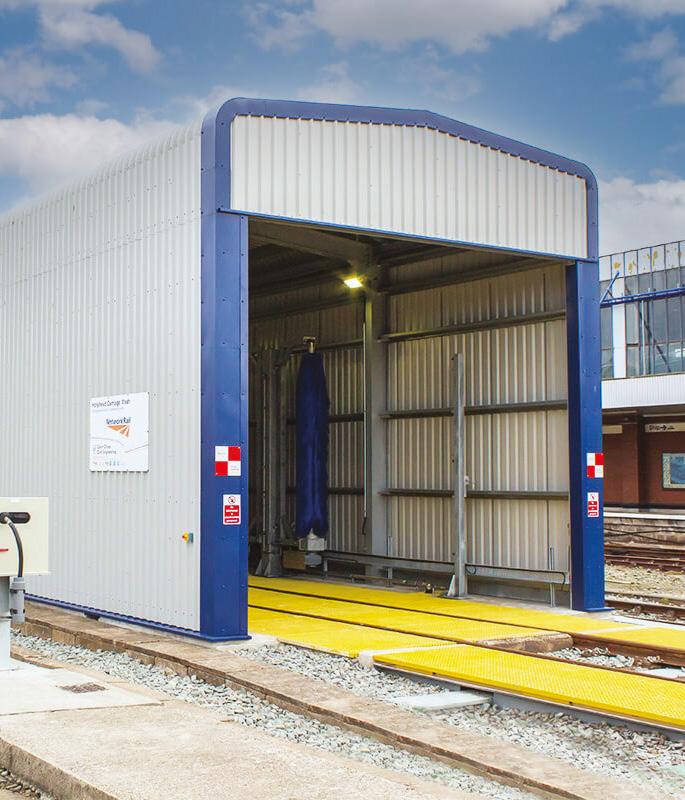























Capabilities & Experience Get in touch 0113 284 2415 Cairn Cross, 1 Cadman Court, Morley, Leeds, LS27 0RX www.cairncross.uk.com Info:
Careers:
Plus much more Carriage Washes Design & Build Drainage Electrical Connection Foundations GRP Walkways Signalling Superstructures TrackPan Solution Scan the QR Code to learn more We are a design and build specialist main contractor for rail depots and bespoke projects Capabilities & Experience Get in touch 0113 284 2415 Cairn Cross, 1 Cadman Court, Morley, Leeds, LS27 0RX www.cairncross.uk.com Info:
Careers:
Plus much more Carriage Washes Design & Build Drainage Electrical Connection Foundations GRP Walkways Signalling Superstructures TrackPan Solution QR Code to learn more We are a design and build specialist main contractor for rail depots and bespoke projects Capabilities & Experience Get in touch 0113 284 2415 Cairn Cross, 1 Cadman Court, Morley, Leeds, LS27 0RX www.cairncross.uk.com Info:
Careers:
Plus much more Carriage Washes Design & Build Drainage Electrical Connection Foundations GRP Walkways Signalling Superstructures TrackPan Solution Scan the QR Code to learn more We are a design and build specialist main contractor for rail depots and bespoke projects Capabilities & Experience Get in touch 0113 284 2415 Cairn Cross, 1 Cadman Court, Morley, Leeds, LS27 0RX www.cairncross.uk.com Info:
Careers: careers@cairncross.uk.com Plus much more Carriage Washes Design & Build Drainage Electrical Connection Foundations GRP Walkways Signalling Superstructures TrackPan Solution Scan the QR Code to learn more Washing Facilities We are a design and build specialist main contractor for rail depots and bespoke projects Capabilities & Experience Get in touch 0113 284 2415 Cairn Cross, 1 Cadman Court, Morley, Leeds, LS27 0RX www.cairncross.uk.com Info:
Careers:
Plus much more Carriage Washes Design & Build Drainage Electrical Connection Foundations GRP Walkways Signalling Superstructures TrackPan Solution Scan the QR Code to learn more Washing Facilities We are a design and build specialist main contractor for rail depots and bespoke projects
info@cairncross.uk.com
careers@cairncross.uk.com
info@cairncross.uk.com
careers@cairncross.uk.com
info@cairncross.uk.com
careers@cairncross.uk.com
info@cairncross.uk.com
info@cairncross.uk.com
careers@cairncross.uk.com
Dennis Roycroft, owner of DBR & Associates Limited (DBR), explains more about its lift monitoring technology with data analytics, which can predict failures
Taking lift reliability to a new level

The importance of working lifts at railway stations is crucial in ensuring the network is accessible for disabled passengers and those with limited mobility, and others with heavy luggage or pushchairs.
A report released by the Office of Rail and Road earlier this year found that of the 1,331 passenger lifts managed by Network Rail at 491 stations, in the year from October 2022 there were over 8,600 faults, with each fault taking an average of over 20 hours to repair. In the same year, passengers got trapped in a lift 601 times.
The vast majority of these lift faults could have been avoided by early maintenance intervention, as prior to any lift going out of service, a sequence of events would have occurred in the preceding days and weeks, such as variations to lock and door movements, changes to travel times between floors, and safety circuit issues. Although these changes in infrastructure are minimal and often not obvious or visible, the impacts can be substantial.
Innovative remote asset monitoring company DBR is confident it can bring these figures down with its solution, which leverages advanced technology to help organisations optimise the performance and reliability of their lifts, by early detection of faults before a lift breaks down.
“We have developed a unique lift monitoring
technology, with data analytics that can predict lift failures,” explained Dennis Roycroft, owner of the company. “Using an innovative monitoring approach that can be retrofitted to existing lifts, that is more efficient, less disruptive, and allows for a faster maintenance response.”
Constant monitoring of a lift in real-time allows DBR to define individual lift running signatures. Minor variations are detected in the normal running signature, and alerts and alarms are raised requesting containment/corrective action before the lift fails. All monitoring data is available on any web device, allowing asset service partners visibility of any defects prior to attending the site.
“Whilst our system has benefits that increase availability and reduce maintenance costs, another significant benefit is that it provides a more reliable lift service for passengers where a lift service is essential,” said Dennis, who explained how the idea developed during its research and development work with KeolisAmey, working on a number of lifts on Docklands Light Railway.
This developed further when DBR received a grant as part of the Department for Transport’s (DfT) 2022 Transport Research and Innovation Grants programme, which supported innovative ideas or concepts that facilitate a better transport system.
“The grant from the DfT has allowed us to move
this technology forward and it is now in operation at several test sites measuring floor position, life cycles, total travel times, landing/door lock dwell times, door open/closing times, safety inputs and outputs and potential entrapments,” added Dennis.
“At those sites every time the lift does something we are measuring that interval in time five times a second, which is allowing us to pick up on any changes and identify any problems before they become serious.
“We provide three monitoring levels: green means everything is ok, amber means something needs attention but not immediately, and red means the lift has stopped. The alarms go automatically to the service partner and lift owner, with the details available to view on any web-enabled device. With access to our monitoring system, a technician fixing the problem can confirm the problem has been fixed.
“This is just the start and where we’d like to get to is an AI platform in which we’ve got enough data to be even more specific on when exactly the lift will break down if nothing is done. Overall, our driver is ensuring lifts are reliable and playing our part to make sure railway stations are accessible to all.”
0203 984 7373
mail@dbr.co.uk www.dbr.co.uk/
ADVERTORIAL 54 June 2024
Image: DBR

AC MOTOR SERVICES
■ Standard Overhaul /Maintenance
■ Full Stator Rewind
■ New Rotor Manufacture
■ New Shaft Manufacture


For more information or to arrange a visit, call us on +353 1 4520033
Associated Rewinds are the leading European company for the Maintenance, Repair and Rewinding of AC & DC Traction Motors for all types of Trains, Trams, and Metro systems.

The Rail Safe Friendly programme has been backed by nearly 6,000 UK schools and 90 industry partners from across the sector in little over a year. Its Managing Director Stuart Heaton reflects on its success
Spreading the message of rail safety

“This is just the beginning.” That is the message from Stuart Heaton, Managing Director of Rail Safe Friendly, reflecting on the first year of the programme which, through schools, teaches young people about the dangers of trespassing on the UK’s railways and is preventing injuries and saving lives.
In just over a year, nearly 6,000 UK schools have come onboard and 90 industry partners from across the rail sector have sponsored and become partners in it. Overall, over 2.5 million students and teachers have watched the organisation’s rail safety broadcasts since March 2023.
Stuart added: “We are very proud of all that has been achieved since March 2023. The rail industry has really embraced the importance of Rail Safe Friendly. I am grateful to them for their support and also to all the schools who have worked with us to ensure young people gain vital rail safety awareness.
“Over the coming years, we will build Rail Safe Friendly even further with our aim of ensuring every school provides rail safety education to keep young people safe by ensuring they know of the dangers of trespassing on or near the railway environment.”
His passion is driven by the tragic story of Harrison Ballantyne. Harrison’s mother Liz, who is a keen supporter of Rail Safe Friendly, found out in the worst
way possible about the dangers of the railway.
Harrison was 11 years old when he strayed into a rail freight depot to retrieve a lost football. He climbed onto a stationary freight wagon to get his ball back and, although he didn’t touch the overhead power cables, he died when he received a fatal electric shock.
She said: “It’s imperative that every single child has the knowledge to keep themselves safe. Safety around the railways needs to be seen as important as road, water, and online safety.
“I always encouraged Harrison to go out and have adventures, I taught him about stranger danger and to be careful around water, but I just hadn’t realised
SAFETY 56 June 2024
Images: Rail Safe Friendly

that I needed to teach him about rail safety. I learnt of its importance too late, but I don’t want others to suffer as I have.”
Rail Safe Friendly is run by Learn Live, which runs innovative, interactive, moderated online news channels that bring a world of opportunity and experiences directly into the classroom, home, or business. Each interactive Learn Live broadcast can be attended by an unlimited number of schools/ colleges, job seekers, or businesses, simply by logging into the channel online.
Learn Live delivers Network Rail’s video safety content about the dangers of trespassing on railways directly to schools. Since it was launched in 2019 it has reached over 21 million young people in over 12,500 schools across the UK in partnership with the Trespass Improvement Team at Network Rail.
The Rail Safe Friendly broadcasts are delivered through live or on-demand content digitally into classrooms and assembly halls via the Learn Live channel. The channel also has a moderated, GDPRcompliant live chat facility to promote interaction and involvement from the schools and colleges taking part in Rail Safe Friendly.
Stuart added: “It is crucial that children receive vital knowledge, at a young age, to keep them rail safe. The Rail Safe Friendly programme seeks to educate children and young people on the many dangers that are present on the railway.”
Among those to partner with the programme is the Office of Rail and Road (ORR).
Patrick Talbot, ORR’s HM Principal Inspector of Railways, said: “Educational programmes such as Rail Safe Friendly play an important role in ensuring that children and young people have the knowledge and skills to know how to keep themselves away from danger.
“Ensuring the safety of Britain’s railways is at the heart of what we do at the ORR. Our inspectors are out on the network every day, ensuring that railway companies continue to make Britain’s railways safe for passengers, workers, and the public.
“Trespass remains a significant risk on the railway, and the law requires companies to take reasonable steps to prevent people from getting access. However, it is also important to ensure that people are informed about the risks, so they are equipped to act responsibly around the railway.
“I have seen first-hand the devastating impact that Harrison’s death had on his family and friends.”
The programme seeks to educate children and young people on the many dangers that are present on the railway. For example, nearly half of the UK rail network is electrified and more than 30 per cent uses a third rail to power the train. The third rail has 750 volts running through it, which is enough to kill or seriously injure someone if they stepped on it.
Overhead cables that power trains carry 25,000 volts, more than 100 times the power of electricity in the average home. Electricity from overhead lines can also jump or arc through the air, meaning someone does not have to be touching the line to be electrocuted and killed.
Earlier this year freight operating companies DB Cargo UK and Freightliner joined Rail Safe Friendly as Gold partners, presented with gold discs in honour of their support.
Andrea Rossi, CEO of DB Cargo UK, said: “We are proud to be gold partners of Rail Safe Friendly and to support the programme’s aims of delivering critical rail safety messages to as many young people as possible. The railway is a dangerous place, and it is crucial that children understand the risks and that they should never trespass on or near to rail lines, or in depots and yards.”
Louise Ward, Safety & Sustainability Director at Freightliner, said: “We are committed to working with Rail Safe Friendly and across the industry to promote this important safety education. I have no doubt that reaching children directly in schools through this programme will give them lifelong knowledge about the dangers of the railway, and that it will save lives.”
Visit www.railsafefriendly.com for more details.
We will build Rail Safe Friendly even further with our aim of ensuring every school provides rail safety education to keep young people safe
There are three levels to the Rail Safe Friendly programme for schools to achieve:
Bronze level
A school will ensure that all pupils and teachers have watched the rail safety broadcast either live or on demand via the Learn Live channel. Schools will need to register to confirm their attendance and provide feedback after the broadcast has been viewed by the students. Schools will also need to sign up to the Switched On Rail Safety website to receive rail safety updates from Network Rail.
Silver level
To achieve the Silver level, a school will need to have completed the Bronze level and communicated to parents and carers the details of the rail safety broadcast. This can be done via newsletters, parent assemblies, school websites, social media channels, or other forms of communication used by a school. The school will also be asked to promote the Switched On Rail Safety website on its social media channels.
Gold level
To achieve the Gold level, a school will need to have completed the Bronze and Silver levels and create a rail safety video, podcast, or poster with their students to promote in their school and social media channels using a brief provided by Learn Live.
SAFETY 57 June 2024
Rail Safety Week (RSW) Lead Elaine Clark and Steering Group Chair Simon Higgens MBE explain more about this year’s campaign
Driving safety together


et involved, do something”. That is the message to the industry from Elaine Clark ahead of this month’s RSW which takes place June 24-30. “It doesn’t have to be complicated or expensive, for example you could align some of what you are planning anyway to take place during that week and really shout about it,” added RSW’s Lead.
Established in 2016, RSW is an industry-led initiative focused on rail safety for all – people who work on the railway, customers who use the railway, and those who can be affected by operations.
Simon Higgens MBE, Steering Group Chair, said: “The industry is involved in safety 365 days a year (well 366 days this year), so we are not asking them to do anything above and beyond what they are already doing.

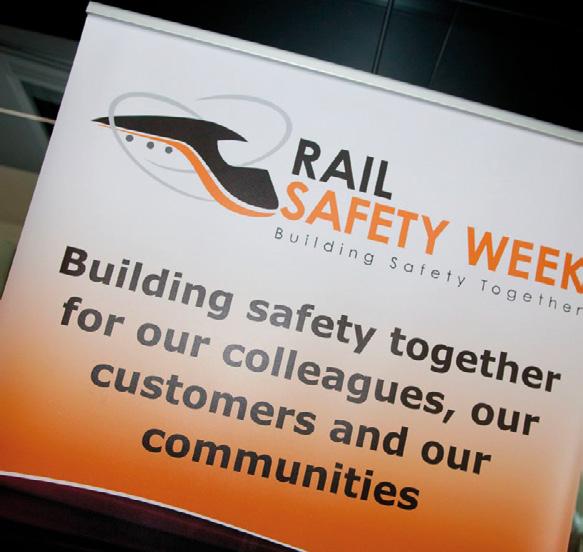


“What we are asking them to do, however, is tell us what they are doing during that one specific week so that we can tell others about it. We can all achieve more by talking to each other and working together and RSW gives us that platform to do so.”
Working with leading names across the industry through a variety of conferences, site briefings, and school safety-based events, RSW aims to bring rail safety to the forefront of people’s minds across a dedicated week of events and action.
“RSW is a hugely powerful campaign that refocuses our attention and raises the profile of what we all do across the industry,” added Simon, who is Business Development Director of Story Contracting. “More importantly, it brings us all together as a community and we can learn from others, share best practice and improve what we do to ensure that
everyone goes home safe every day.
“The Steering Group wants to have an impact upon everyone involved with the railways; workers, passengers, school children and those who live near or who cross the railway all should be the focus of our attention. Safety affects everybody and that is our key message.”
Rail is one of the safest forms of public land transport and the UK has one of the best safety records of any major railway in the world. Statistics from the Department for Transport have found the risk of potentially high-risk train accidents has decreased by 70 per cent over the past 20 years.
Level crossing and trespass-related fatalities also fell by nine per cent from the previous year and the UK’s rail passenger and workforce fatality rate is also below the European average; all of which has
“G
SAFETY 58 June 2024
2023 Rail Safety Week Conference
















been achieved thanks to the hard work of those working in the industry and ensuring the industry doesn’t get complacent.
“Health and safety is relevant and important to everyone – whether they work on the railway, whether they are a passenger or just happen to live near a railway line,” said Elaine, who is Chief Executive Officer of the Rail Forum. “Having worked in safety critical industries all my life and seen what can happen when it goes wrong, it’s important that we never take our eye off the ball, continuously look to improve, and learn from each other.
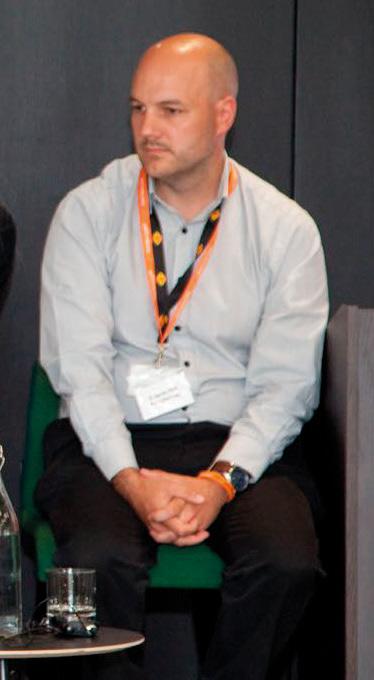
to all and free to attend and are running two children’s competitions.
Elaine said: “This year is very much about cementing the week into the calendar to remind everyone that it isn’t a one off – it’s an annual campaign. It’s also about getting the message across that it’s not a single event that we organise, it’s a whole seven days for organisations to choose what they want to do to showcase health and safety, in the widest sense, in and beyond their organisations.
“It’s very much up to individual companies and organisations to decide what they want to do and then share that with us by submitting their plans onto the RSW website. We can help by providing some ideas and resources but it’s not for us to tell companies what to do. That said, we are holding a one-day launch conference which covers a range of topics from workplace health and safety to the work of community rail partnerships.
“Next year is the 200th anniversary of the railway so it would be great to see at least 200 organisations get involved. Ultimately, it’s about reducing accidents and incidents and highlighting the dangers of trespassing on the railway – if we can reduce that year on year that would be something to celebrate.”
RSW is a hugely powerful campaign that refocuses our attention and raises the profile of what we all do across the industry
“Safety is a 24/7 365 day a year priority but having a dedicated week where we can shine the spotlight on what people are doing was something I thought we should build on for everyone’s benefit.”
Rail Forum adopted RSW last year, vowing to drive forward the event, which was set up by Alan Tarrant.
Elaine added: “There are several dedicated weeks across the calendar for numerous important topics e.g. National Apprenticeship Week. Rail Safety Week was originally established to provide a similar focus for all things safety-related across the railway. Now we are custodians of this important initiative I see it as our responsibility to nurture and grow it and to encourage as many organisations as we can to get involved.”
This year, businesses are being urged to plan their own activities, and in doing so play their part in ensuring the railways are safe for all.
RSW has also organised a conference that is open
Simon added: “For me, there is no one specific thing that I am looking forward to. Everybody’s contribution, large or small, is key to ensuring that the industry and those who live near or use it remain safe. We can do more together as a community than by acting separately, so we all have a vital part to play in that process.
“I think that it is incumbent upon all of us to do as much as we can to promote safety on and around the railway and if the outcome of RSW is one fewer casualty or one fewer accident then it is all worth it.”
Praising the event and urging rail organisations to get involved, David Clarke, Railway Industry Association Technical Director said: “The UK railway has a proud track record on safety over recent years and innovations from suppliers have contributed significantly to achieving this high standard. However, we do not rest in striving for improvements to rail safety and Rail Safety Week is an important reminder of the need to share best practice across the industry in pursuit of a safer railway for all.”
Visit www.railsafetyweek.org/ for more details.
SAFETY 60 June 2024
2023 Rail Safety Week Conference
TRANSFORMING SAFETY IN CRITICAL INFRASTRUCTURE
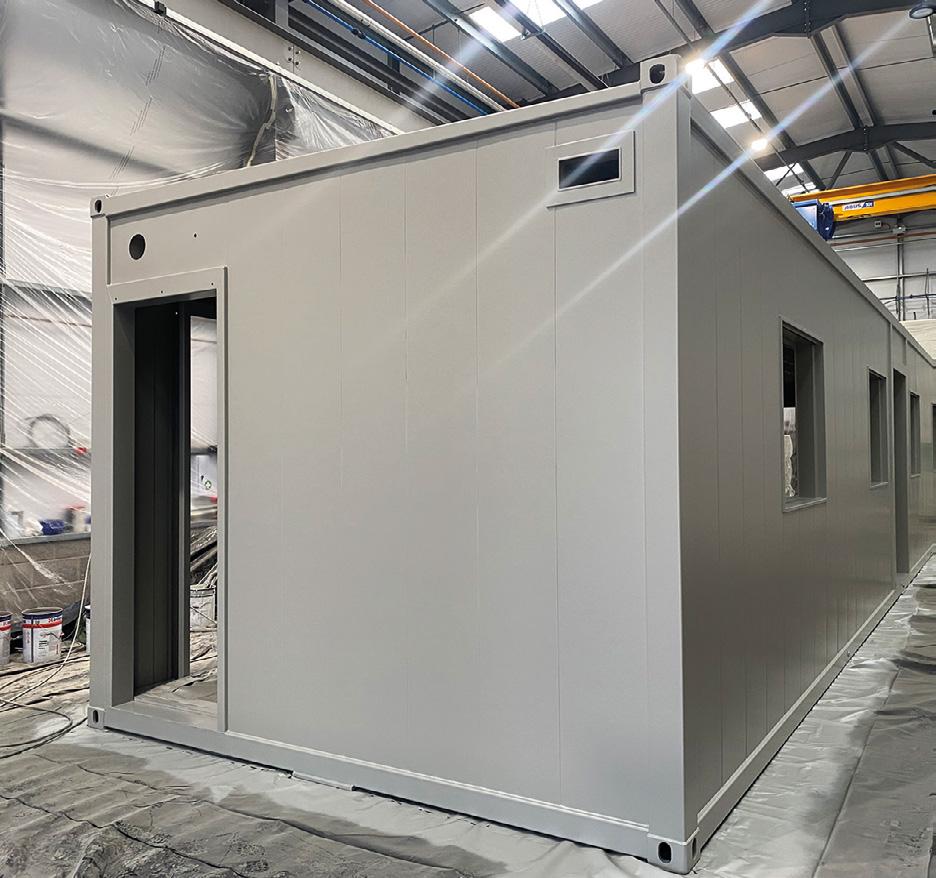
Mavin Powercube design, build, deploy and maintain awardwinning, scalable, and secure Containerised Critical Infrastructure Solutions for Rail. Collaboratively designed with technology partners of your choice, and a concise build programme including a full FAT at our state-of-the-art UK manufacturing facilities, the Powercube range of REB solutions leverage the huge benefits of *OSM.This includes minimising on-site and surrounding site disruption, by significantly reducing the number of construction vehicles, personnel and time required on-site, substantially reducing the risk of accidents, and overall ensuring a safer working environment.We not only enhance safety but also deliver cost-effective and eco-friendly solutions. Safety, efficiency, and sustainability are at the forefront of our operations.
Our
‘OSM’ advantage simplifies and speeds up the build process, reducing H&S risk T: 0845 612 1155 . E: contact@mavin.global . www.mavin.global *Metric Data obtained/calculated from TfL, Gov.uk and Accelar with thanks. Related to recent Powercube/TfL project. *OSM: Off-Site Manufacturing 8 13 126 5719 kg CO2 eq. 2 550,000 8936 kg CO2 eq. 5 1,400,000 90,073 kg CO2 eq. 36 1,400,000 Carbon Emissions (kg CO2 eq.) Construction Vehicle Site Visits On-site Build Time (Weeks) SER Solution Cost (£) POWERCUBE SER SOLUTION OTHER MODULAR SOLUTION TRADITIONAL BRICKS AND MORTAR SOLUTION VEHICLE SITE VISITS COMPARISON 51% TIME SAVING = REDUCED TIME ON-SITE Get in touch with our team for further information, and visit www.mavin.global * PowercubeSecureStaging Module in-build for GCRE*
Mavin Powercube

Portaramp has long been established as the go-to specialist for access ramps. General Manager Jack Beecroft explains how that isn’t all the company offers the rail industry
Ramping up the safety of rail workers
Portaramp is renowned in the UK rail industry for its specialist bespoke ramps, ensuring all passengers can get on and off a train carriage safely. However, this is just one of many safety solutions the company has to offer, something its Rail Safety Specialist Jack Beecroft is keen to highlight.
“We are recognised throughout the UK and Europe as a market leader for access ramp solutions in the rail industry, but we are also a one-stop shop for many other rail safety needs,” he said. “Everything we offer the industry meets rail industry standards and are products that we know will ensure workers and customers are safer.”
PitProtect Ontrack
Among the solutions is a compact fall prevention platform, featuring Portaramp’s PitProtect and Ontrack frame, crafted to rest on the rails, enabling trains to pass directly overhead.
It offers a lightweight, aluminium, concertinastyle inspection cover, engineered for durability, adaptability, and swift deployment. The cover providing a robust solution for securing open pits in maintenance depots, reducing fall risks while allowing easy access to the train’s undercarriage for maintenance.
“The PitProtect Ontrack eliminates the potential
fall risk when the pit is vacant, and its design enables access to the train’s underside for inspections and repairs while ensuring safety,” explained Jack, who said the company has supplied and installed several to great reviews. “It comes as two-metre sections that are designed to fit the width of a particular pit.
“The user can retract one part of it where they need to work and close it back up when the work is done and when the train has gone back out again. It gets rid of the risk of a potential several feet drop into the pit. The PitProtect is ideal for any user looking for practical solutions that improve safety with minimal fuss.”
Kee Klamp
The Kee Klamp handrail is widely used throughout the world as a premium method of preventing falls and as a way of separating people and hazards in the rail sector. It is in use in stations, depots, and trackside.
The principle is simple yet highly effective, proven over nine decades and thousands of completed projects across the globe. The Kee Klamp offering enables users to utilise a secure method of connecting standard sizes of structural steel tubes into virtually any desired configuration, with one of the most extensive ranges of galvanized pipe handrail fittings currently available in the market.
Jack said: “The handrails can be installed

anywhere and there is no welding involved, everything is held together by grub screws so it can be easily amended onsite.
“It can be used as that physical barrier to stop people going onto the tracks or into an area where there are hazards that are present, ensuring the safety of people around the railways. These are just two of the products which define what the company is all about, separating people from hazards.”
Driven to ensure the railways are safer
The future looks bright for Portaramp. As well as PitProtect and Kee Klamp, the company’s lightweight, portable access ramps continue to go from strength to strength. Already in regular use by the majority of train builders and operators in the UK, they are becoming more popular in Europe and beyond.
Jack, whose previous experience spans from the design of bespoke working at height solutions to asset management and artificial intelligence, said: “All our products are designed and manufactured by trained specialists to be lightweight while remaining durable, even when in daily use, and of course meeting industry standards.
“The future looks positive for the company, driven by a passion to ensure that people around the railway are as safe as they can be.”
www.portaramp.co.uk
We are recognised throughout the UK and Europe as a market leader for access ramp solutions in the rail industry, but we are also a one-stop shop for many other rail safety needs
ADVERTORIAL 62 June 2024

6-7 November Leonardo Royal Hotel London Tower Bridge
A fresh start for UK Rail?
2-day conference with inspiring keynotes including:
– Andrew Haines, Chief Executive, Network Rail
– Sir John Armitt CBE FREng FICE, Chair, National Infrastructure Commission
– Sir Jon Thompson, Executive Chair, HS2
– And many more…
Large interactive exhibition area with spotlight pitches presenting services, products and solutions
Evening programme including networking drinks, dinner and entertainment



Scan the QR code to register today Or visit riagb.org.uk/AC24
RIA Annual Conference 2024
Can your surveyors survey 3km of track, trackside detail and the overhead line equipment to Band 1 accuracy in an hour? Alan Barrow explains that ABA Surveying Ltd can
High precision surveying services
n my last article in January, I wrote about 3D scanning and the resulting point cloud having become the field book of the topographic and structural surveyor. In this article, I shall cover the techniques that ABA have developed that make the heading statement a reality.
A brief recap for those who missed my last article. A survey grade 3D scanner has a laser that rotates in a vertical plane and every time the laser hits an object its beam is reflected back to the instrument which then records the 3D position in space of that point. A static scanner, one that is set up on a tripod, will also rotate horizontally, very slowly, so that by the time it has turned through 180 degrees it will have recorded the whole 360-degree panorama.
Our current scanners will record the point cloud at two million points per second, with each point being accurately positioned to better than two millimetres (mm) up to 100 metres away from the scanner. Depending on the purpose of the survey, the surveyor will set the resolution (the distance between the points) for the scan data as a compromise between the level of detail to be recorded and the
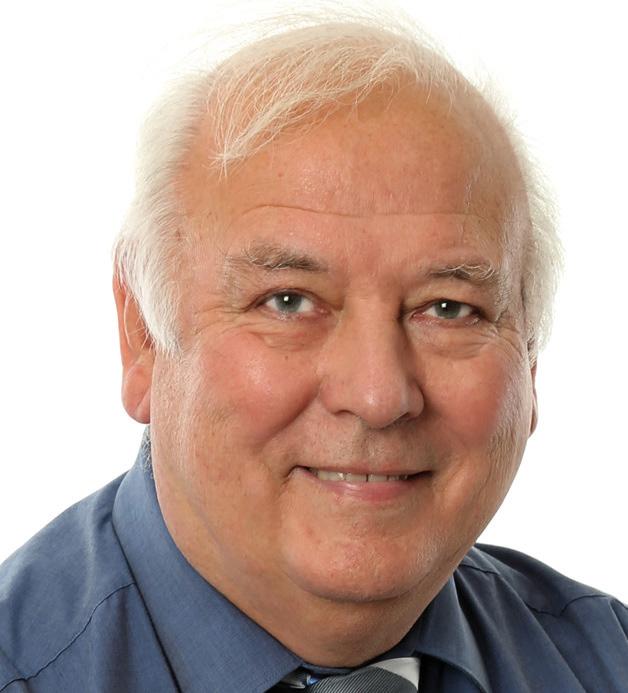
time to complete the scan. For general topographic surveying, our settings would typically be a resolution of 3mm spacing at 10 metres, equating to 6mm spacing at 20 metres etc up to 30mm spacing at 100 metres.
The further away from the scanner the greater

the distance between the points, and the detail then becomes less easy to define. Of course, the distance between the points (the resolution) only holds good when the scanner is square onto the object. For a static scanner looking along the line of an object, such as a rail or a contact wire, apart from the problem of the laser beam being reflected like a mirror into space, rather than back to the scanner, the spacing of the points becomes much sparser due to the shallow angle when the laser hits the object.
We started scanning in 2002 and mobile scanning with multiple scanners in 2009.
We have now made our latest twin scanner mobile rig so portable that it can be, and is being, used very successfully on road and now rail with the rig mounted on a track trolley and the scanners working in profiler mode. Pushed at 3km per hour (one metre per second = walking pace), 267 profiles and four million points are recorded every second by the two scanners. This speed of data capture results in a profile every 2mm on average, and an accuracy even better than static scanning because all detail is captured square on and is in the two-10 metre range where the accuracy is better than 1mm.
System Technical highlights:
2x Z&F 9020c scanners
534 profiles/sec.
Accuracy 0.2mm up to 25 metres
360° field of view
i7 computer, 16gb RAM
Landins & KVH IMUs
8 integrated HDR 5mp cameras
4 million points/sec.
182 m range
Internet connected
500gb SSD
2x optical odometers
Twenty-four-hour capability, works as well at night as in daylight.
With the above technology, ABA’s ability to record the railway infrastructure at 3kph and to a resolution and accuracy never seen before, means that the project now has an additional safety dividend - less track access time needed and less boots needed on the ballast.
That’s how ABA has made the opening statement a reality by continually moving railway surveying along.
I
01483 797111 Alan@ABAsurveying.co.uk www.ABAsurveying.co.uk ADVERTORIAL 64 June 2024


 Laura Hedley, Senior Occupational Psychologist at the OPC, discusses why
Laura Hedley, Senior Occupational Psychologist at the OPC, discusses why
some employees struggle with the basics of safety
Back to the basics of safety
n some organisations, safety performance can vary over time, characterised by periods of high accident frequency that prompt safety training and/or a new initiative – resulting in improved focus and reduced incidents. However, while these efforts can temporarily reduce incidents, they often fail to sustain long-term improvement, leading to cycles of fluctuating safety performance.
Laura Hedley, Senior Occupational Psychologist at the OPC, said: “In our experience, while equipment or insufficient training can contribute to poor safety performance, human factors are often the primary cause. Even though most employees adhere to safety protocols, everyone makes mistakes. In many cases, incidents occur simply because we just don’t get the basics right.
“When we talk about the basics, these can include ensuring the availability and proper condition of PPE; thorough equipment checks and maintenance; conducting safety briefings before any work; strict adherence to industry regulations; and prioritising safety over operational or commercial pressures.
“The Non-Technical Skills (NTS) of vigilance and conscientiousness also play a crucial role in the basics of safety, e.g., tools left on site or untidiness could lead to an incident. Risk and situational awareness are also vital in identifying and mitigating potential hazards.”
So, what prevents us from mastering the basics of safety?
Through research and having undertaken hundreds of Post-Incident Assessments (PIA), OPC psychologists have found several recurring themes:
Effort vs. payback. There is a temptation to ‘skip the basics’, preferring convenience over compliance.
Balancing the job vs. the basics. Prioritising task completion rather than ‘wasting time’ on the safety fundamentals.
Over-reliance on personal experience. In the absence of an incident or ‘near-miss’, we might believe there’s no need to focus on the safety basics.
Why bother! A lack of positive action on safety requests or hazard issues can lead to futility and

apathy, causing employees to stop reporting.
A false sense of security. Failing to recognise risks can create a false sense of security, even if they still exist. Overconfidence can hinder sticking to the basics.
Not my responsibility! This pervasive attitude can mean a culture of disengagement and neglect, ultimately leading to a failure to get the safety basics right.
Laura said: “Addressing these challenges involves recognising human fallibility and encouraging a culture where safety is everyone’s responsibility. It’s also crucial that employees feel empowered to voice concerns and report unsafe behaviours, regardless of their role or seniority. However, reporting an issue about an asset is a lot easier than challenging unsafe behaviour. People can find this very difficult.”
The OPC identified some key factors why people find challenging others hard, such as:
Fear of reprisal, rejection or ridicule.
Having the self-confidence to challenge or confidence in their own safety knowledge.
Social dynamics, e.g., ‘people pleasing’ or not wanting to ‘rat on their mates’.
An organisational culture that may prioritise productivity over safety.
Doing things differently
To overcome these barriers, it’s important we build a supportive environment where employees can freely discuss safety issues without fear or negative consequences. It’s also important to remember that colleagues are part of the ‘railway family’. In a recent survey of over 600 workers, many of whom worked closely together, over 90 per cent said they’d prefer to have their safety mistakes pointed out.
“Making the workplace safe isn’t just down to one person—it’s about all of us looking out for each other. We need to be willing to speak up and hold each other accountable, even if it means a difficult, uncomfortable conversation.” [A Maintenance Delivery Manager]
How can the OPC help?
The OPC offers various training initiatives to help improve safety performance, including Non-Technical Skills training, a Back-to-Basics workshop, and an Accelerate Your Safety Leadership (AYSL) workshop. This programme helps safety leaders examine their operational behaviours from a legal perspective, and explore safety culture and leadership to enhance personal and organisational safety-critical responsibilities.
Contact the friendly OPC team if you think your employees need some support getting back to the basics of safety.
admin@theopc.co.uk
+44 (0)1923 234646
www.theopc.co.uk
I ADVERTORIAL 66 June 2024
Image: iStock
Jones Nuttall
PRECISION ENGINEERING
PRECISION ENGINEERING
NEWDRILLING METHOD

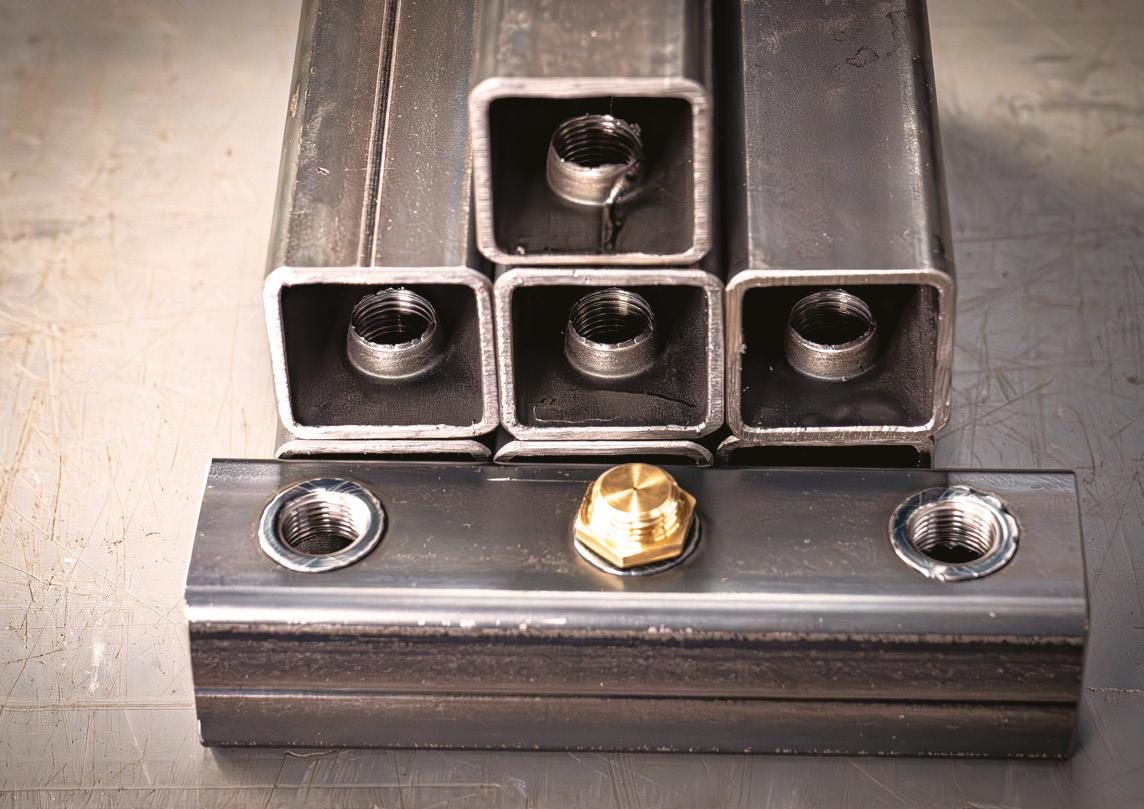
FRICTION DRILLING & TAPPING SCAN QR CODE TO WATCH SORT VIDEO
Jones Nuttall Ltd, a precision engineering company based in Warrington, Cheshire, takes pride in its state-of-the-art CNC machining facilities. For over 50 years, we have delivered precision and efficiency in every project we undertake.
Our specialised Rail division boasts contracts with industry leaders such as Alstom, Unipart Rail, Metrolink, London Underground, and Network Rail. Our experienced engineers handle a diverse range of projects, including new builds, repairs, refurbishments, and modifications, including reverse engineering.
We manufacture components using a variety of materials, including ferrous and non-ferrous metals, exotic materials, advanced plastics, laminates, and composites. Our continually evolving manufacturing processes ensure that your products meet the highest standards, making us a trusted partner in demanding sectors such as oil, gas, energy, nuclear, and rail.
For precision finishing, we offer quality surface treatments, coatings, and other finishing services. These optional treatments enhance material strength, improve durability, and provide a long-lasting, high-quality finish.
With a comprehensive suite of services, our extensive experience has shaped our capabilities to meet our clients’ needs. Managing all aspects in-house provides valuable transparency, ensuring seamless project management from start to final delivery.

TRACK BRAKE BEFORE
TRACK BRAKE AFTER

DEDICATED R AIL DIVISION



SURF REATMENTS TING MILLING & TURNING FABRICATING


WELDING S CRITICAL COMP TS ANODISING EMANAGEM




WWW.JONESNUTTALL.COM TEL:01925 628630 SALES@JONESNUTTALL.CO.UK
Sneha Redla, Managing Director of Aarvee Associates, discusses her
career and the company’s expansion into the UK
Going the extra mile to meet the highest of expectations
Sneha Redla, the Managing Director of Aarvee’s UK division, had a childhood steeped in the world of civil engineering. “Aarvee was started by my father R.V Chakrapani,” she reminisces, “and I remember accompanying him to project sites and playing in the sand outside, learning how to take blueprints when I was just seven years old.”
Her journey into civil engineering began with a different dream - to become a doctor. It was her mother who opened her eyes to the impactful work of civil engineers. “People wouldn’t reach hospitals in time if the roads weren’t excellent,” her mother pointed out, igniting Sneha’s passion for infrastructure and its profound impact on communities. Sneha’s love for civil engineering deepened with her fascination for complex bridges, marveling at how composite materials are capable of carrying higher stresses. With a Bachelor’s Degree in Civil Engineering and a Master’s Degree in Structural Engineering, Sneha jokingly introduces herself as a structural engineer by education only.
Today, as the leader of Aarvee’s UK operations, Sneha’s passion for the industry is unwavering. She is relentless in her pursuit of integrating technology from diverse fields to enhance efficiency and address challenges such as sustainability and climate resilience. As a woman in a predominantly maledominated field, Sneha brings a unique approach to leadership. She believes in mentoring and supporting her team to discover their strengths and passions. “I want my team to find the same joy in what they do that I do,” she emphasised, encouraging them to pursue their passion projects.
Sneha’s leadership style is rooted in Aarvee’s core values of technical excellence, exceptional quality, innovation, commitment to timelines, and unwavering integrity. She instills in her team a sense of pride in their work. “I always tell my people that they should take pride in their designs, they should be as proud about signing off on their drawings as if it was Michelangelo signing off on a painting and they should never send out anything that is less than perfect,” she explained.
With most infrastructure projects publicly funded, Sneha stresses the importance of ensuring overall economy without compromising quality. “Our responsibility is to the people and the environment,” she asserted, emphasising the need for solutions

We are driven by the passion to add value to projects and find solutions to the challenges coming up
that are fit-for-purpose and cost-effective, while also being resilient to climate change impacts. Driven by her profound passion for the environment and sustainability, Sneha spearheads task groups within Aarvee dedicated to identifying cost-effective strategies for enhancing infrastructure resilience in the face of climate change effects.
Part of Sneha’s role involves overseeing Aarvee’s Graduate/Post-Graduate Trainee Programme, which has been nurturing talent for the industry since 2000. Every year it recruits over 100 graduates from universities and puts them through a very structured year-long training programme and they are reviewed
periodically. Some of the graduates from the very first batch still work for Aarvee. “We believe we are developing resources for the industry, and this is a way of giving trained talent back to the industry which is why we continue to do this year on year even though we have some attrition,” she added.
Sneha’s father, Mr Chakrapani, believes that working on a multi-disciplinary infrastructure project requires engineers to be able to have a global view to visualise multiple aspects at the same time, while having the ability to focus on the details along with the vision to plan for upcoming stages as well. This makes civil engineering an extremely challenging and rewarding career. It is with this intent that they both work closely with universities, helping restructure the curriculum, and offering scholarships and internships to ensure the best minds join the industry and are involved its transformation as it stands on the precipice of major technology integration.
Driven by her passion for making a difference, Sneha envisions a bright future for Aarvee in the UK infrastructure industry. “We are driven by the passion to add value to projects and find solutions to the challenges coming up,” she concluded, signifying that her journey has only just begun.
www.aarvee.co.uk/ for more details.
ADVERTORIAL 68 June 2024





I nfo@GeoAccess.co.u k 0333 772 2315
Geo Access
The Railway Heritage Designation Advisory Board (RHDAB) recently launched a UK-wide consultation of heritage railways and museums to help inform the board’s new collecting policy and to protect unique railway artefacts. Chair Tim Dugher writes more about the group’s work
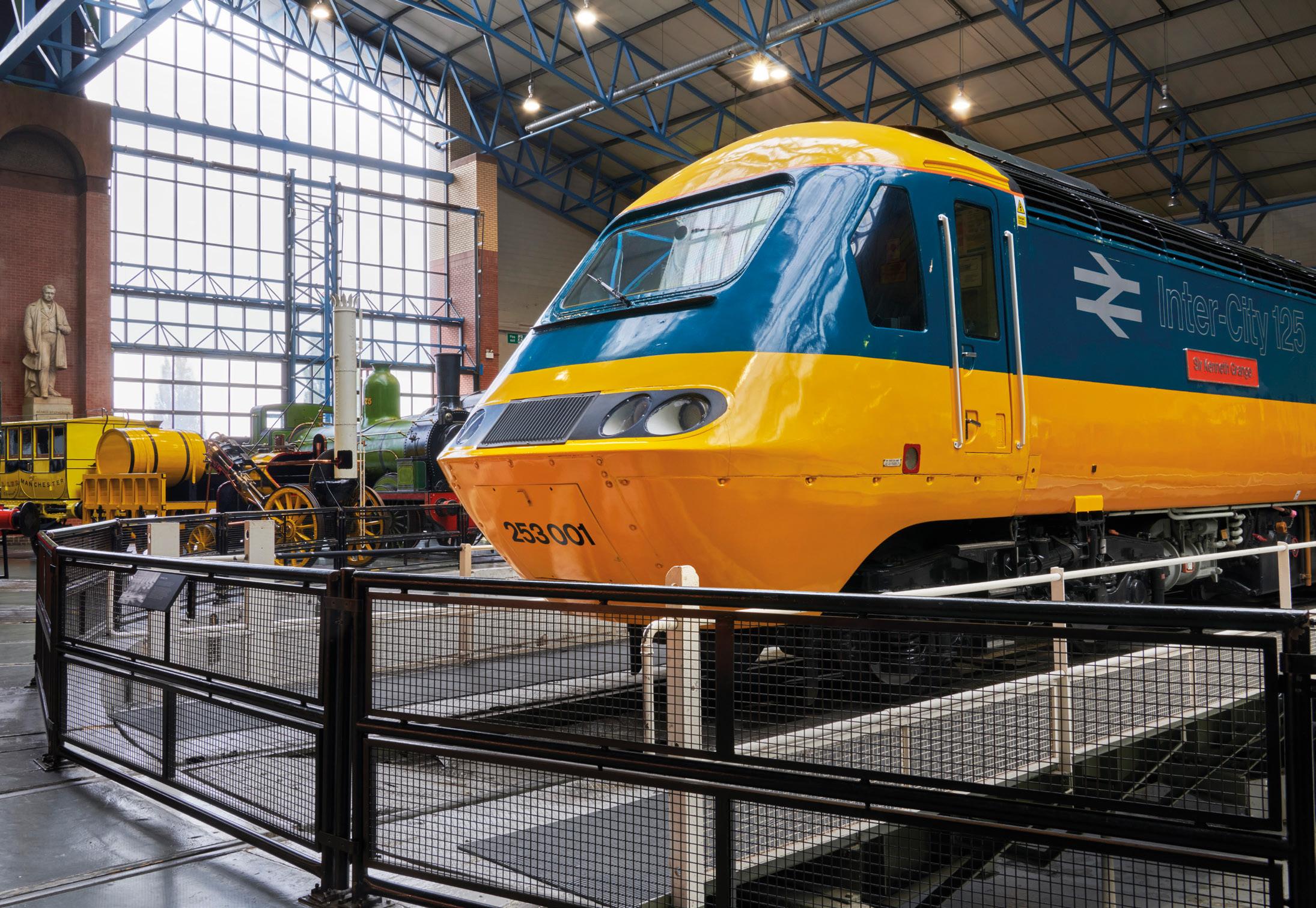
Preserving and protecting the UK’s railway heritage
The RHDAB was born in 2013, as the successor organisation to the Railway Heritage Committee (RHC), which itself was set up in the mid-1990s as part of the railway privatisation process. This organisation was put together to protect the many railway records and artefacts that exist from possible disposal and destruction at privatisation.
There was a perceived risk that the newly appointed private entities which would take on the various parts of the nationalised railway could unwittingly dispose of many valuable records and objects during the transition, and so the RHC, now the RHDAB, was granted powers to provide legal protection to items deemed worthy of such protection.
The RHDAB is a sub-committee of the Science Museum Group Board of Trustees, the latter providing the ultimate governance of the RHDAB, ratifying decisions made by the Advisory Board. No other industry in the UK has such powers to protect its history, highlighting the importance of the sector
Apart from the co-chairs, the RHDAB is populated by informed individuals with backgrounds or an interest in railway heritage, archives, national museums, train operators and Network Rail. There are also representatives from Scotland and Wales.
So far, the designation process has generated a register of over 1,000 items, ranging from archives to paintings, and locomotives to railway station signs. The approach has previously relied on localised
knowledge of the existence of interesting pieces around the industry, and, of course, the passionate interest of a few individuals, but this approach has nevertheless been very successful.
Going forward, however, the board has decided to add a strategic approach to complement the random approach, by carrying out a survey of many interested parties, to determine whether there are items or categories of items which are under-represented or, indeed, missing from the big picture.
When items are proposed for designation, the RHDAB members adopt a structured process, which considers the merits of the proposed item and its place in railway history. There is also a consideration as to where the item could be placed, if, indeed, it’s
HERITAGE 70 June 2024
Images: Science Museum group
HOPPECKE is an
in customised rail battery systems. Our energy storage solutions are used globally for railway applications.


We have the solution to your energy needs.
Proven FNC (NiCad) or valve regulated lead acid batteries ensure virtually maintenance-free operation, in a unique electrical and mechanical design. • Lithium-ion (Li-Ion) batteries offer superior energy storage and power management, including built-in thermal management in a fireproof housing. Contact us today. 01782 667305 rail@hoppecke.co.uk www.hoppecke.co.uk
expert
•
The simple objective of RHDAB is to tangibly preserve the UK railway story, for the benefit of current and future generations, and make sure that items can be made publicly available through the use of the many heritage organisations in the UK
not still in use, or where the item could be placed after it is no longer an operational item. There is a misconception that all designated items end up at the Science Museum Group (including the National Railway Museum and Locomotion), but this is not the case.
Homes are chosen based on which organisation is most suitable. For instance, while items with national significance are often best placed at a national museum such as the National Railway Museum, items from local areas are often more suited to a local organisation such as a museum or heritage railway.
Finding homes at various organisations also means that designations are not limited to what the National Railway Museum has capacity for. To find suitable homes for designated assets, RHDAB advertises items for two months. If a quick turnaround is required, organisations can request the advert is posted before an item is out of operation. Items are unlikely to be successfully designated if there isn’t a positive likelihood of placing the item somewhere where it can be looked after and made available for public viewing.
There are many positive examples of designation. For instance, the first HST 125 power car to emerge from the production line is 43002 (Sir Kenneth Grange) and is on display at the National Railway Museum, whereas HST power car number 43102 is on display at Locomotion in Co Durham. This power car was one of the pair which made the world record breaking diesel run of 148.5mph in 1987. A class 91 was recently transferred to the Museum of Scottish Railways. This vehicle was originally designated by the RHC in 1998. 91131 was the last high-speed locomotive built for British Rail and reached speeds of over 154 mph.
Other examples of designated items include the ‘All Aboard to Northampton’ Ticket Collection Display at Northampton Station. With the fast-approaching extinction of the physical railway ticket on the National Rail network, a practice dating back to the dawn of the railway age, RHDAB saw the importance of designating this collection of 1700 of the current Standard New Generation (SNG) card tickets. The aim is to collect a ticket to the city from every station in the UK. This collection remains in situ at Northampton Station, where it will stay until no longer required by the owner.
Looking ahead, the RHDAB is also collecting ephemera such as marketing campaigns and timetables. Corporate archives are covered by the Railway Industry National Archive designation, which covers the archives of all organisations in scope. Archives remain in scope as train operators change hands. It’s probably worth clarifying that the scope of RHDAB’s powers is anything which was previously in the public ownership before privatisation. Occasionally RHDAB may encounter items which are not in scope, but which merit protection. It is possible in this instance for the companies that own the items to opt in to having their assets considered for designation. For instance, Transport for London has opted in and regularly recommends artefacts for designation, such as the recently designated benches at High Street Kensington Station.
The simple objective of RHDAB is to tangibly

preserve the UK railway story, for the benefit of current and future generations, and make sure that items can be made publicly available through the use of the many heritage organisations in the UK.
The RHDAB is grateful to the many entities that own designated items for their goodwill and cooperation shown in getting items to the place where they can be accessed by the general public for the foreseeable future. If you would like to recommend an item for designation, please get in touch via the contact details on our website.
Our current consultation with the railway industry and heritage and culture sectors is very important in seeking to ensure that the big picture is clear and that our designated register is as complete as it can be. The survey takes just 15 minutes to complete. We gratefully look forward to inputs and suggestions from anyone who can inform that quest.
Visit https://rb.gy/w7hnda
Visit www.sciencemuseumgroup.org.uk/about-us/ railway-heritage-designation-advisory-board/ for more details about RHDAB.
About Tim Dugher
Tim Dugher is a Trustee of the Science Museum Group and was appointed as Co-Chair of the RHDAB in the summer of 2022 by the then Chair of the Board of Trustees of the Science Museum Group, Dame Mary Archer. Tim is a Chartered Engineer and career railwayman, having started work in the industry as an Engineering Apprentice in 1977. In the following years, he held many technical and managerial roles around the UK, mainly focused on rolling stock asset management, his last full-time role being that of COO at Angel Trains Ltd.
HERITAGE 72 June 2024


Security, Fire & Blast Doors, Louvre Panels and GRP Platforms/Walkways for the Rail Industry
With clients and projects such as TFL, EuroTunnel, DLR, Crossrail and HS2, Sunray is the Rail Industry partner when specifying Steel Door and associated products. Our consultative and practical approach ensure bespoke product solutions to meet performance needs without compromise to design.
With exceptional Door Size Ratios, Fire Ratings of 1-4 hours plus overrun and Security Levels 1-6 provide total assurance in today’s built environment together with extensive hardware and locking options, vision panels and overall RAL colours.
● SPECIALIST RAIL SOLUTIONS
● REFERENCE PROJECTS
● BESPOKE SOLUTIONS
● INSTALLATION & MAINTENANCE
● TECHNICAL SUPPORT
- Overground, Underground/TFL, DLR
- Crossrail, DLR, TFL, EuroTunnel
- Tailored designs to meet project criteria.
- Qualified, Compliant & Trained Operatives
- Consultative advice with complete back up concept to installation.
For more details, call our specialised team to discuss your particular project on:
sales@sunraydoors.co.uk
www.sunraydoors.co.uk
01233 639039
Manufactured, Tested, Specified, Certified
RBD Community’s Member Relations & Content Manager Fiona Broomfi eld tackles one of the most debated of marketing tactics…
What’s the story with whitepapers?


Iremember having quite an in-depth conversation with a member not so long ago who wanted to present a series of sales brochures as whitepapers to their target audiences. They thought they had all the right ingredients – products, services, key contacts, compelling solutions and reasons to buy. The problem was it wasn’t a whitepaper, I knew it, they knew it, and the target audience probably would too.
Why? It was missing one vital ingredient – insight. They had ‘Googled’ whitepapers and found lots of advice on presenting problems and solutions in whitepapers. Which arguably you can. But sales information doesn’t add the value that a well-crafted whitepaper can, and audiences know this, they can see the difference between a sales pitch vs insight.
Successful whitepapers lead with insight, not sales pitches. Save the pitch for your product brochures – which you can include in your RBD Rail Supplier Directory landing page. Lead with insight and analysis in your whitepaper to boost your credentials and to add real value for readers. We can share your


whitepapers in the Insights area of One Place and on LinkedIn, with thought leadership you’ll see a markedly different impact on your target audiences.
Simply put a promotional document isn’t a whitepaper. Whitepapers are typically substantial pieces of content conveying information that is useful, interesting and relevant to audiences. And used in business-to-business marketing (one company to another) to develop thought leadership and to capture quality leads. They can be used to showcase your expertise and to attract potential customers, but if you lead with insight, a whitepaper can be a key component of your marketing strategy, providing in-depth knowledge on industry topics helping you to establish authority, influence and trust.
Why publish a whitepaper?
There are many benefits to publishing whitepapers: Establishes your credibility, authority, influence and trust – whitepapers are based on evidence, so your audience is less inclined to see it as an overt sales pitch and more inclined to believe and trust the information you present.

Generates sales – typically whitepapers convert well as they are educational – and therefore more interesting.
Increases engagement – highly shareable content – posting on social and emails can increase brand engagement.
Increases your potential reach – promoting a whitepaper that people can download free of charge is a good way of building a following and getting them to sign up to your newsletter.
What do whitepapers offer?
Insight on relevant topics.
Research findings and conclusions.
Interesting data insights.
Problems – and solutions.
Brand specific solutions – not presented as a sales pitch.
Technical information.
74 June 2024
Educational information.
Business challenges.
An opportunity to position your brand as a thought leader on a particular topic or area of expertise in your industry.
What should I include in a whitepaper?
Most whitepapers are essentially persuasive, authoritative research findings/reports on a topic which is relevant and useful to your target audiences and presented to them in a branded document. Topics can include everything from rail reform, strategic plans, transformation, decarbonisation, sustainability, digitalisation, trends and developments and technical information to the case for adopting new systems, ways of working, software, and more.
Identify what you want to talk about, do the research, and invest time in writing your whitepaper. It’s useful to create an outline of what it will include, give it an attention-grabbing title and strong introduction, story, and conclusion/take aways. There are lots of useful guides to help you available online.
How to promote your whitepapers
Create a landing page to introduce your whitepaper and give people compelling reasons to download it.
Make sure you include a form to access it to capture that all important lead data.

Promote your whitepaper on LinkedIn, all company social platforms and your website –with a link to your landing page so people can complete the form and access it easily.
Send your whitepapers to fiona@ railbusinessdaily.com to add to the Insights and Reports area of the member portal One Place and she will also share it on LinkedIn for you.
Send a press releases about your whitepaper to industry journalists and bloggers.
Leverage your existing mailing list and share your whitepaper with your existing audiences.
Host a webinar about your whitepaper content or promote it at your next speaking event.
Measuring success
Whitepapers offer invaluable content, and this can help you to generate solid leads. They build thought leadership and help you build an authoritative brand. Offer them as gated content and they’re also an effective way to build your mailing list. Measure how many times your whitepaper has been downloaded, how many social shares and impressions it achieves and make sure that you track landing page engagement time, active users, click through rate, conversions and total revenue generated. There are free and paid tools available to help you with this.
Whitepapers offer invaluable content, and this can help you to generate solid leads. They build thought leadership and help you build an authoritative brand
ARE Rail and Infrastructure and more.







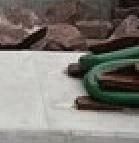


SOLUTIONS THAT ARE LOW CARBON AND HIGHLY BESPOKE. THAT’S SMART, THAT’S IBSTOCK. Let Ibstock take you a step closer to net zero. Introducing our range of low carbon, precast concrete platform solutions. Delivering up to a 76%* reduction in embodied carbon, our G-Tech Coper and Trestle Slab Coping range offer unrivalled sustainability – without compromising on operational quality. WE
T: 0333 234 3434 E: anderton.rail@ibstock.co.uk W: ibstock.co.uk *based on a comparison between new and previous mix design
75 June 2024

Alstom is a market-leading provider of new trains, train services, signalling solutions, and rail infrastructure. sales@transport.alstom.com www.alstom.com 01332 344 666

Anturas Consulting Limited is a trusted infrastructure management consultancy business. It supports and advises clients as they deliver major projects, prioritising agility, continual learning, and strong partnerships. info@anturasconsulting.com www.anturasconsulting.com 0131 228 3508

Bender UK focusing on electrical safety, installing over 1,000 signal protection systems, and specialising in monitoring, software, and predictive maintenance solutions. info@bender-uk.com www.bender-uk.com 01229 480 123
SCAN ME

BODE specialise in modular door systems, boarding safety management units, level access steps and interiors for all train types based on proven OE components. info@bode-global.com www.bode-global.com 01908 224 140
SCAN ME

Diamond is the go-to industry partner for innovative and collaborative working relationships, delivering high quality and value-added services throughout the rail sector. sales@diamondrail.co.uk www.diamondrail.co.uk 0114 257 0909
SCAN ME

Edmundson Electrical offer solutions for cable, containment, renewables, EV charging, lighting / LED upgrades, heating, ventilation, tools and more. Adam.funnell@eel.co.uk www.edmundson-electrical.co.uk 07920 134790
SCAN ME

GeoAccess utilises highly experienced Geotechnical and Structural Engineers coupled with UAVs, ROVs, Rope Access and Confined Space Techniques. info@geoaccess.co.uk www.geoaccess.co.uk 0333 772 2315
SCAN ME

Dywidag work to make infrastructure safer, stronger, and smarter with data-driven systems extending the lifespan of new and ageing track, roads, tunnels, and bridges. sales.uk@dywidag.com https://dywidag.com/ 0161 797 5511

SCAN ME

Jewers Doors Ltd specialises in the design, manufacture, and installation of industrial doors including the Swift-SEW, which was developed for rolling stock entrances on stabling halls and maintenance depots. sales@jewersdoors.co.uk www.jewersdoors.co.uk 01767 317 090
SCAN ME
SCAN ME
SCAN ME
DIRECTORY 76 June 2024


power up your journey



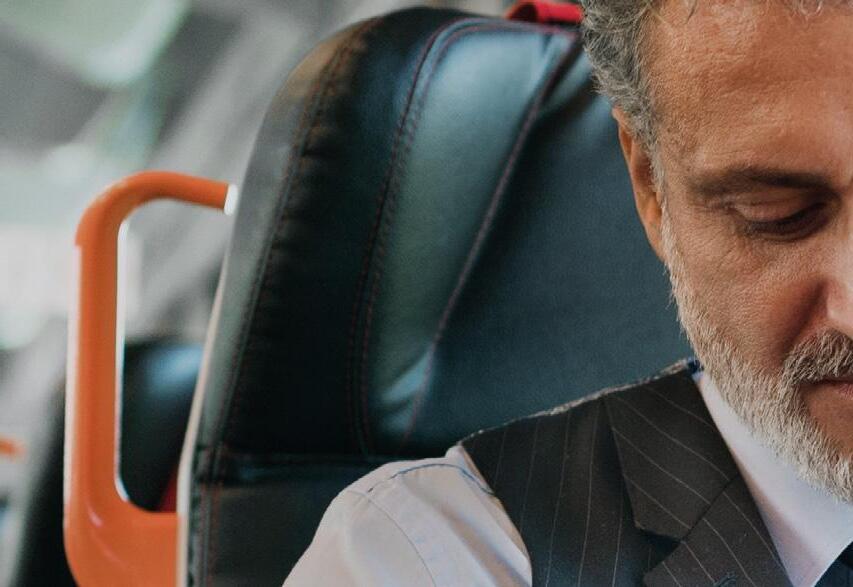



REPLACE USB MODULES ON-SITE, IN MINUTES //
OE’s patented, replaceable TUF-R USB modules are designed to be easily repaired when they incur damage or swiftly upgraded as technology advances.
With our proprietary TUF removal tool and exchangeable modules, you can replace TUF-R USBs on-site without need for an electrician or turning the power o .
FIND OUT MORE: transport.oeelectrics.co.uk

















Railway Approvals company a DB



Jobson James Rail is a national specialist railway insurance broker, the market leader in the UK by a huge margin with over 550+ rail clients across the UK, Middle East and Australasia. keven.parker@jjrail.co.uk jjrail.co.uk 07816 283949
Jobson James Rail is a national specialist railway insurance broker, the market leader in the UK by a huge margin with over 550+ rail clients across the UK, Middle East and Australasia. keven.parker@jjrail.co.uk
jjrail.co.uk 07816 283949
Mechan holds an extensive maintenance equipment portfolio including a range of rail products such as bogie and wheel drops, lifting jacks, rail shunters, and wheel lathes. info@mechan.co.uk www.mechan.co.uk 0114 257 0563
Mosdorfer Rail offer a comprehensive range of products, including complete catenary systems, cantilevers, tensioning systems (Tensorex C+), clamps, connectors, and composite insulators. stuart.woodsell@mosdorfer.com www.mosdorfer.com/ 0114 387 8370
DirectoryDEC.indd 11
DirectoryDEC.indd 11
SCAN ME SCAN ME
SCAN ME

16/01/2024 17:45
16/01/2024 17:45
Cleanliness is a key driver of passenger satisfaction. With sustainability driving our decision-making you can trust us to find a tailored solution to help you achieve exceptional results. sales@paragongroup.co.uk www.paragongroup.co.uk 0131 653 2222
SCAN ME

Pennant International Group offers a range of professional rail services, focusing on technical documentation, training, route learning, and more. sales@pennantplc.com www.pennantplc.com 01452 714914
SCAN ME
PriestmanGoode uses strategy, design, and innovation to define future experiences for some of the world’s leading brands. studio@priestmangoode.com www.priestmangoode.com 020 7173 9869
SCAN ME

The Rail Safety and Standards Board is the independent safety, standards and research body for Great Britain’s rail network. training@rssb.co.uk www.rssb.co.uk 020 3142 5300
SCAN ME

Senceive’s intelligent monitoring technology protects people and infrastructure. The firm’s wireless condition monitoring products help construction and maintenance teams to work with confidence. info@senceive.com www.senceive.com 0800 033 7731
ME

Serco UK is a trusted partner to governments around the world. Bringing together people, technology, and partners, it develops innovative solutions for transport and defence. enquiries.srts@serco.com www.serco.com 01256 745 900
SCAN
SCAN ME
SCAN ME
SCAN ME
DIRECTORY 78 June 2024


Sixis Technology Ltd designs and manufactures Havspro, a cutting-edge vibration measurement and monitoring solution. havspro@sixistechnology.com www.havspro.com 01332 547 148

STAUFF are proud to manufacture and develop fluid power components, manipulated tube products, and finished kits. Tested, sealed and ready to install on production lines. uk.sales@stauff.com www.stauff.co.uk 0114 251 85 18

Steroplast Healthcare manufactures and supplies a wide range of healthcare products – many of which, are used in railway stations and on trains. enquiries@steroplast.co.uk www.steroplast.co.uk 0161 902 3030
SCAN ME

Imagine as a train operator being able to clean every train every day – introducing the 3m x 1m footprint of The Orange Train Wash. sales@theorangetrainwash.com www.theorangetrainwash.com 07799 322 338
SCAN ME

Traction Rail Electrical Ltd. provide a range of solutions that include design, engineering, consultancy, installation, supervision and management, to the undertaking of complete packages of works. thecompany@tractionrail.com www.tractionrail.com 020 8462 6322
SCAN ME

Victa Railfreight Ltd provide competent mainline drivers, ground staff and driver operators to all freight train operators and increasingly to passenger train operator companies across the UK. enquiries@victa-railfreight.com www.victa-railfreight.com 01622 690978

VolkerWessels UK is a leading multidisciplinary infrastructure contractor, delivering innovative engineering solutions across the civil engineering and rail construction. www.volkerwessels.co.uk 01992 305 000
SCAN ME

UK Power Networks Services solve your energy challenges through innovative solutions, delivering resilience, cost efficiency and sustainability to deliver a bright energy future. www.ukpowernetworksservices.co.uk 020 7397 7845
SCAN ME

Zonegreen specialise in modern rail depot protection and are regarded as the world market leaders with the SMART Depot Personnel Protection System (DPPS). info@zonegreen.co.uk www.zonegreen.co.uk 0114 230 0822
SCAN ME
SCAN ME
SCAN ME
ME
SCAN
DIRECTORY 80 June 2024
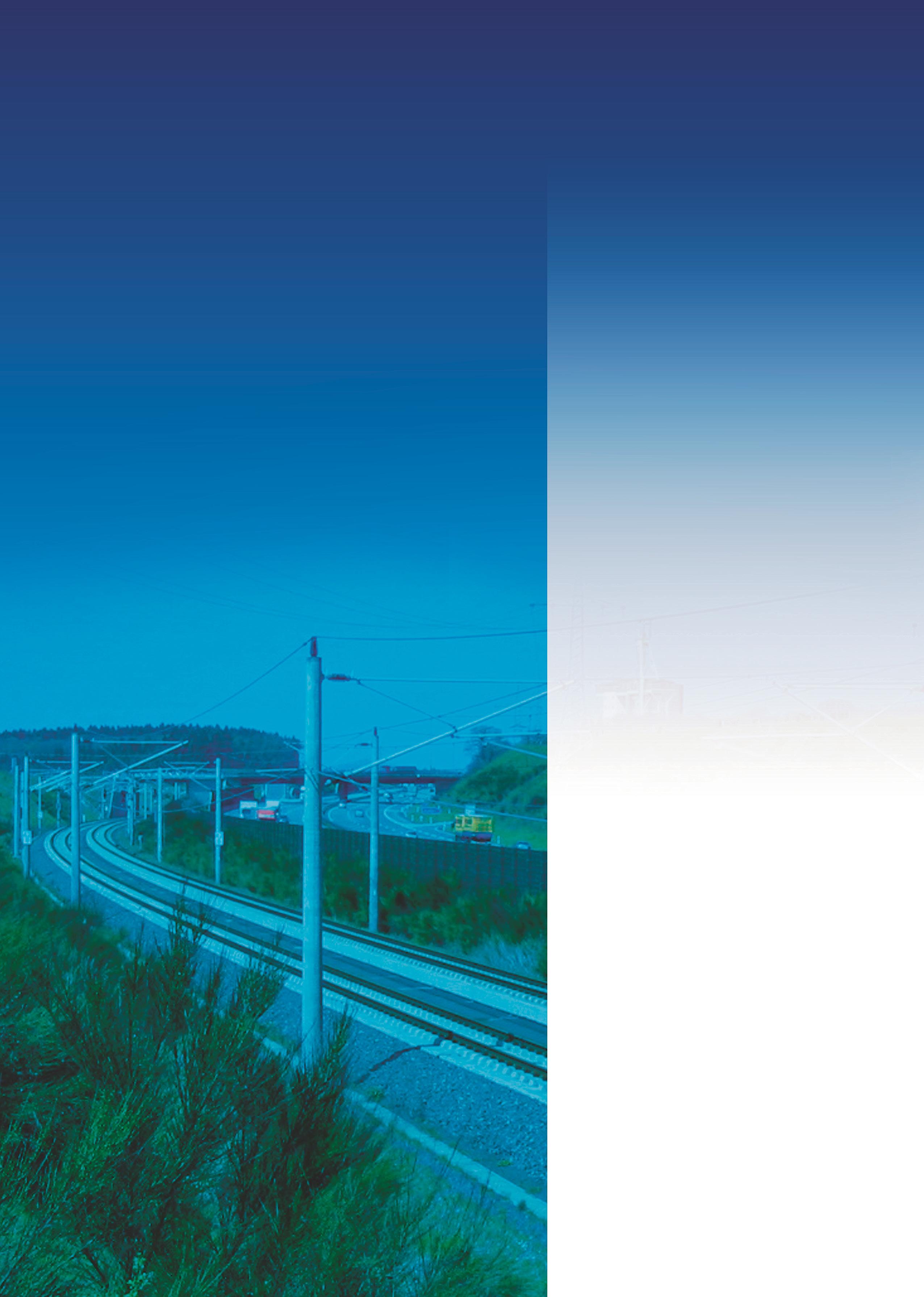



Jamie Zineldin has been appointed Operations Director at McGinley Support Services, in what has been a 25-year journey at the company



From Track Operative to Operations Director



What is your reaction to being appointed Operations Director?
I was delighted to be offered the position. My journey from digging wet beds and changing sleepers to becoming Operations Director feels like achieving a major life goal, akin to getting married or having children. With the full support of our MD, Colin Edge, who encouraged me to apply, and the opportunity provided by Sean and Dermot McGinley, I am incredibly grateful.
Did you always hope to work your way up the business?
Absolutely. From the beginning, I was eager to advance within McGinley, a company I have always loved. Throughout my career, I have worked in various locations, building strong relationships with the workforce and clients. These experiences have been invaluable, teaching me important life lessons and ultimately leading me to where I am today.
What advantages do you bring to the role, particularly having had such a remarkable 25-year journey within the company?
My extensive experience within the company, from the ground level to the executive office, allows me to understand the business from all perspectives. This insight is crucial for effective problem-solving. I can
relate to both the workers on the ground and the back-office staff, having worked in numerous sites and offices across the UK. This knowledge helps me bring the entire business closer together.
What would be your one piece of advice to anyone starting in the rail industry?
Embrace it and persevere. The rail industry offers fantastic opportunities at every turn, providing a lifelong career whether you prefer working on-site or in an office planning projects. I’ve been fortunate to experience both, all under the umbrella of McGinley, which has offered me numerous opportunities.
What are your aims and aspirations as Operations Director?
My aim is to elevate the company to the next level within the industry. I am committed to supporting our site workforce and colleagues in developing the necessary skills to make a significant impact both on-site and in the office. I also aspire to nurture the next generation within the industry, helping them thrive in their chosen careers.
There is a well-publicised shortage of rail workers in the years ahead. What is going to be the key to overcoming that, and how important is the role of McGinley in achieving this?
You’re right, there is a national shortage, and McGinley has always been at the forefront of training and apprenticeship programmes. Supporting the younger generation through apprenticeships and advancing our experienced track workers internally is crucial. This approach will help bridge the gap and secure a successful future for the industry.
Are you optimistic for the future?
Absolutely. I am now in a position where I can make a real difference. Over the past 25 years, the industry has evolved into a safer and better place to work. If we continue to build on these improvements, the future of both the company and the industry looks very promising.
The rail industry offers fantastic opportunities at every turn, providing a lifelong career
June 2024 82 MOVERS AND SHAKERS
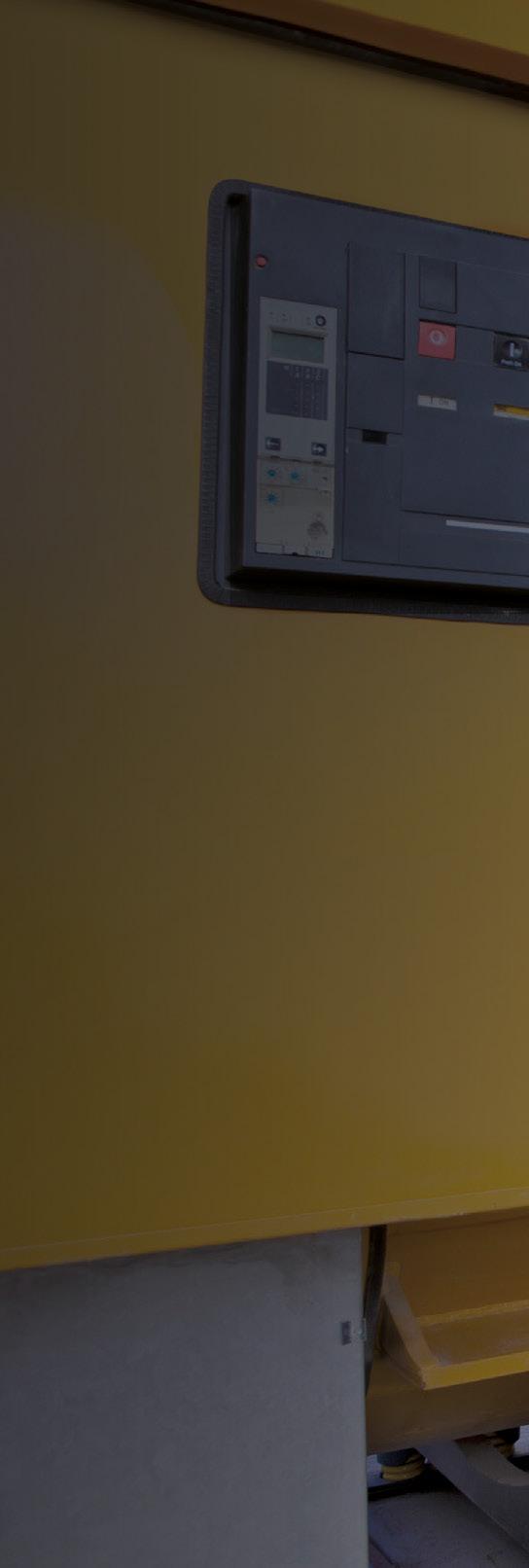



SAFER
GREENER
SMARTER

5 FOR THE PRICE OF 4
BUY FOUR PACKS OF 10 OIL CONDITION MONITORING TESTING KITS AND GET A PACK OF 10 TESTING KITS FREE!
THIS IS THE PERFECT OPPORTUNITY FOR BUSINESSES OPERATING IN THE OIL AND GAS INDUSTRY OR TRANSPORTATION SECTOR TO ENSURE THE HEALTH AND EFFICIENCY OF THEIR EQUIPMENT
In the oil and gas industry, regular oil condition monitoring is crucial to prevent costly breakdowns and ensure optimal performance. Our testing kits allow you to easily analyse the condition of your oil, identifying any contaminants or abnormalities that could lead to equipment failure. By catching potential issues early on, you can save time, money, and avoid unnecessary downtime.

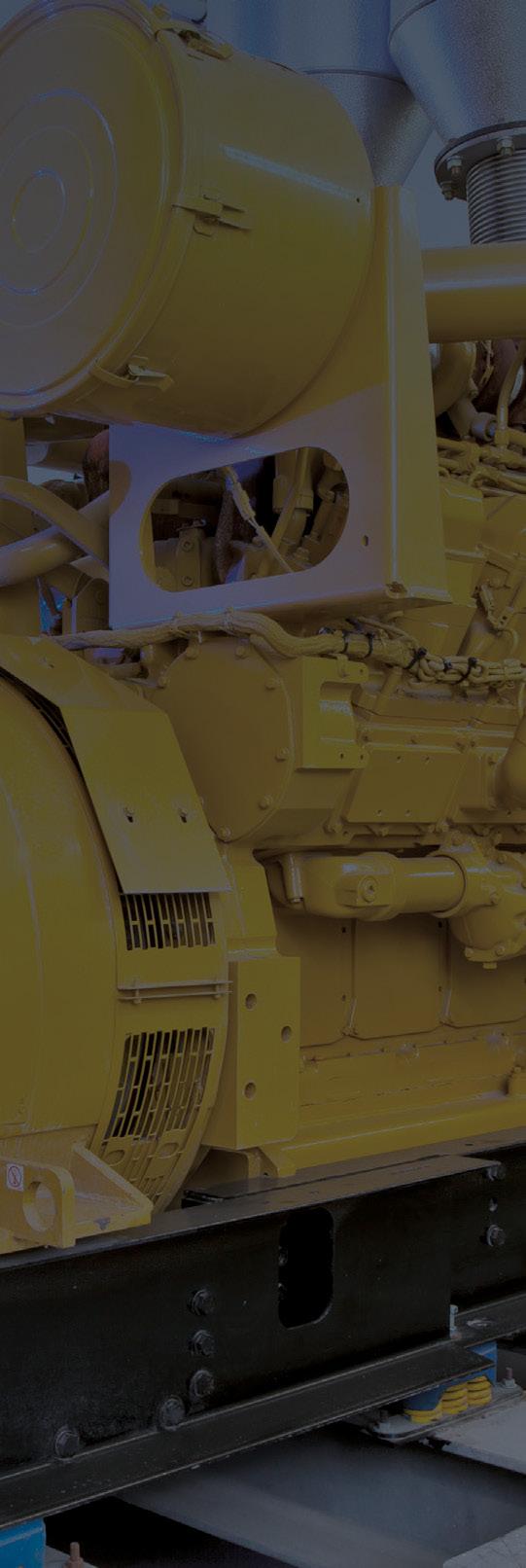
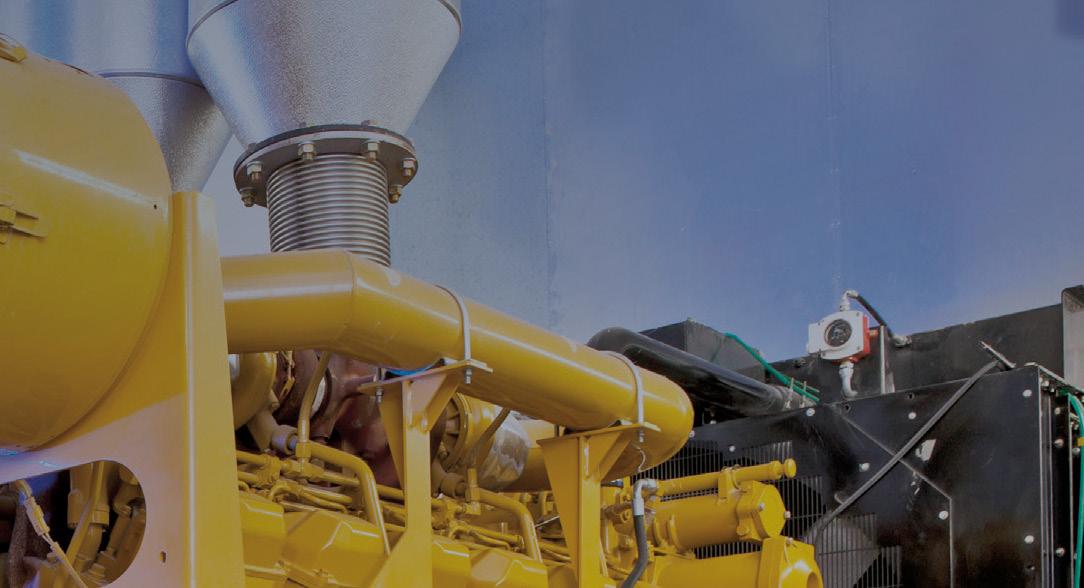
Fast and accurate analysis of lube oil, grease and hydraulic fluids with SGS
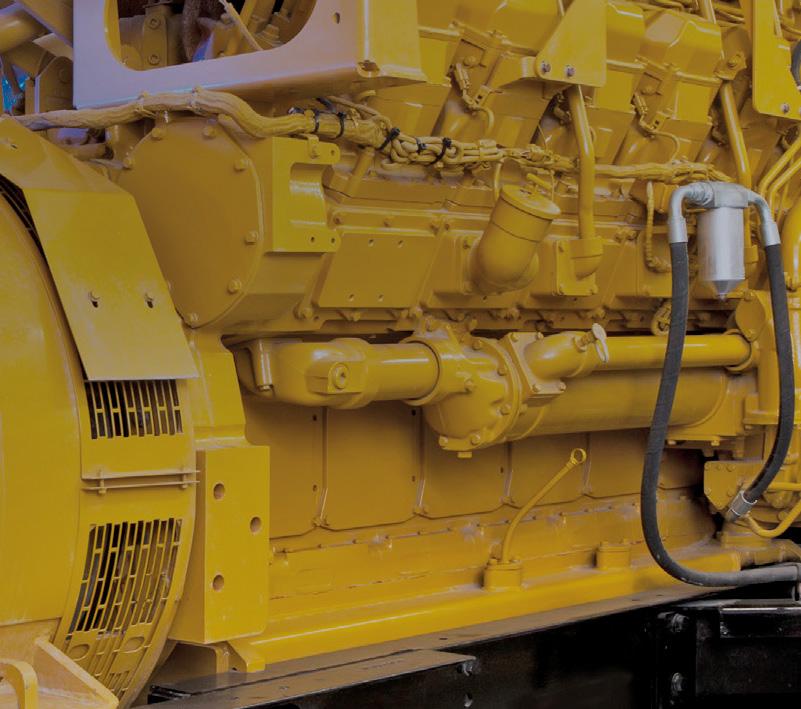


Transportation companies also rely on oil condition monitoring to keep their vehicles running smoothly.
Whether you own a fleet of trucks, buses, or even personal vehicles, our testing kits can help you maintain top-notch performance. By regularly checking the condition of your oil, you can detect any signs of wear or contamination that could compromise your engine’s efficiency and longevity.
Regular oil condition monitoring is crucial to prevent costly breakdowns and ensure optimal performance. Our testing kits allow you to:
• Easily analyse the condition of your oil
• Identify any contaminants or abnormalities that could lead to equipment failure
Catch potential issues early and you can save time, money, and avoid unnecessary downtime.
Don’t miss out on this fantastic deal. Invest in the future of your business by purchasing our oil condition monitoring testing kits today.
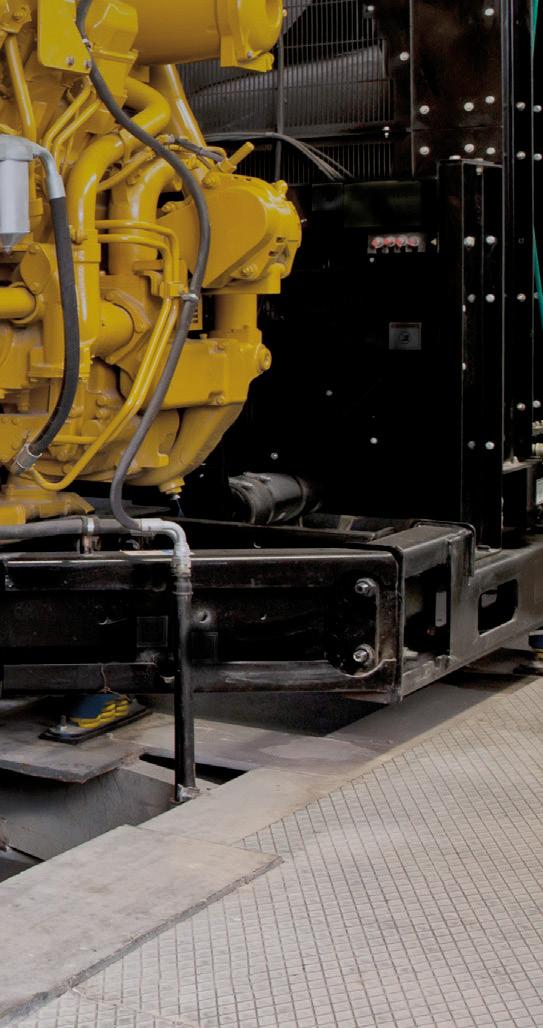
Take control of your equipment’s health and efficiency - order now!
We are SGS – the world’s leading testing, inspection, and certification company. We are recognized as the global benchmark for sustainability, quality, and integrity. Our 98,000 employees operate a network of 2,650 offices and laboratories, working together to enable a better, safer, and more interconnected world.
CONTACT US:
Rossmore Industrial Estate, Inward Way, Ellesmere Port CH65 3EN
+44 151 350 6600
© SGS Société Générale de Surveillance SA. (2023)
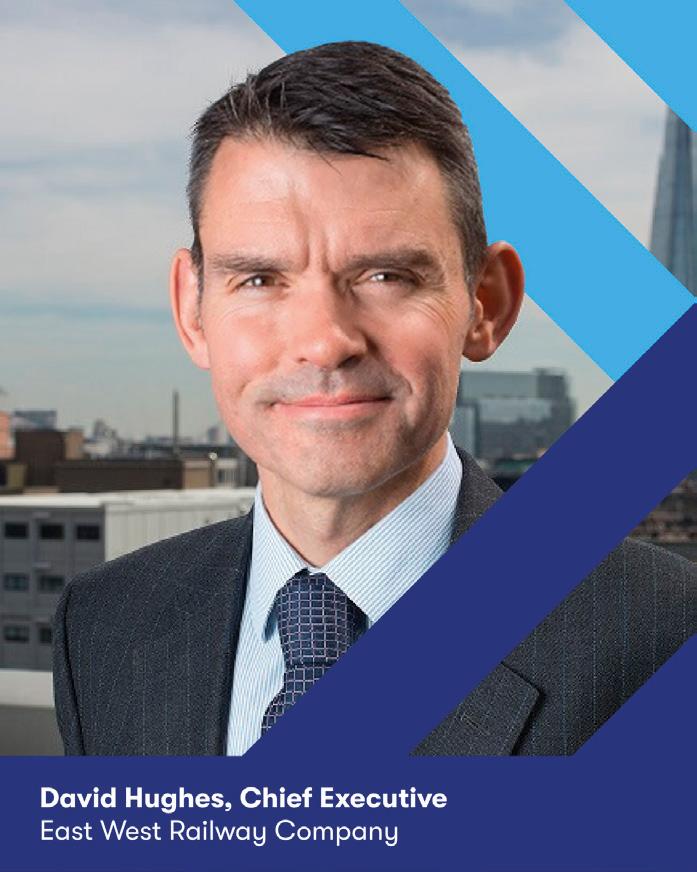


Noel Travers appointed new RIA Chairman
The Railway Industry Association (RIA) has announced that its board has appointed Noel Travers as RIA’s new Chairman. He succeeds David Tonkin, who is standing down after seven years in the post, starting this month (June).
Noel, the Managing Director of international railway engineering solutions and services firm, and RIA member, XRail, has extensive experience
David Hughes to take over as CEO of East West Rail
East West Railway (EWR) Company has announced the appointment of David Hughes as Chief Executive Officer, effective from this month (June)
David joins EWR from ARUP where he has been Major Programmes Director. He has a long track record in developing and delivering the biggest transport programmes in the UK, with a career that spans serving as Director General responsible for Rail Infrastructure in the Department for Transport, Programme Director at Transport for the North, and Investment Planning Director at Transport for London.
David’s appointment comes as EWR embarks on the next phase of its development, launching the first phase of statutory consultation this summer.
He commented: “I’m very excited to be joining the EWR team at this important moment. I’ve spent
my career to date delivering transport connections that both make a real difference to the lives of the communities they serve and boost economic growth as well.
“EWR epitomises that – it’s a real opportunity to improve the quality of life for people living locally with faster and more frequent connections to the places they want to go, and it can also be a huge win for the UK economy as a whole.”
Neil Sachdev, Chair of EWR Co, said: “I’m so pleased that David will be joining us as our Chief Executive. He brings a proven track record in delivering major transport programmes, and a real commitment to the promise that EWR offers, both for better public transport in local communities but also in unlocking growth in this world-leading region for science and technology.”
Alice Coverlizza to lead Trainline Partner Solutions
Trainline Partner Solutions, the award-winning B2B arm of Trainline and a leading distributor of global rail content, has appointed Alice Coverlizza as Vice-President to lead the business.
Trainline is Europe’s leading independent rail platform, and through Trainline Partner Solutions (TPS) it provides partners with access to its Platform One technology, making rail travel easier and more attractive to wider markets.
Alice will lead all elements of TPS: Global Distribution, which provides indirect ticket sales through partnerships with retailers in the business travel market; IT Solutions, which provides white label services to carriers and other retailers in the UK and internationally; Trainline Business which recently launched a new platform to retail directly to businesses, particularly SMEs; and Trainline’s supply
and deep knowledge of all aspects of the railway industry, including infrastructure, rolling stock and the supply chain.
He said: “It is a great honour and privilege to become Chairman of the UK’s oldest and most distinguished railway trade association, especially as it approaches its 150 year anniversary in 2025.
“Both the start of a new Control Period, CP7, and a new post-election Government, whatever its colours, this year are real opportunities to restate the hugely important role the UK rail supply sector plays in creating jobs and GVA across the national economy, as well as supporting innovation and skills in rail.
“I look forward to working with Chief Executive Darren Caplan, and the full RIA team, to play my part in helping to take RIA to the next level for its members and to build a bigger and better railway industry at this pivotal moment in the history of UK rail.”
RIA Chief Executive Darren Caplan added: “I am delighted on behalf of the RIA board, members and team, to welcome Noel to RIA as our incoming Chairman. Noel has decades of expertise and insight from across the rail supply chain and will bring great perspective and insight to our board deliberations
relationship with carriers across Europe.
Alice, who joins from Everli, where she was Chief Business Officer, said: “I’m looking forward to working with our partners across the business travel sector to help make access to rail travel simpler and more seamless. This is an exciting time to join Trainline, with business travel levels in both the UK and Europe continuing to recover, and more interest than ever in rail from the business travel market.”
Pete Wade, Trainline’s Chief Commercial Officer, said: “Alice is a great appointment and I know she will lead our TPS team from strength to strength. We want to make Trainline the world’s number one rail platform and Alice will have a key role leveraging the ongoing strength of our platform to support our travel partners in the B2B market.”
and strategic direction going forward.
“I also wish to place on record our immense thanks to outgoing Chairman David Tonkin who has provided outstanding leadership and support to the board, the RIA team and myself during his tenure. We wish him well as he retires from rail and pursues other interests.”
It is a great honour and privilege to become Chairman of the UK’s oldest and most distinguished railway trade association
Image: East West Rail
Image: Trainline
MOVERS AND SHAKERS 84 June 2024
Image: RIA

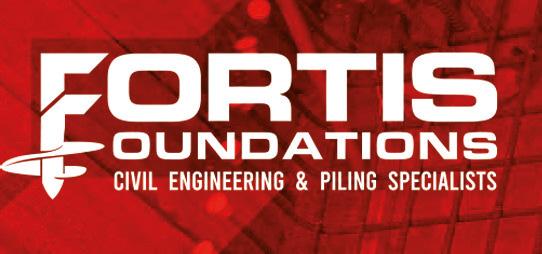
Providing civil engineering products and services, with expertise in foundations and piling to the Rail, Civils, Energy, Residential and Water sectors

With over 20 years of Rail and Construction industry experience, our familyrun company provides expert advice and cost-effective solutions to all sectors looking for experts that they can rely on. Delivering safe and sustainable solutions at the forefront of innovation and technology, ensuring the highest quality results first time, every time. We can assist clients from advisory and design to compliance and delivery, providing tailor-made solutions to meet clients’ needs.
Installation of all Piled foundation - bored, driven & screw piles
Erection and installation of OHL Gantry structures (masts, booms)
RED, LOC and DNO foundations and platform installations (GI, Design & Install)
Platform renewals and refurbishments
Cess walkways and throughing routes
Fencing and Access stairways
Site compound establishment and access road
Trial Holes
Excavation and installation of concrete bases
Embankment stabilisation & Cess retention
De-vegetation
Piling and Soil nails
Rabbit Netting
Gabian Walls









Visit our website for more information or give us a call: 01442 731 321 info@fortisfoundations.com www.fortisfoundations.com 5 Concorde Drive, Gadebridge, Hemel Hempstead, HP2 4AW
Samaritans deliver a one-day Managing Suicidal Contacts course to rail staff, either virtually or face to face, training them on how to identify, approach and support a potentially suicidal person
More than 30,000 rail staff trained to help prevent suicide

e know that one in five people have suicidal thoughts – this partnership with Network Rail means if people need someone to talk to when in crisis, they will not be alone, and help is there for them.” That is the message from Olivia Cayley, the Head of Rail Programme at Samaritans.
In the last 14 years, more than 30,000 rail workers have done the charity’s Managing Suicidal Contacts programme, giving them the confidence and skills to identify vulnerable people and start a conversation to get them to safety. Thousands of potentially life-saving interventions have been made.
Olivia added: “Our partnership with Network Rail started in 2010 – and its impact is immense. In recent years, people have had to deal with a global pandemic and the cost-of-living crisis, which has had a huge impact on people’s wellbeing. Having the knowledge and confidence to reach out to someone in distress and offer your time to listen and help is hugely beneficial.”
Those attending the training are taught how to recognise someone who may be suicidal, and how to approach them and start a conversation. They are taught some of the essential listening skills that underpin Samaritans’ services and how to safely resolve a situation and refer a person to friends, family, the British Transport Police (BTP) or

Samaritans to receive further support.
Craig Munday, a Mobile Operations Manager at Network Rail, is just one of the many beneficiaries of the Managing Suicidal Contacts training.
He said: “I did the training online during lockdown and it was amazing. The main thing that stuck with me is how little time someone harbours suicidal thoughts and how just asking them a question could break that thought. It changed the whole way I look at things when I’m out and about at work and at the stations.
“If I see someone who looks upset, I make sure I go up to them and start a conversation, asking ‘Are you okay, are you waiting for a train?’. I think I was always cautious, but it’s made me more confident to approach people – you never know who you’re going to help just by saying ‘hi’.
“We have some new guys starting as mobile managers soon and I’m encouraging them to do the training. It’s a brilliant subject to be trained in to help people before an emergency and it’s great that Network Rail has embraced it.”
The rail industry and BTP work in partnership with Samaritans to reduce suicides on the railway and support those affected by them. As well as suicide prevention training, the programme aims to work with the railway and within the wider community to de-stigmatise suicide and promote help-seeking behaviour.
This partnership with Network Rail means if people need someone to talk to when in crisis, they will not be alone, and help is there for them
Anyone can contact Samaritans for free any time from any phone on 116 123, which won’t show up on a phone bill, or email jo@samaritans.org or visit www.samaritans.org
“W
Image: Network Rail
AND FINALLY... 86 June 2024
Image: Shutterstock

RSN 2024
Rail Show


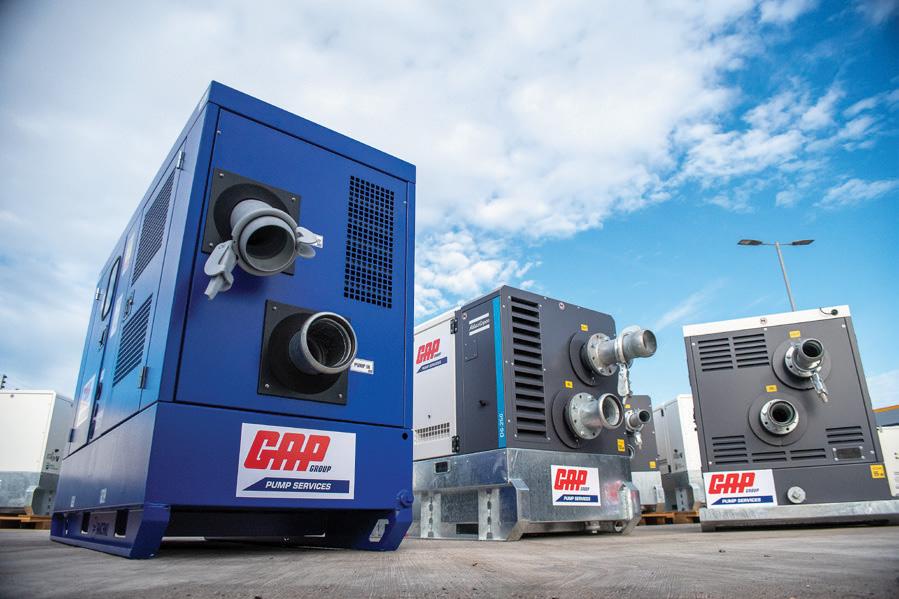

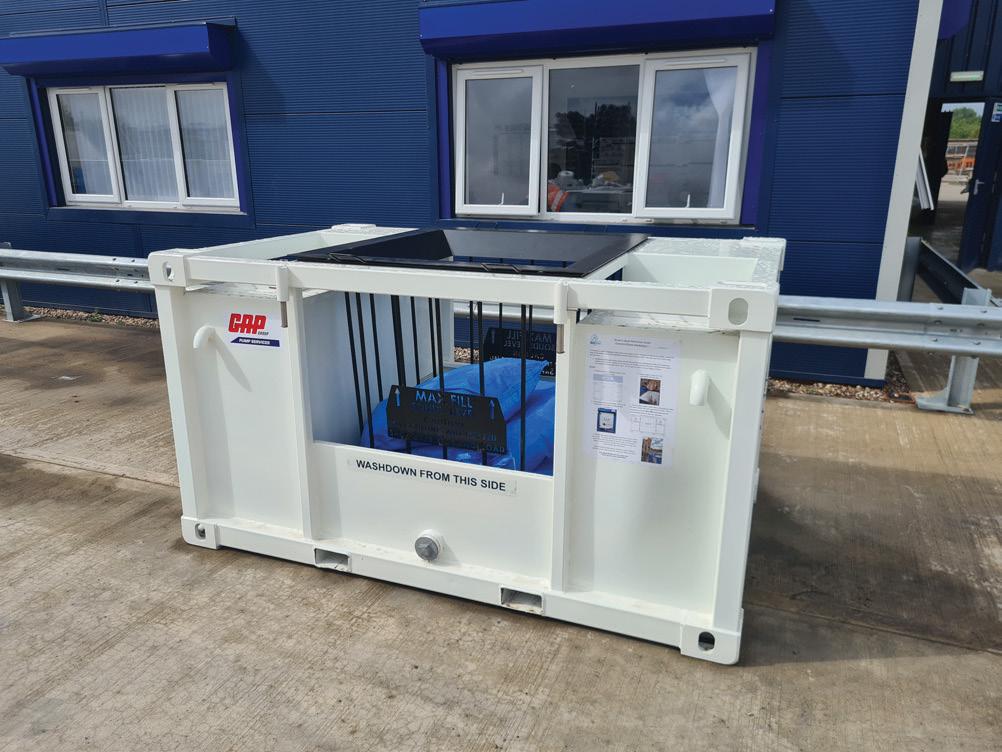




PUMP SERVICES
Rapid Response Pumps













































































































 Danny Longhorn Editor
Danny Longhorn Editor































































































































































































































































 Laura Hedley, Senior Occupational Psychologist at the OPC, discusses why
Laura Hedley, Senior Occupational Psychologist at the OPC, discusses why













































































































































